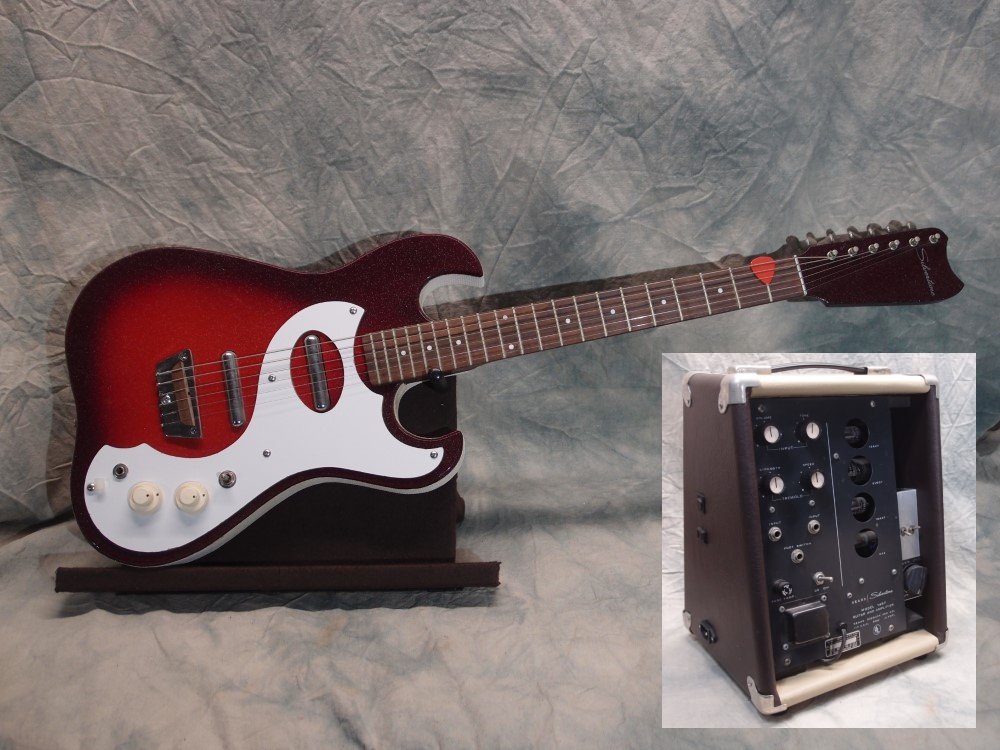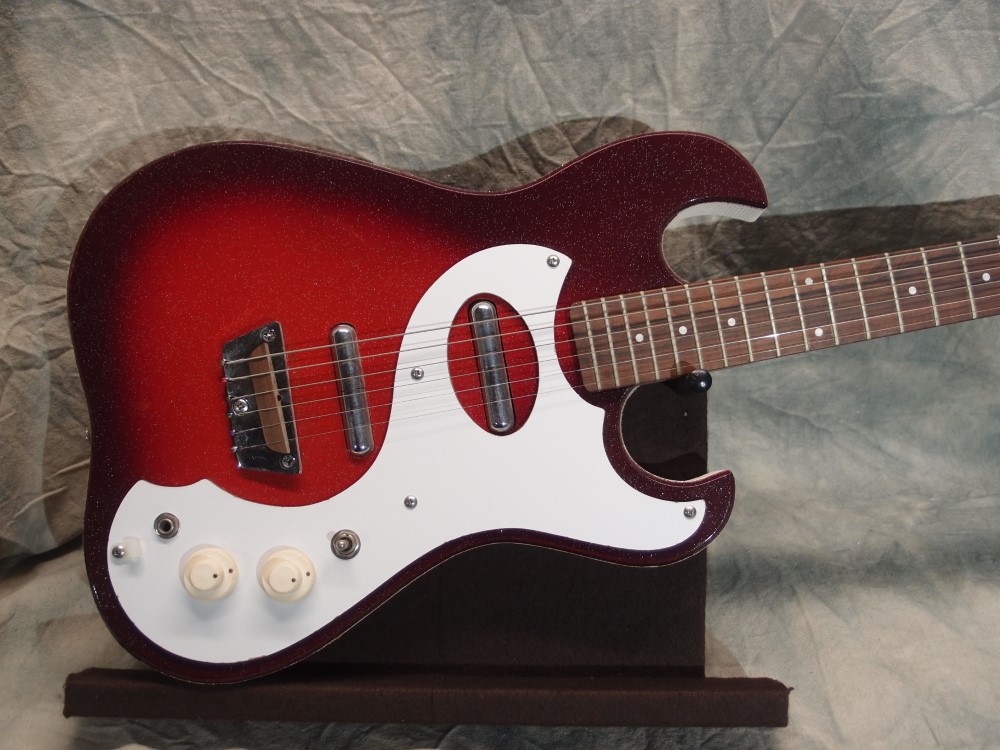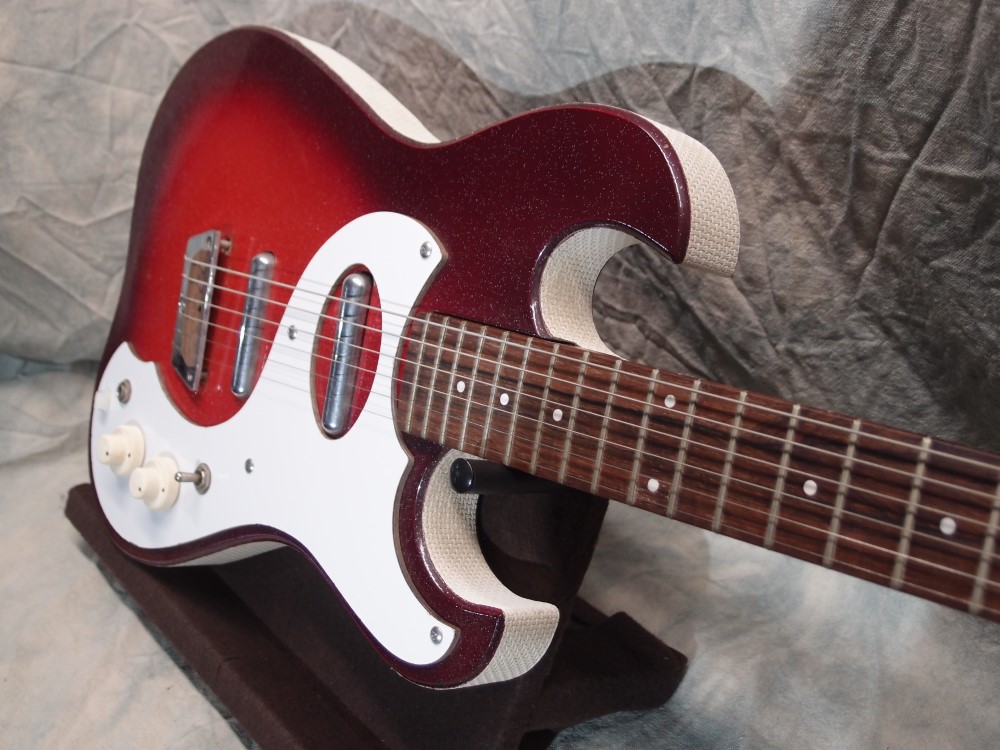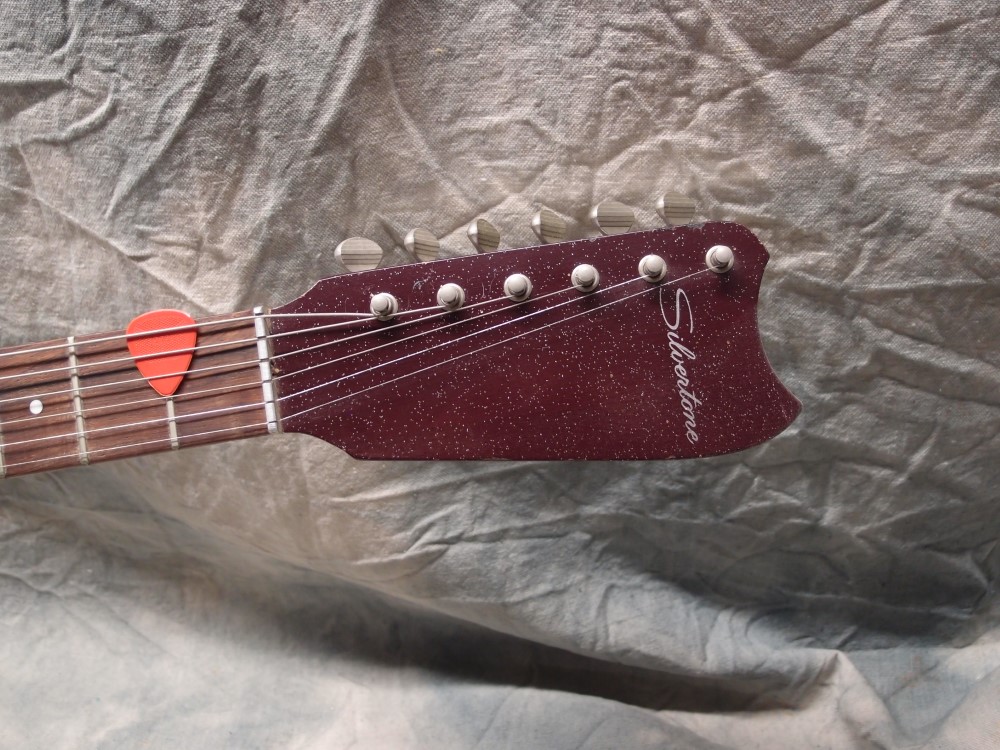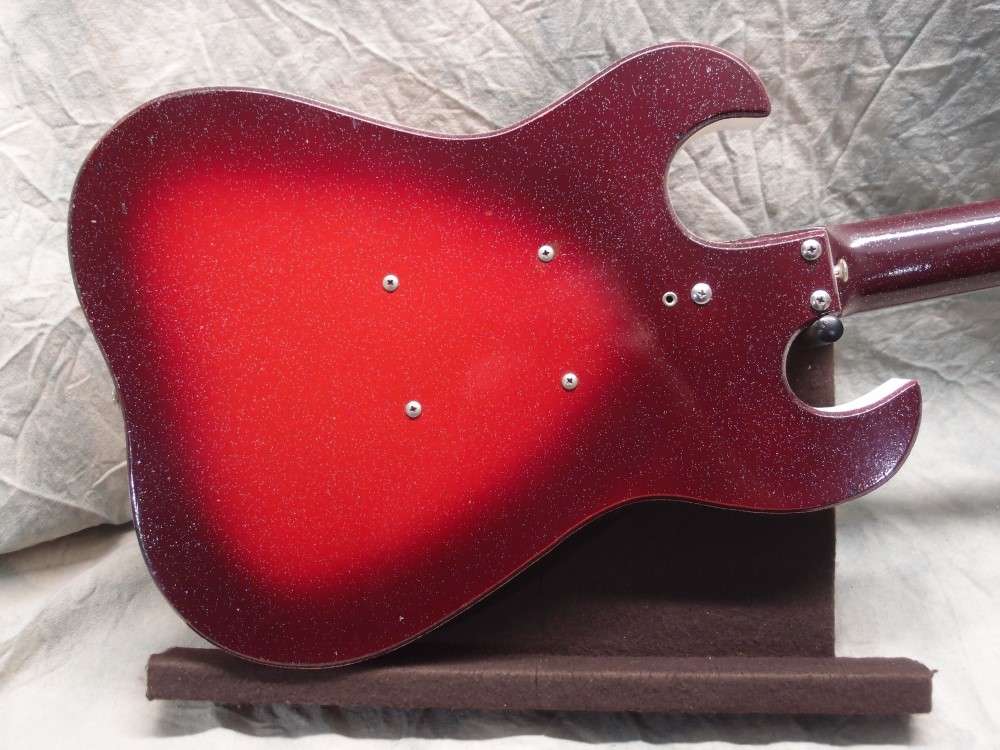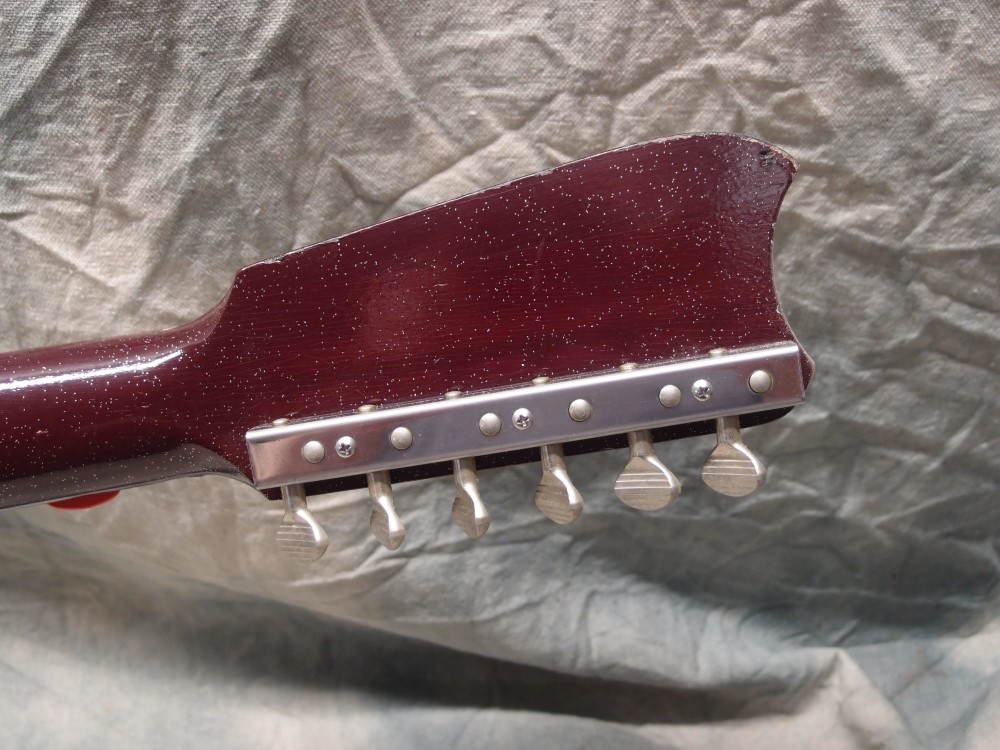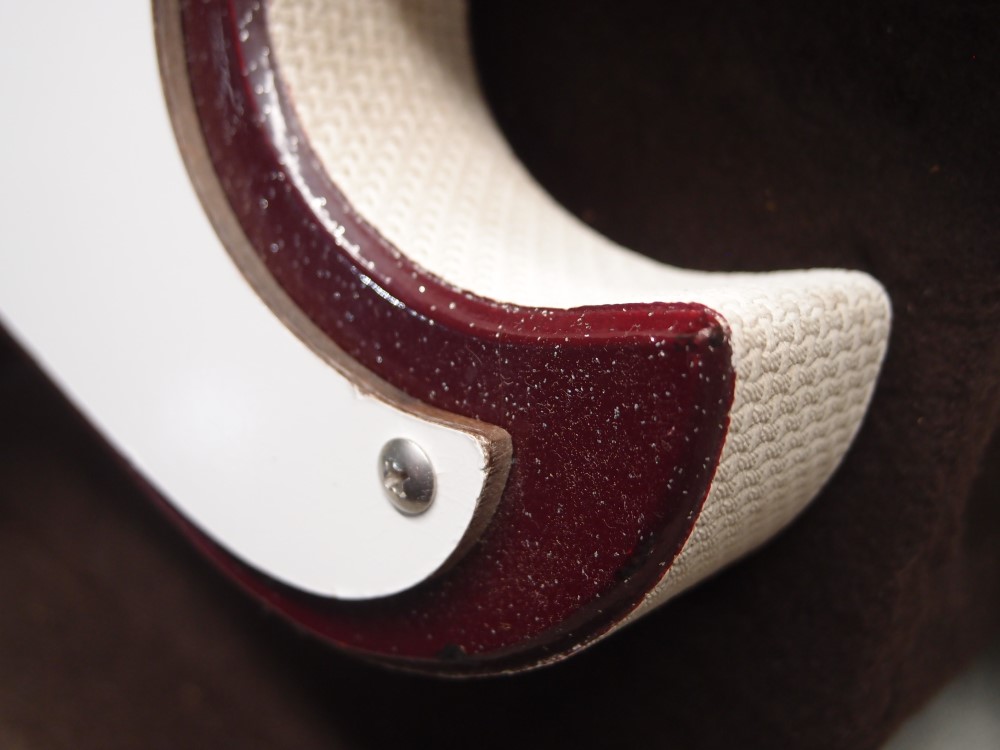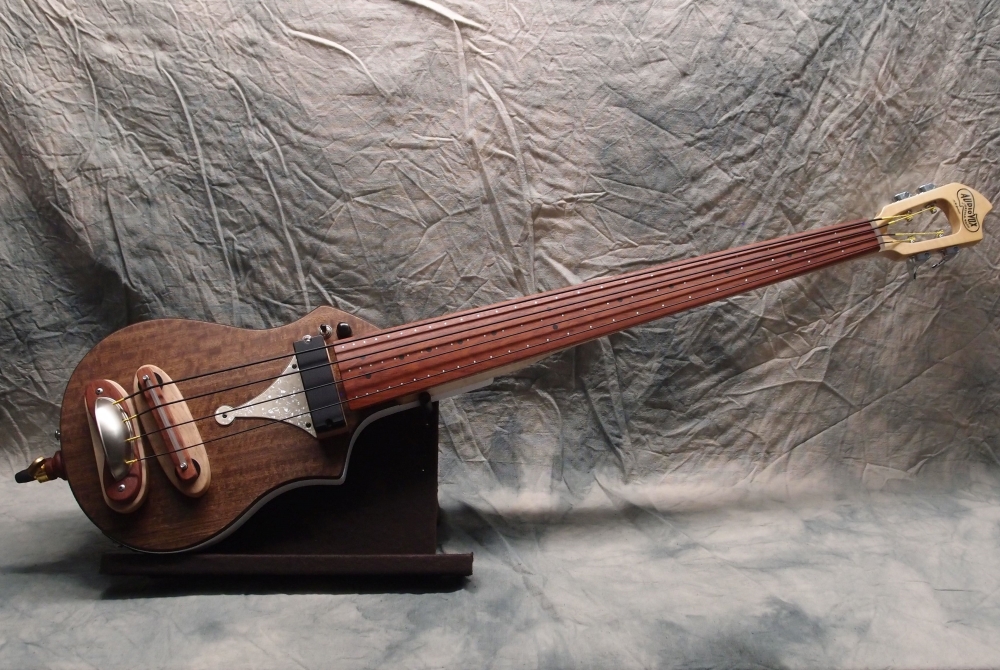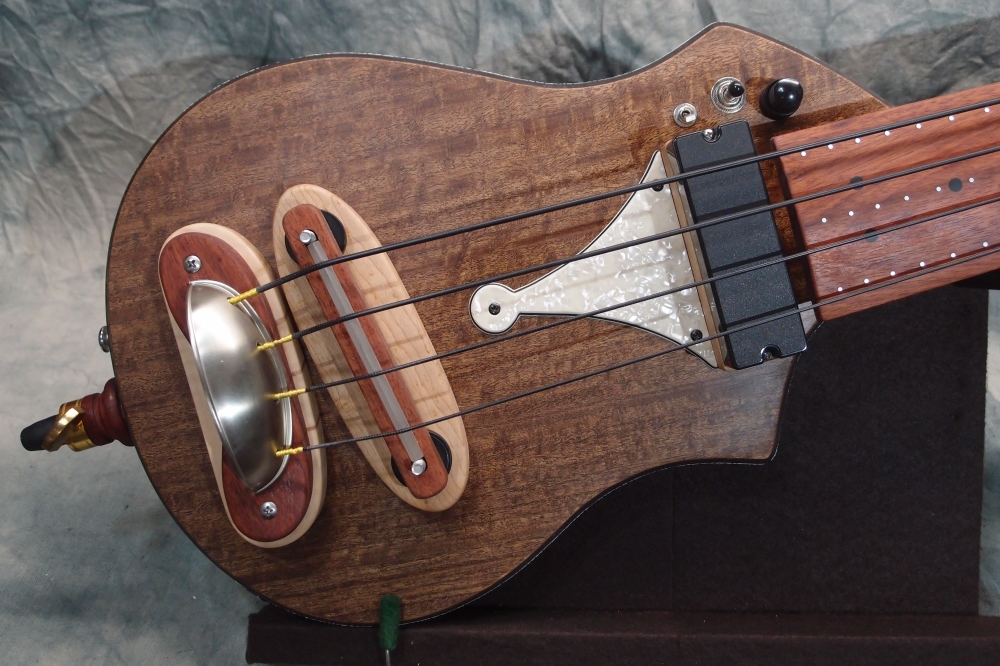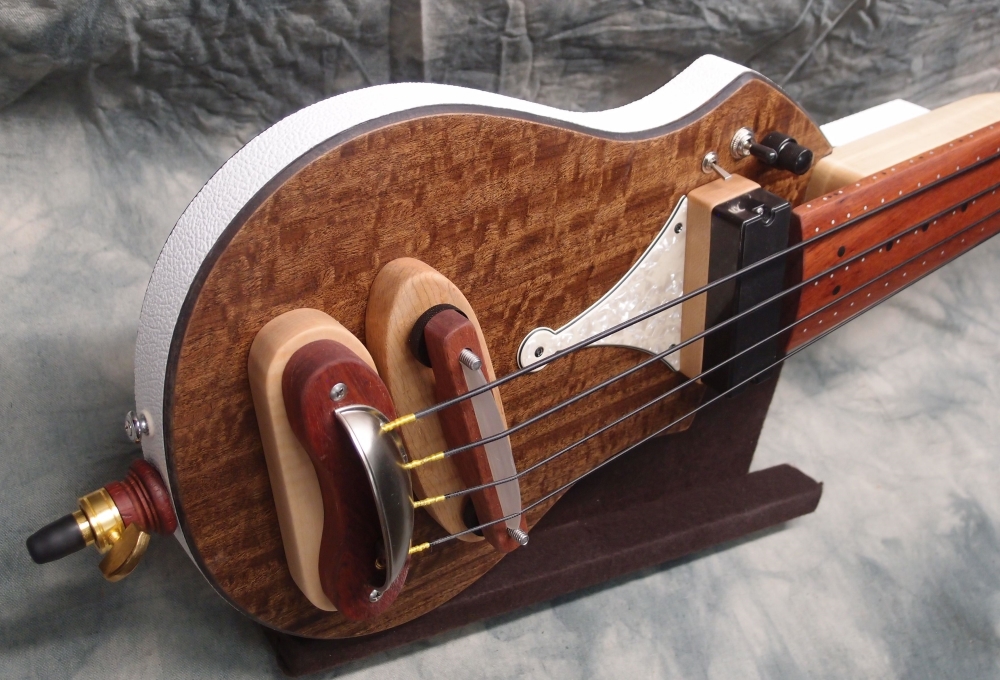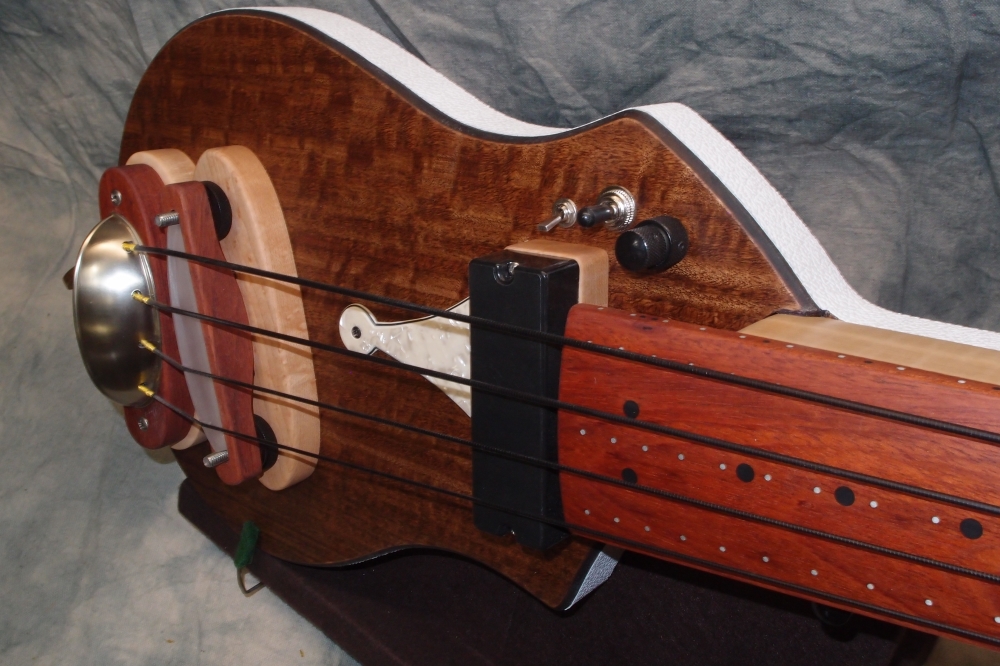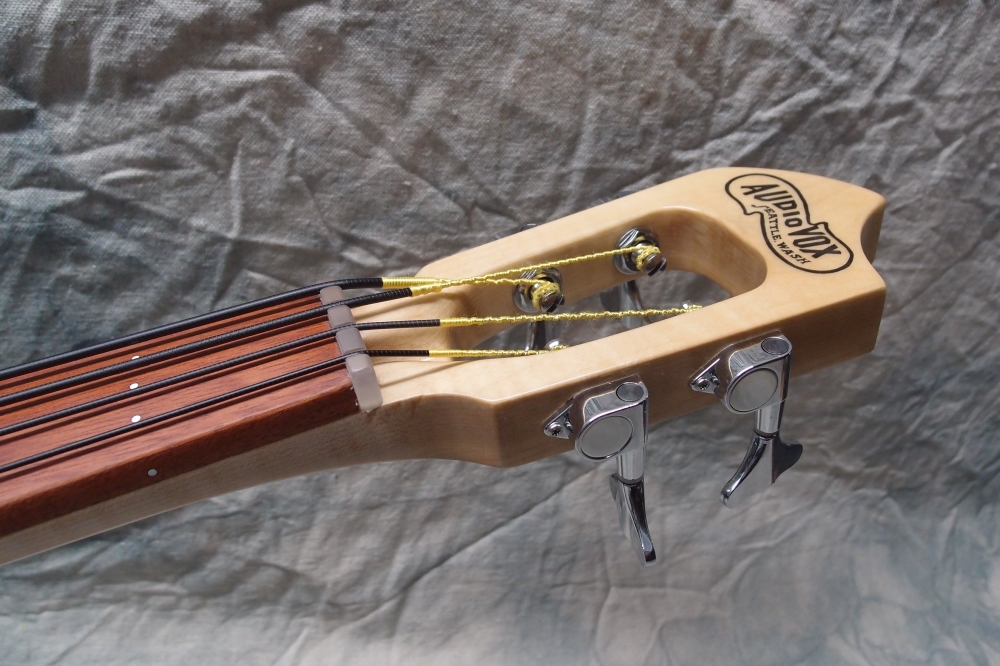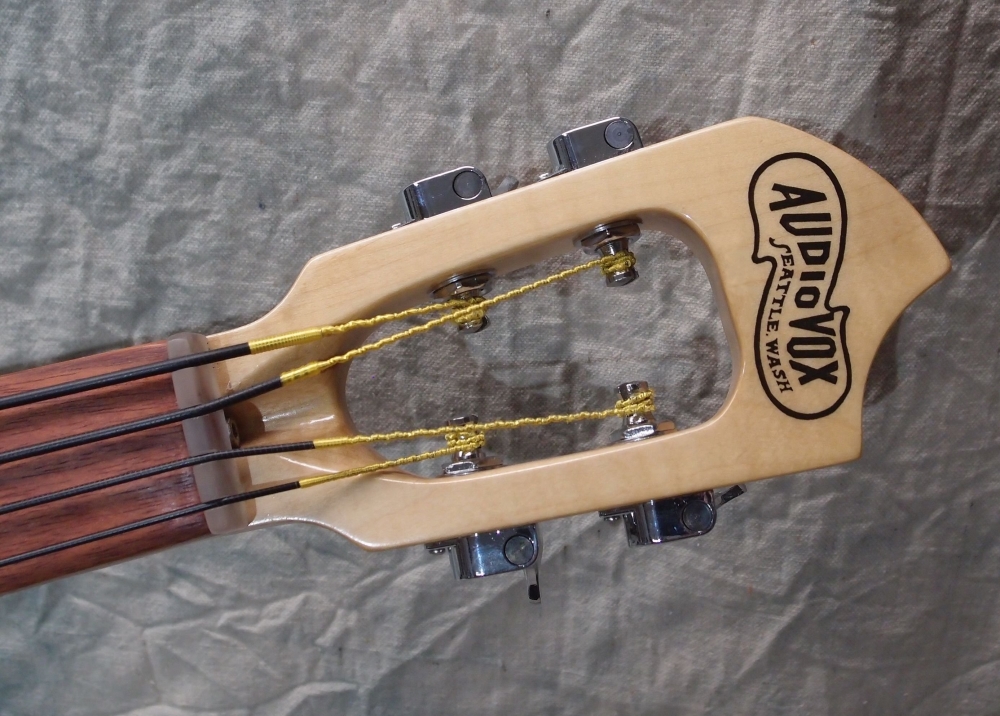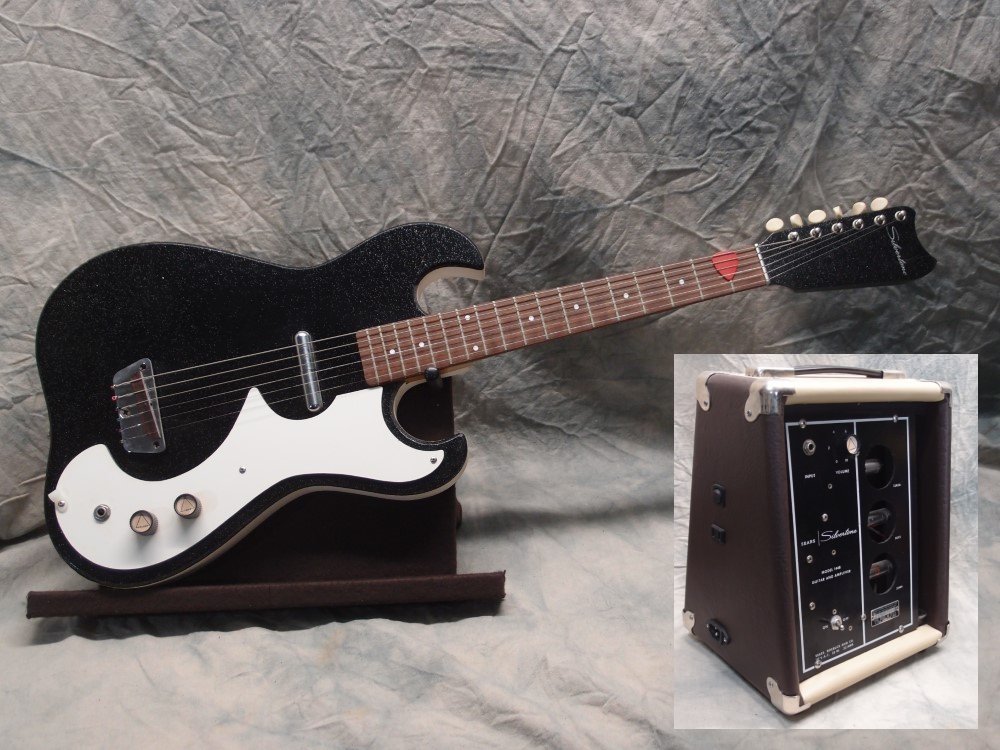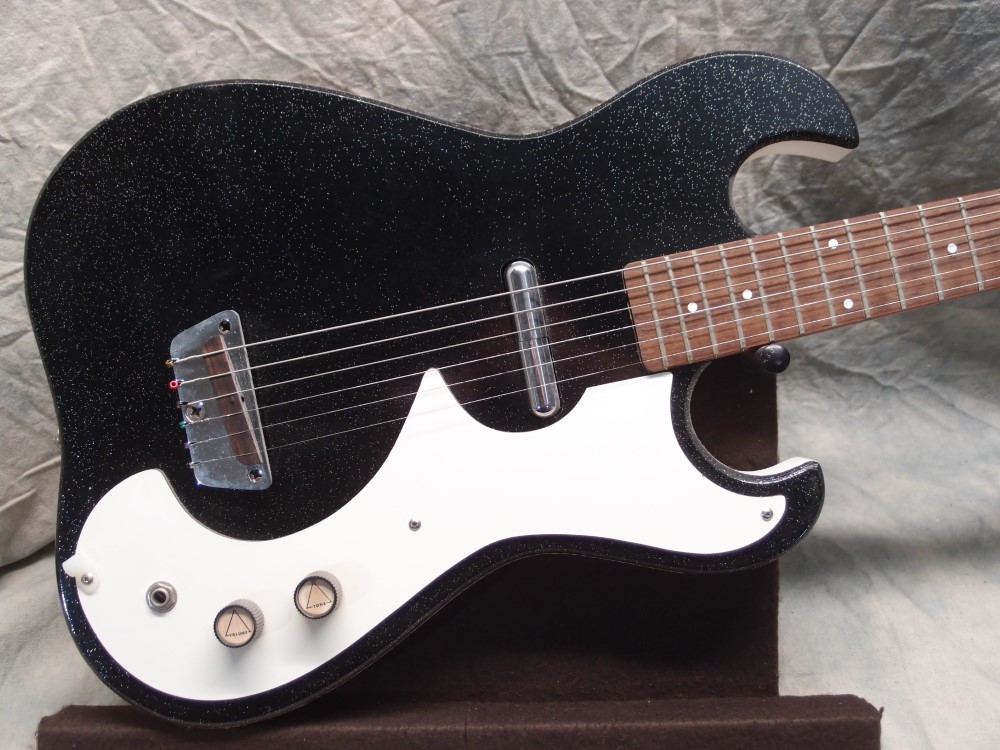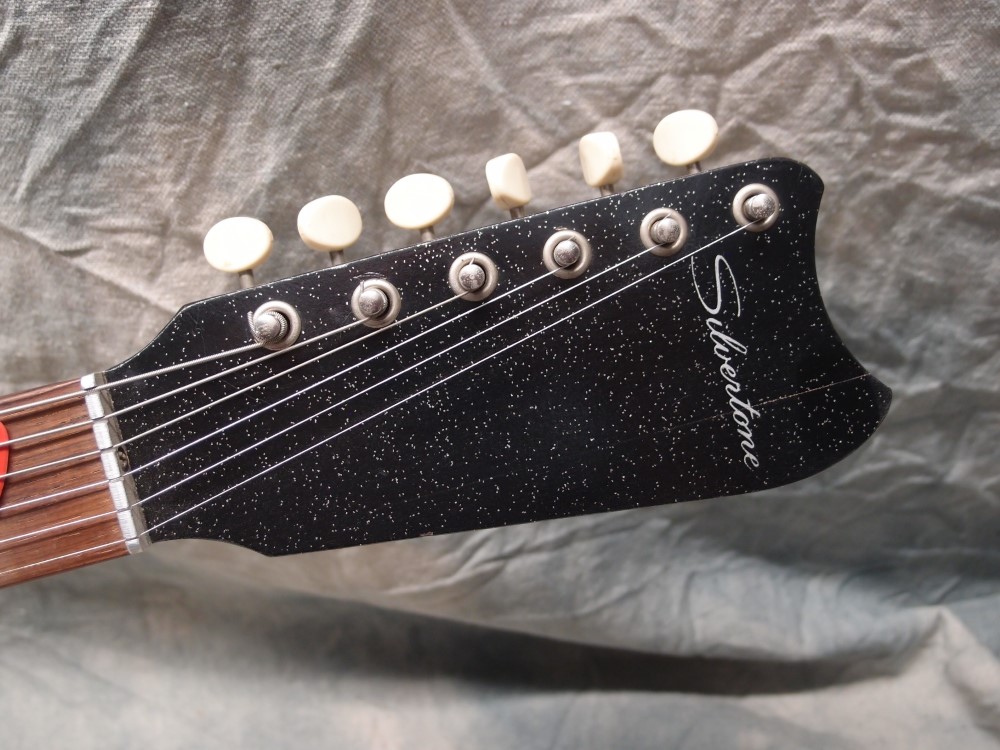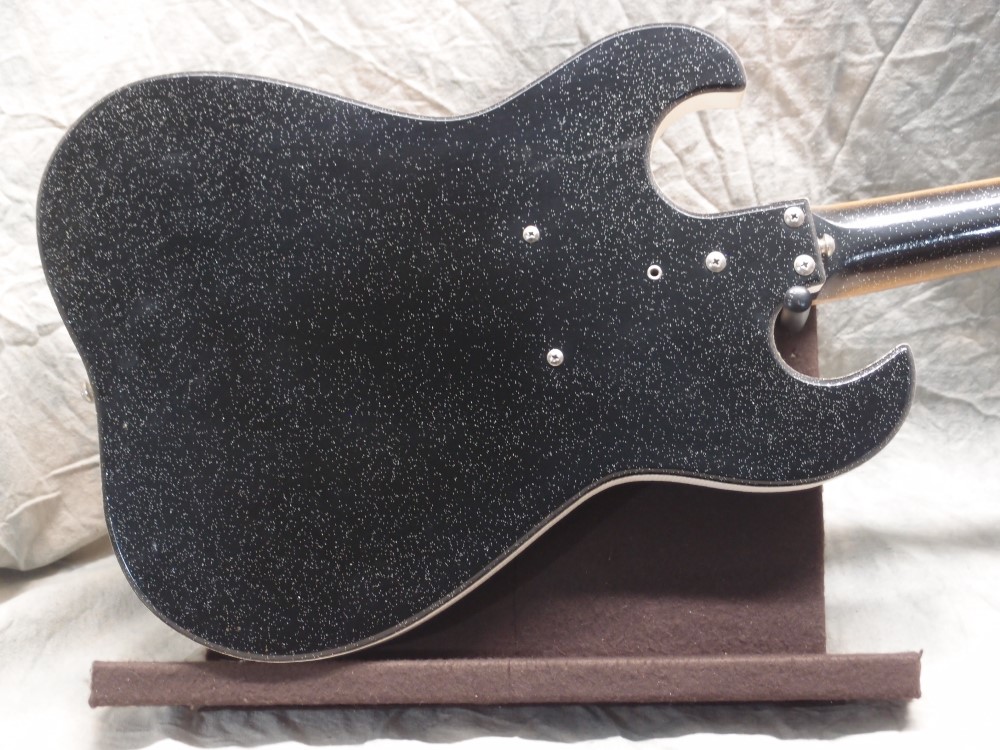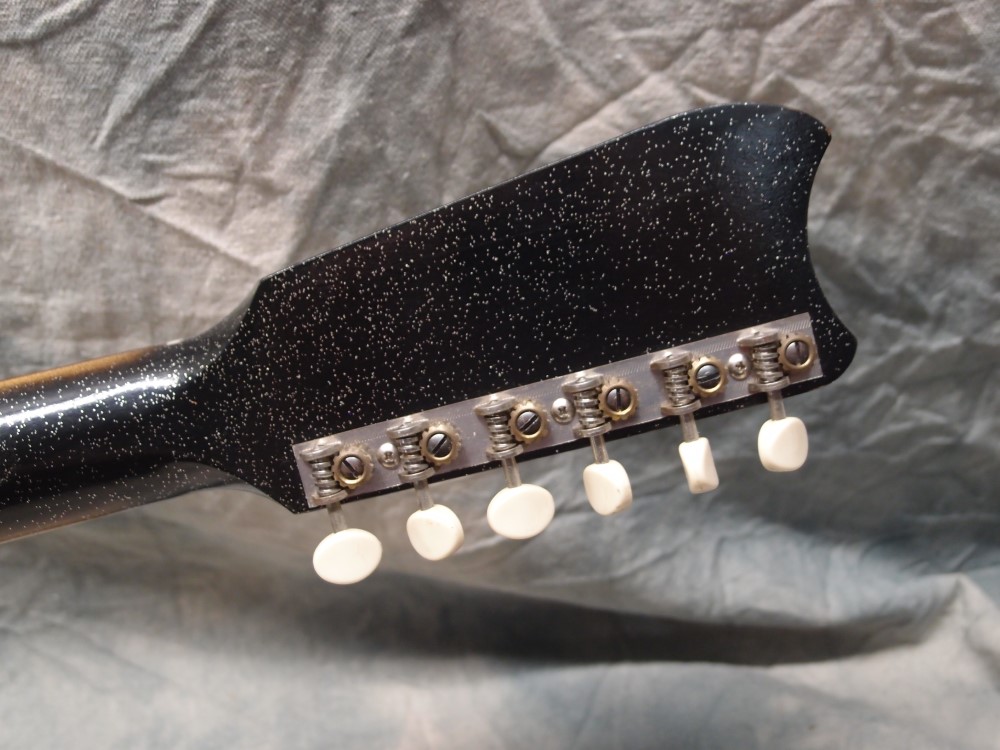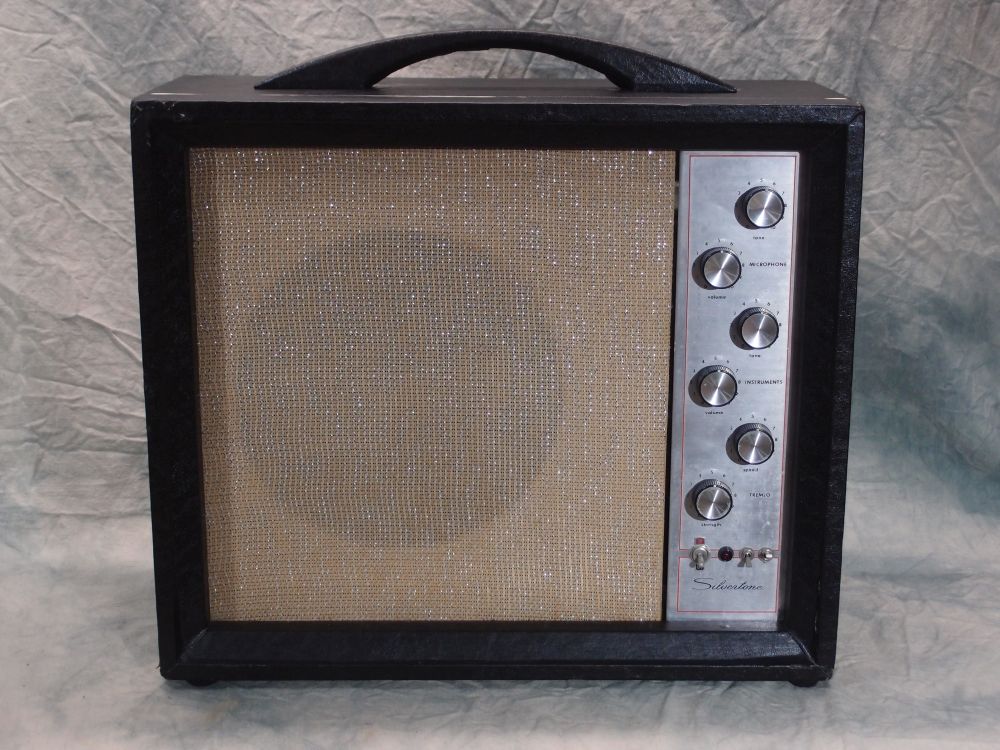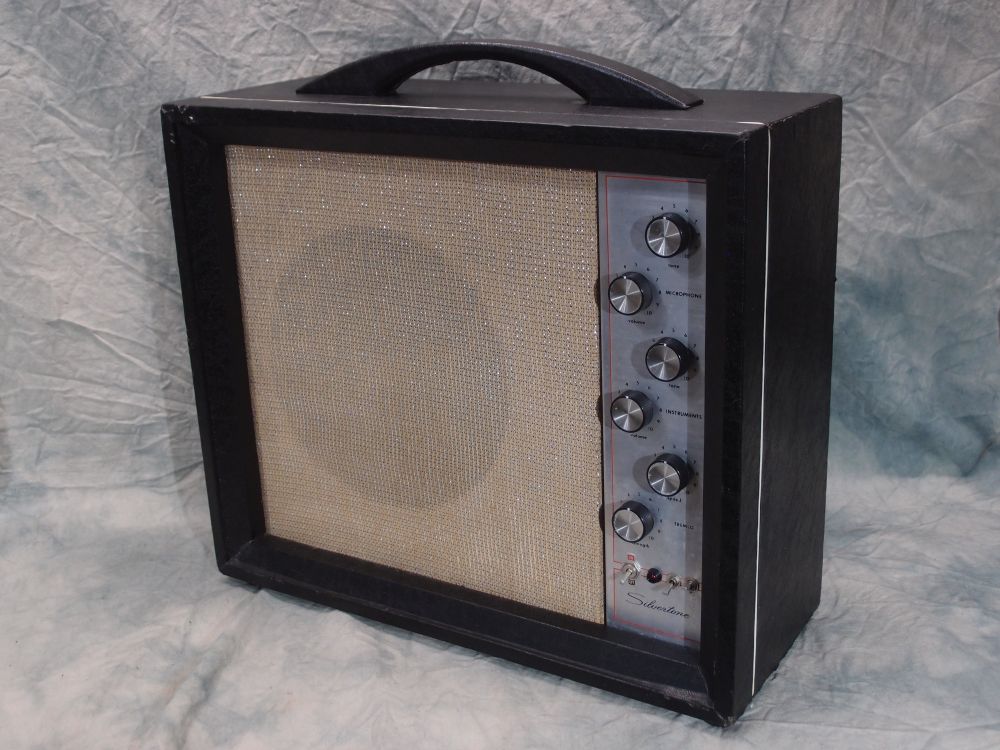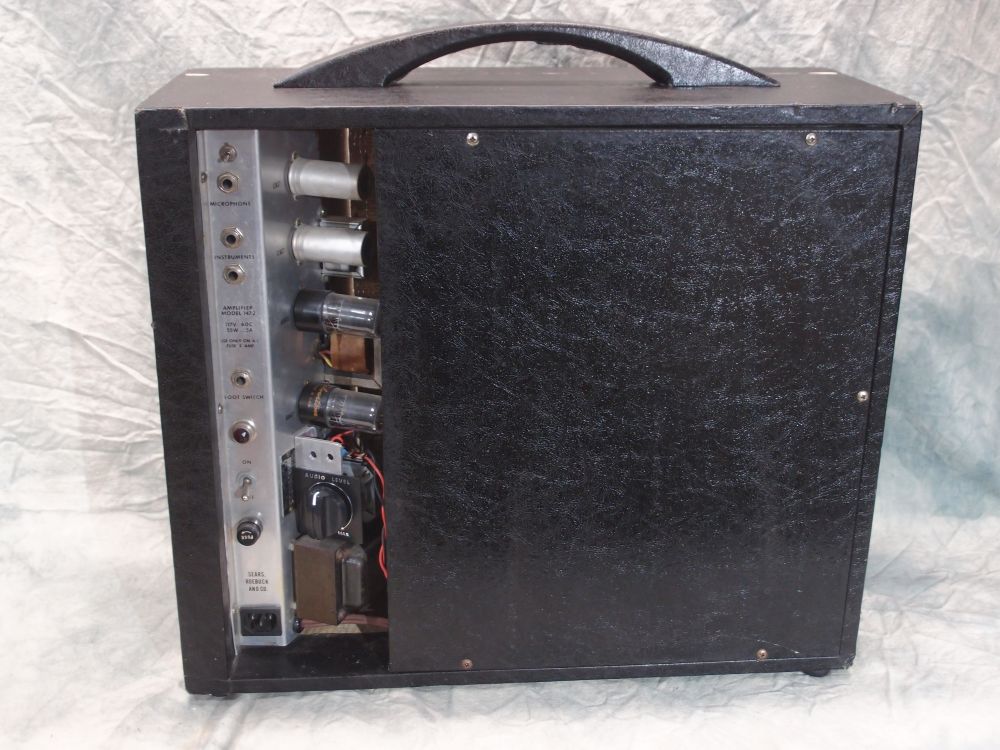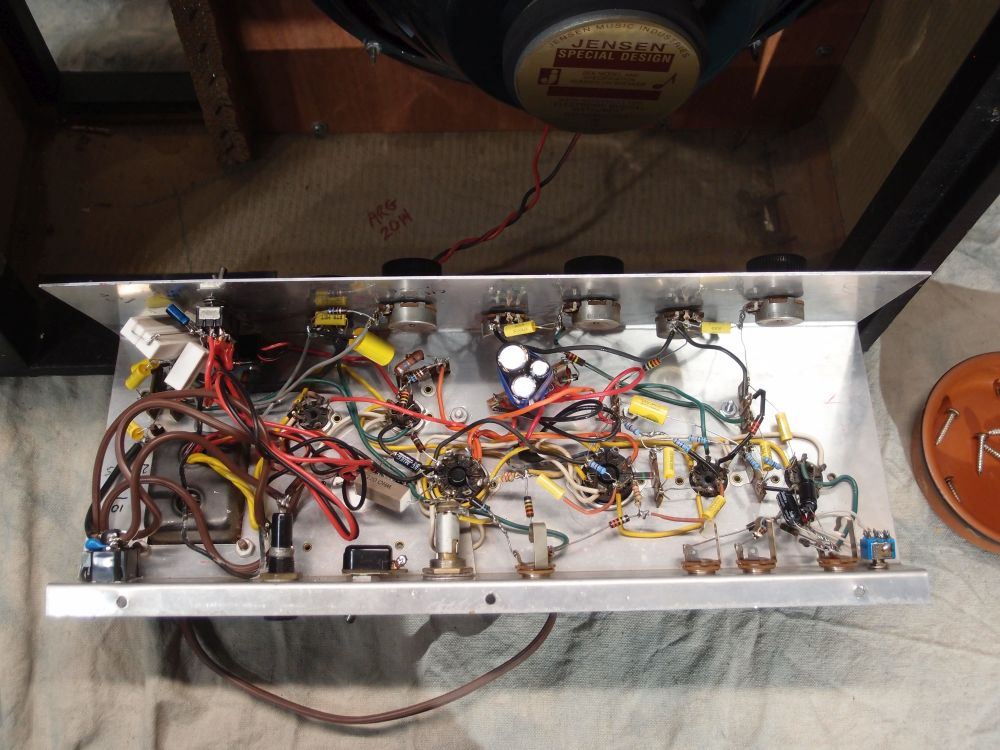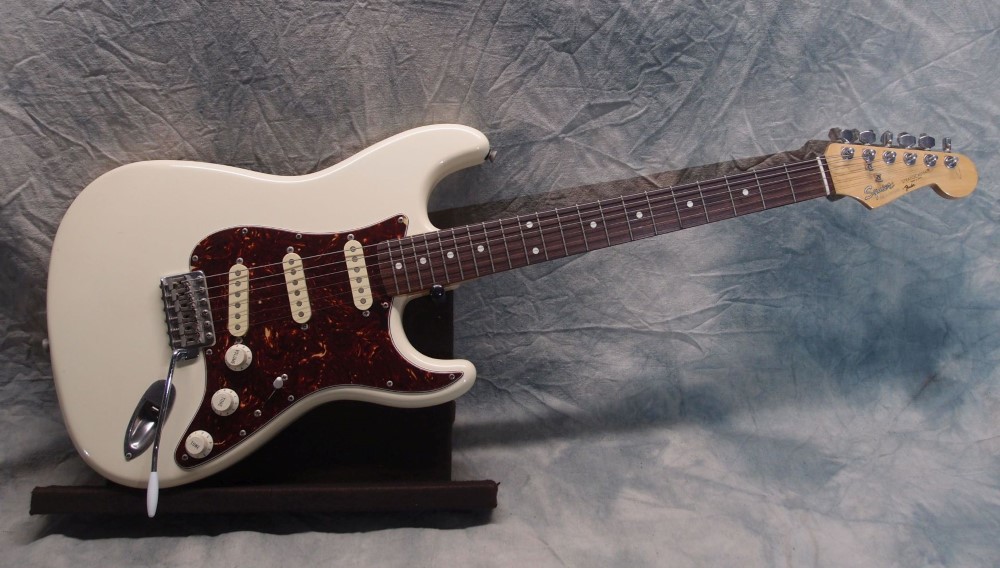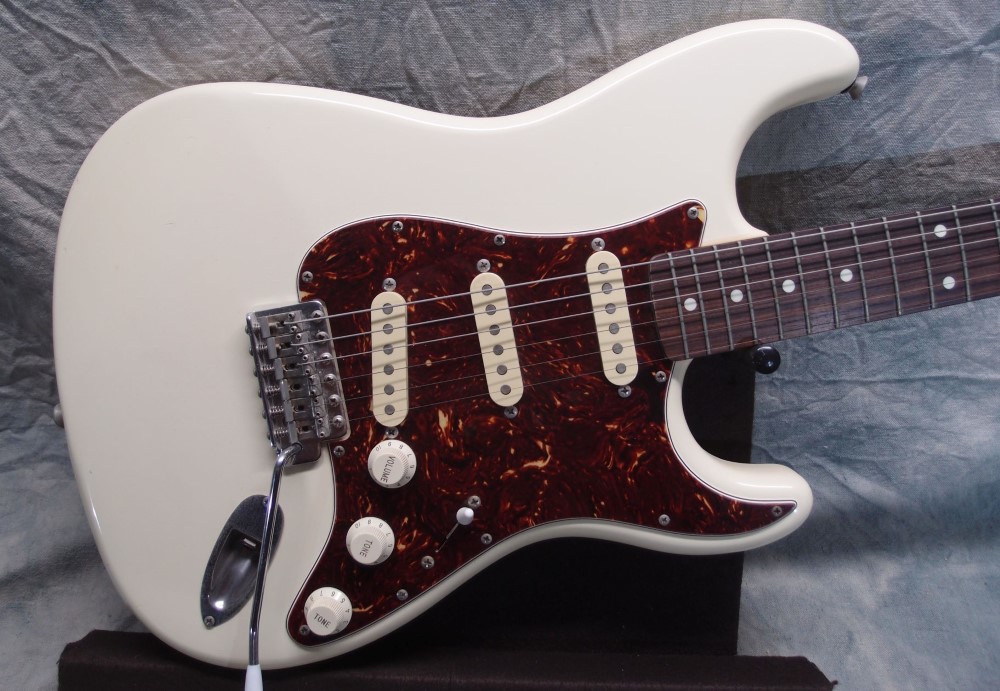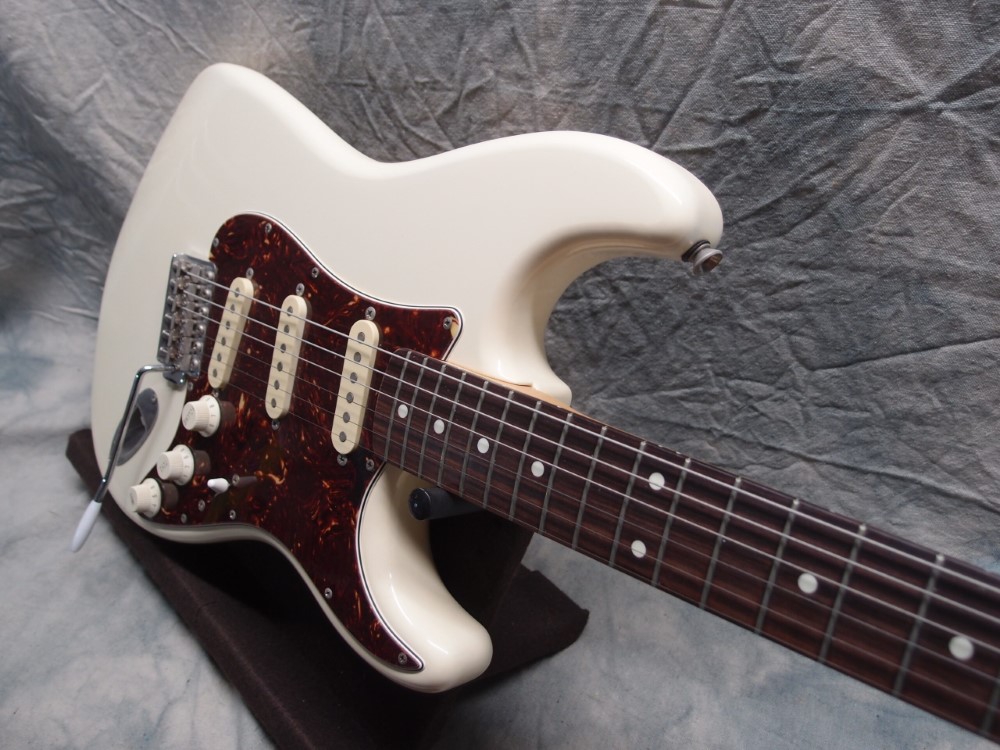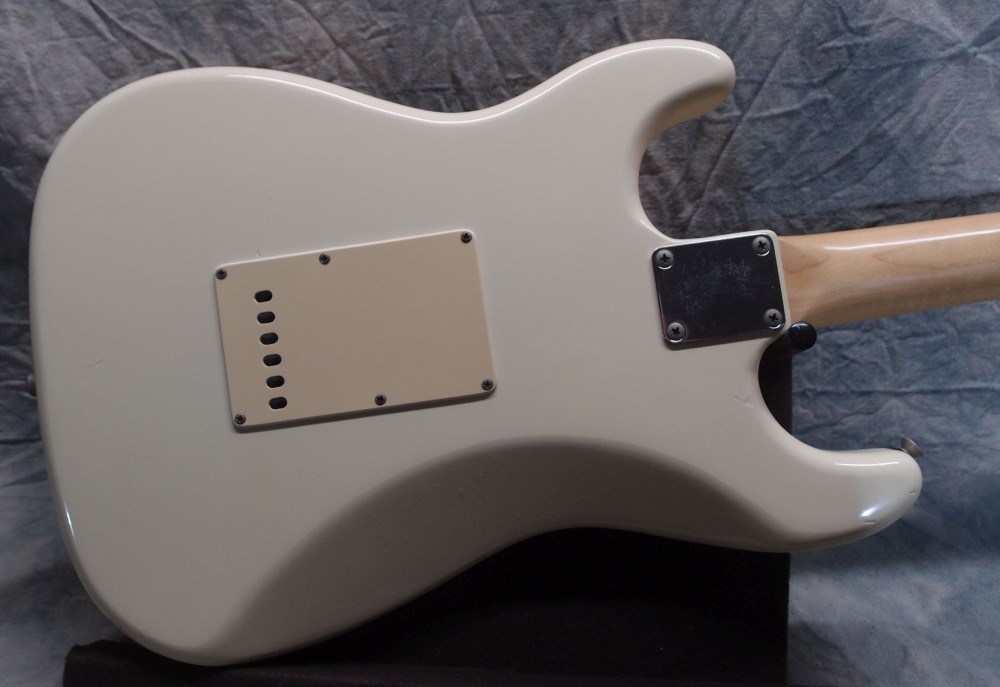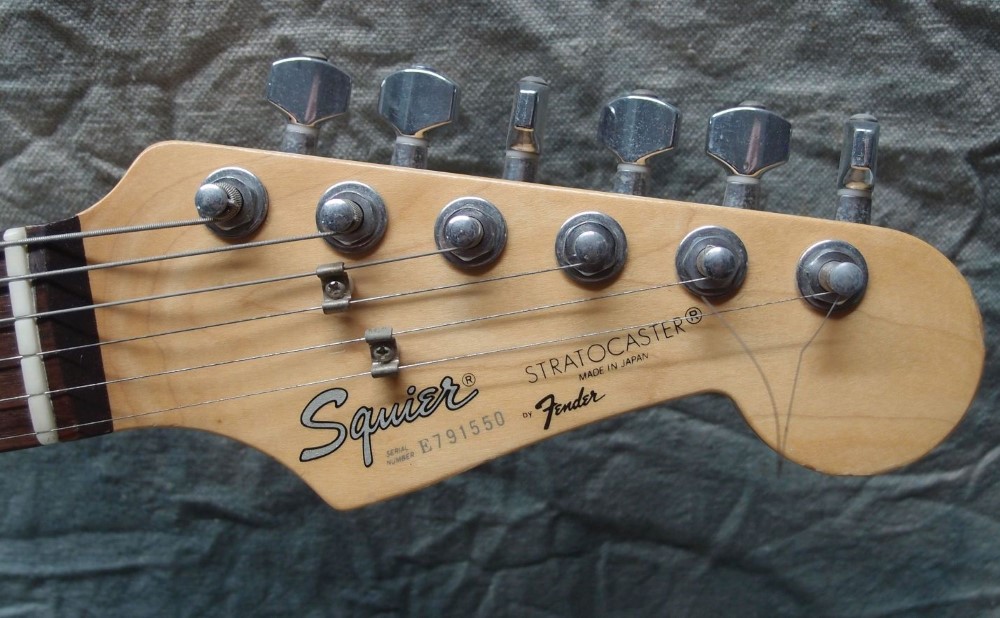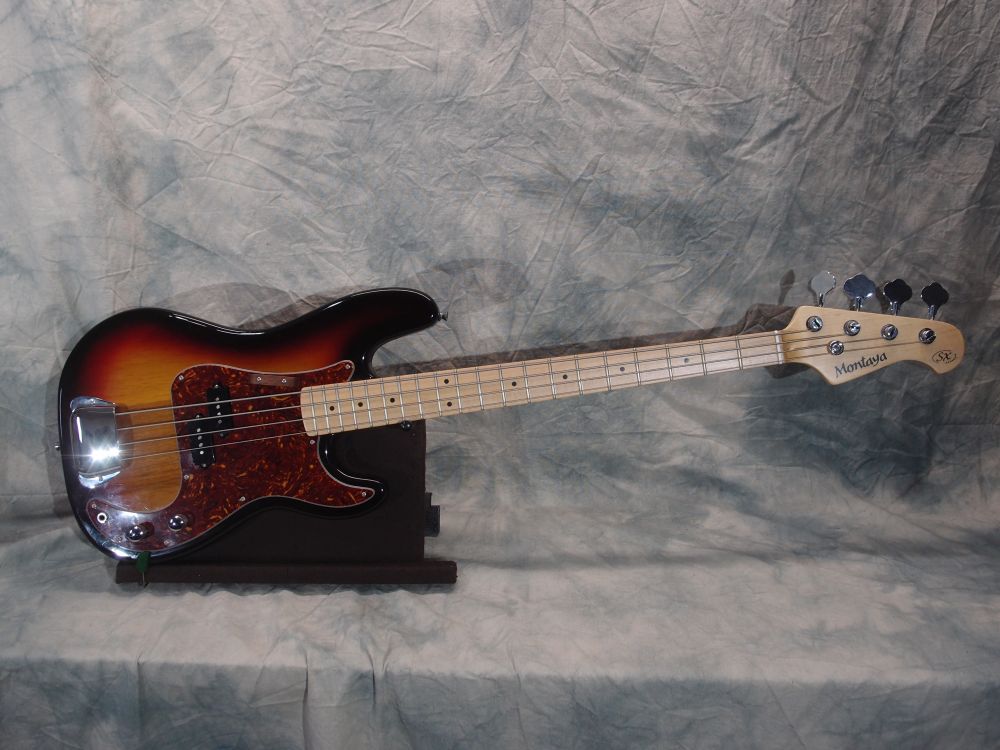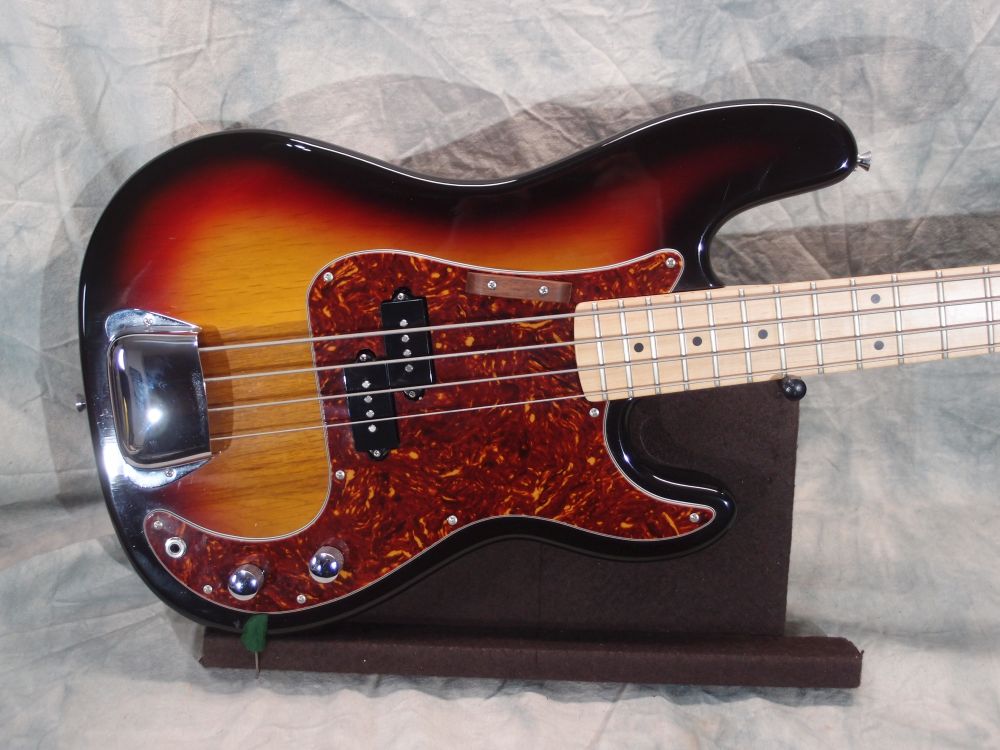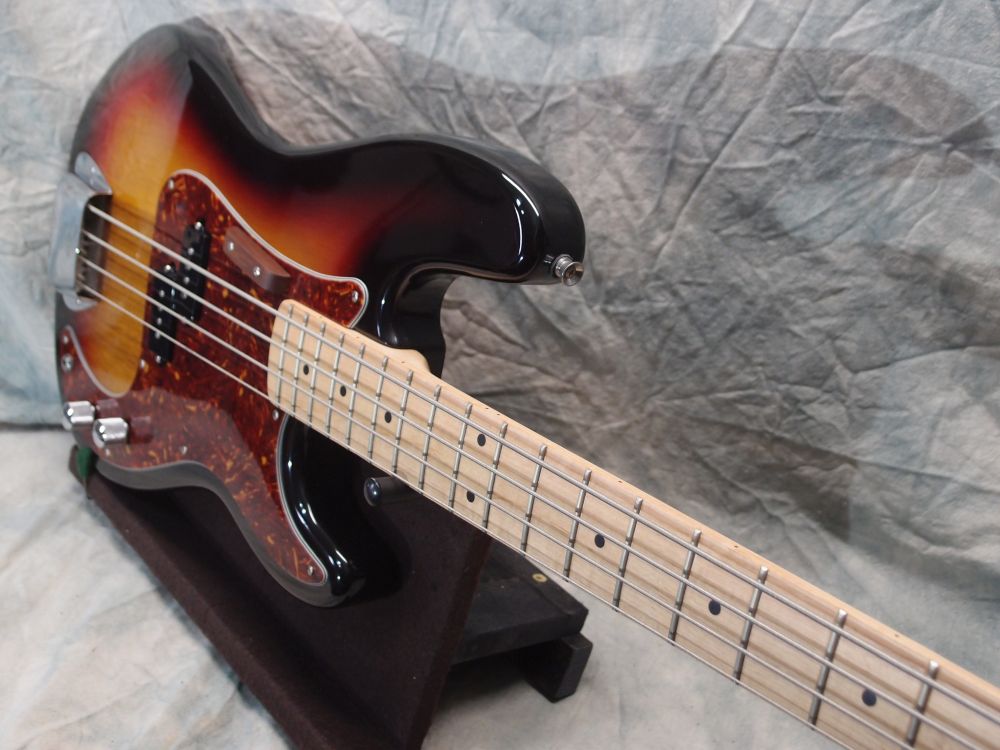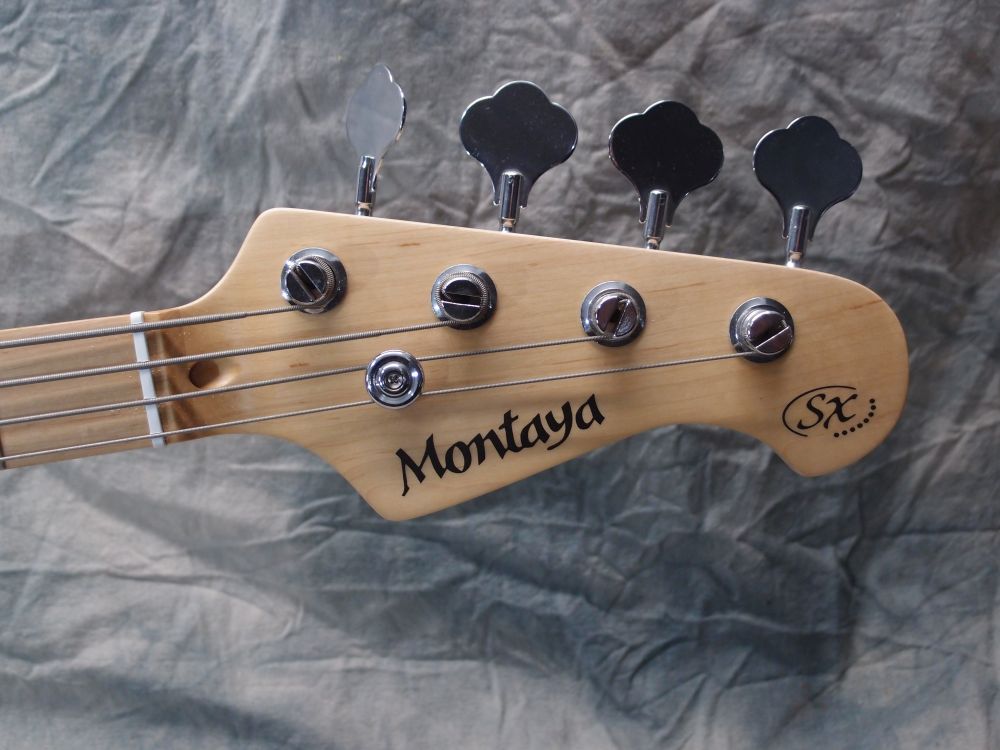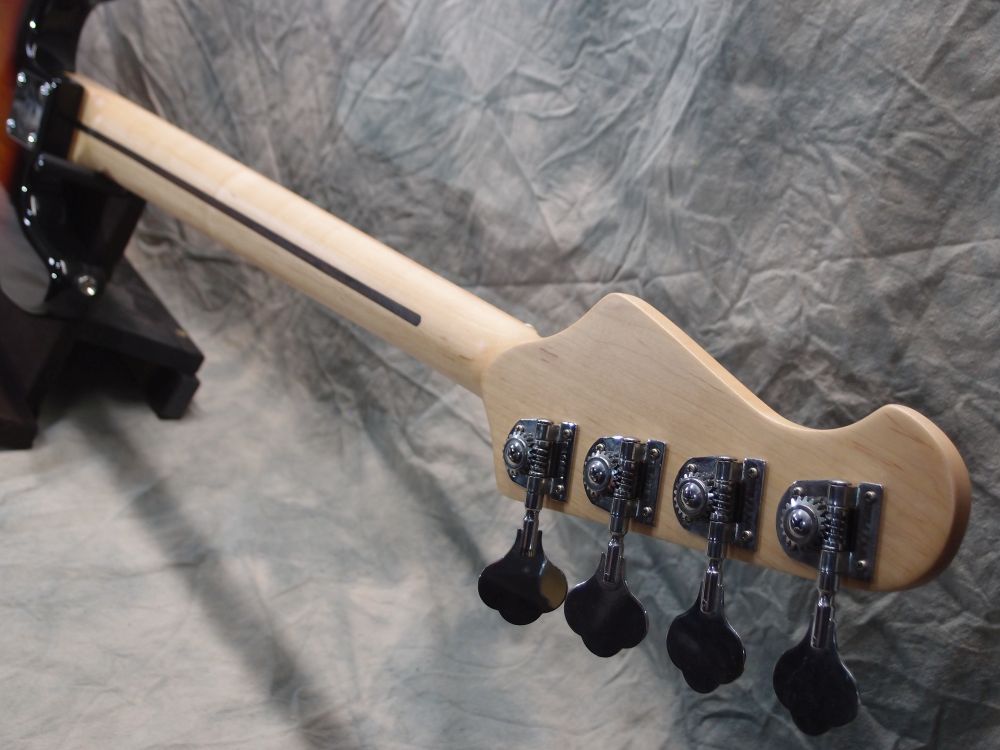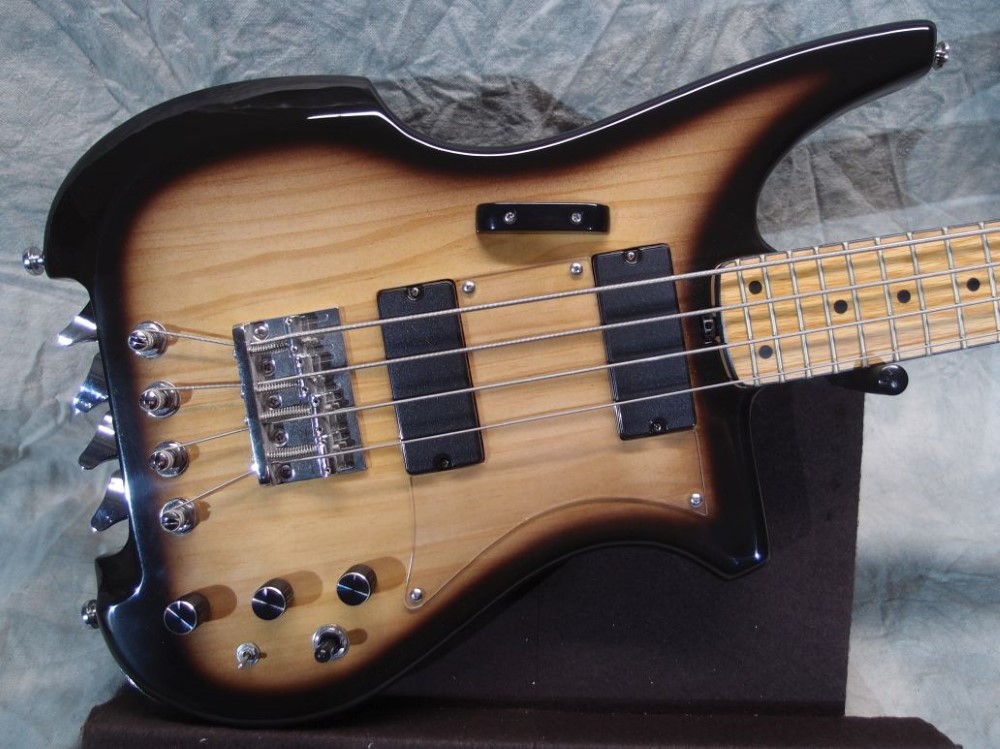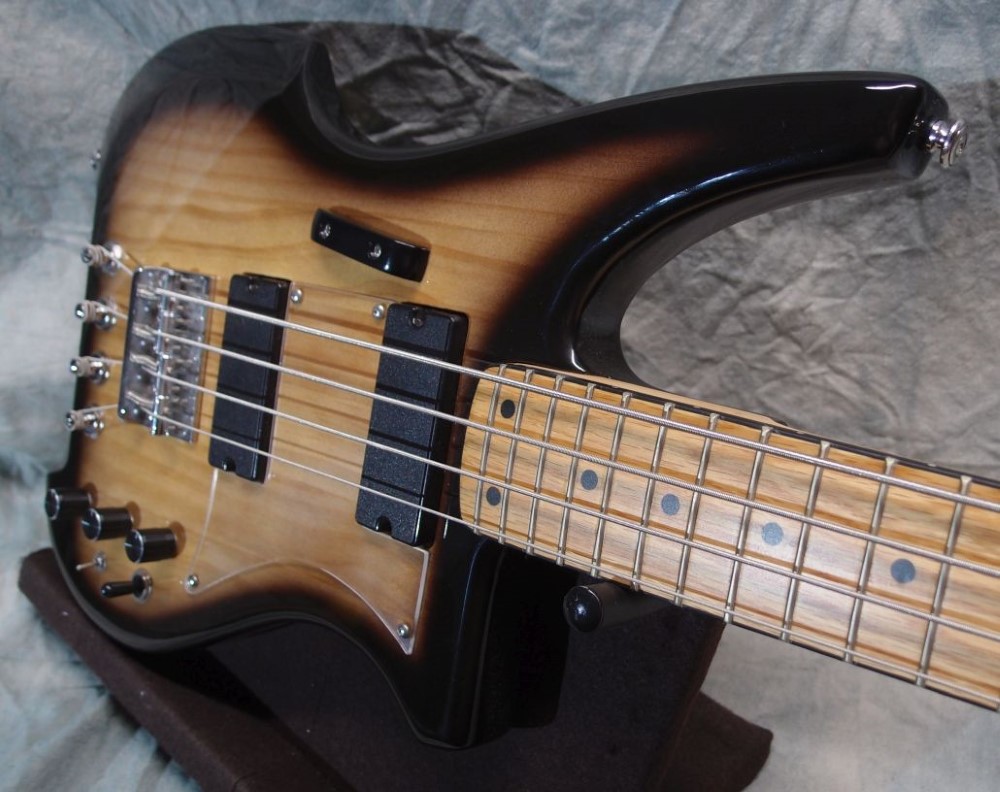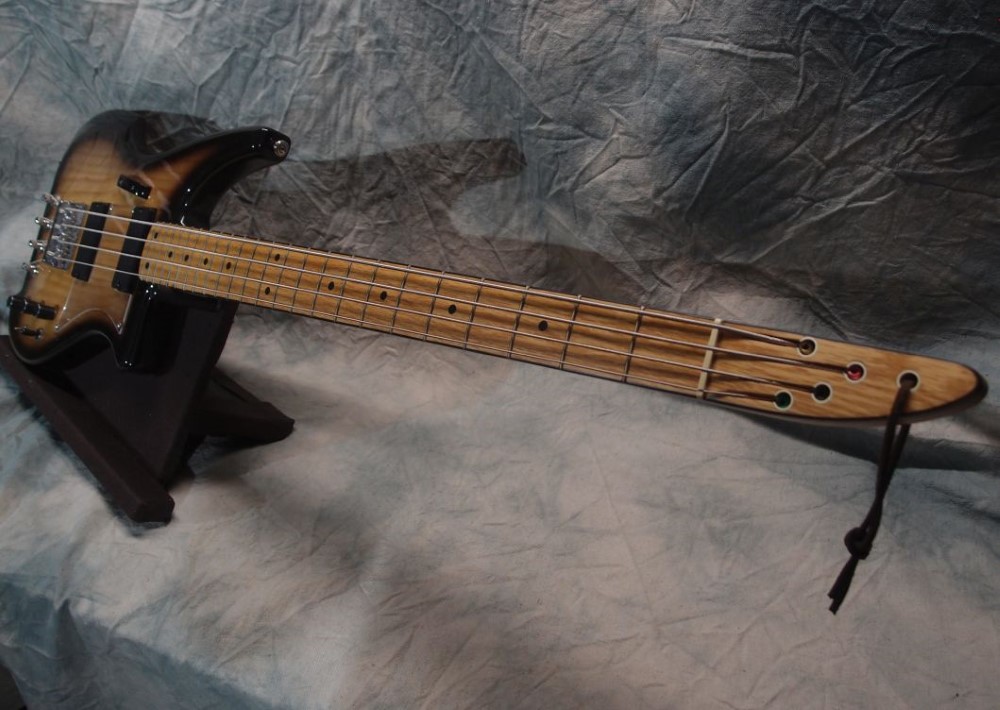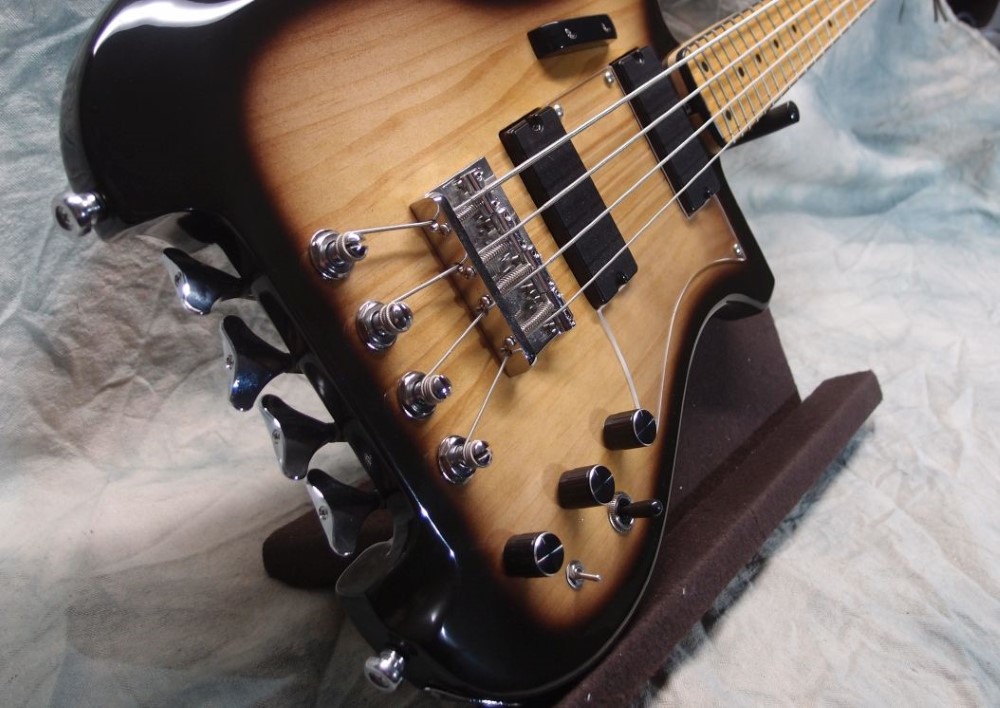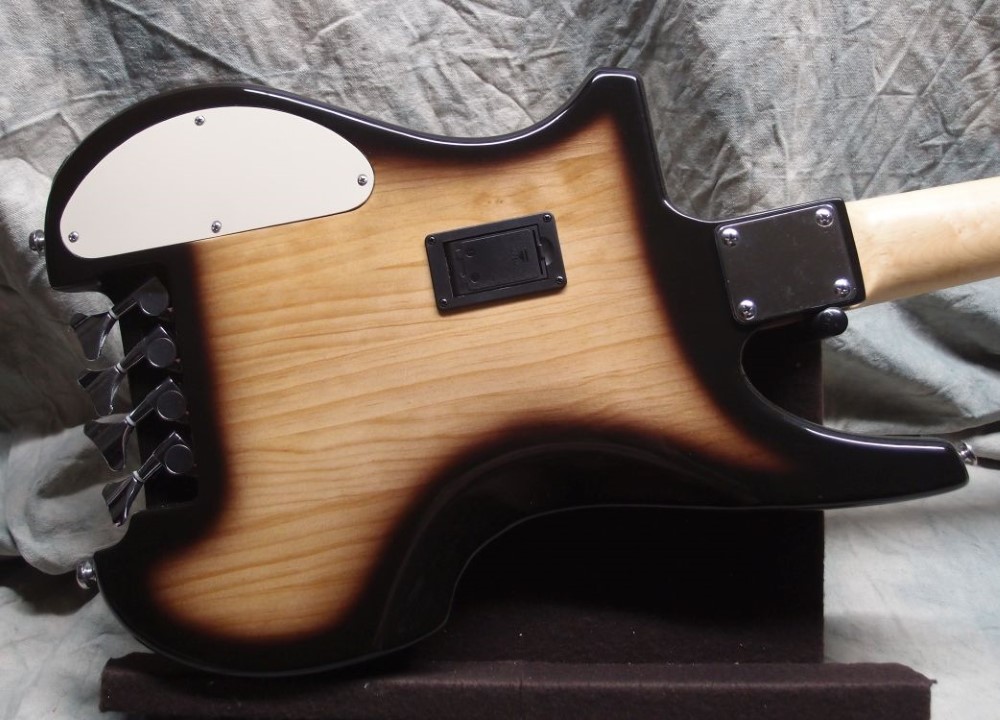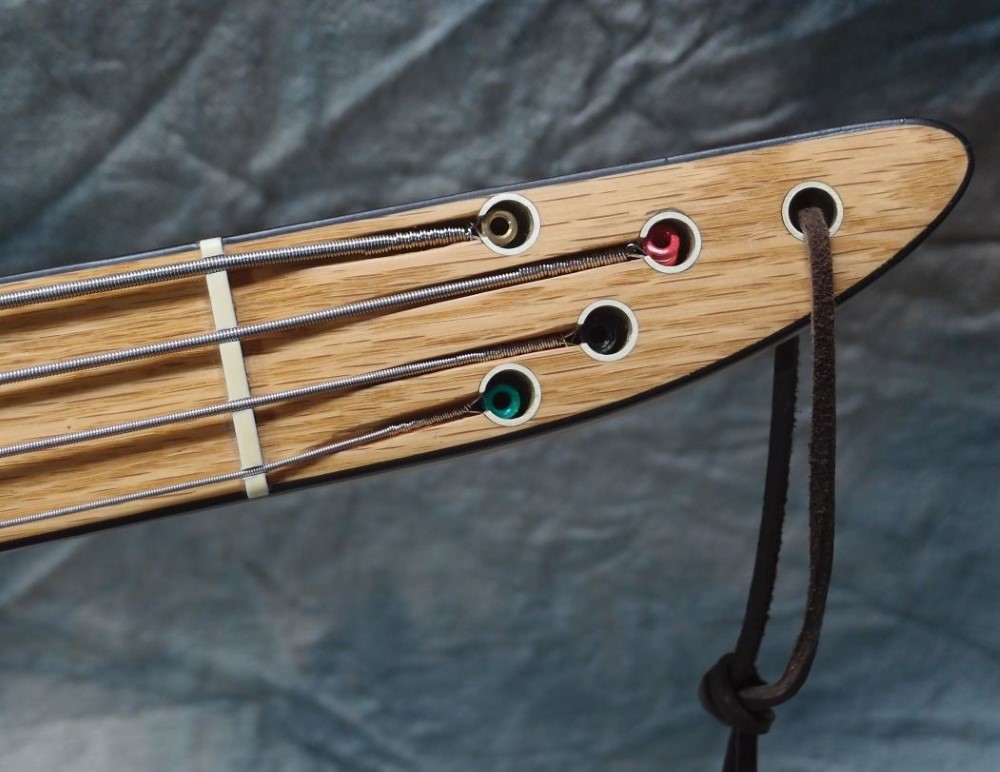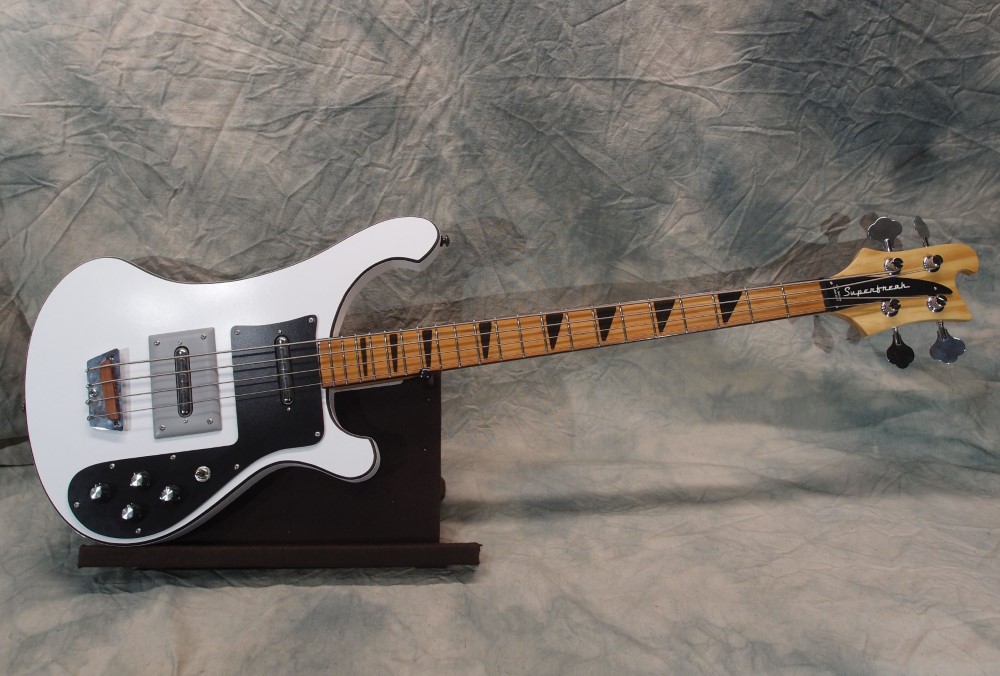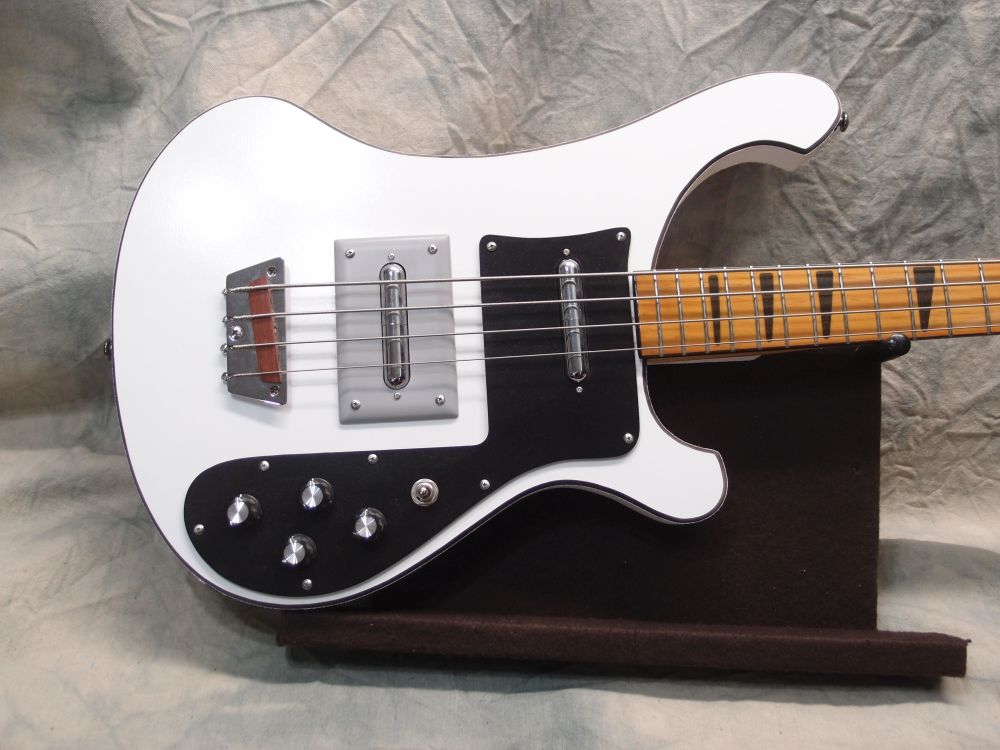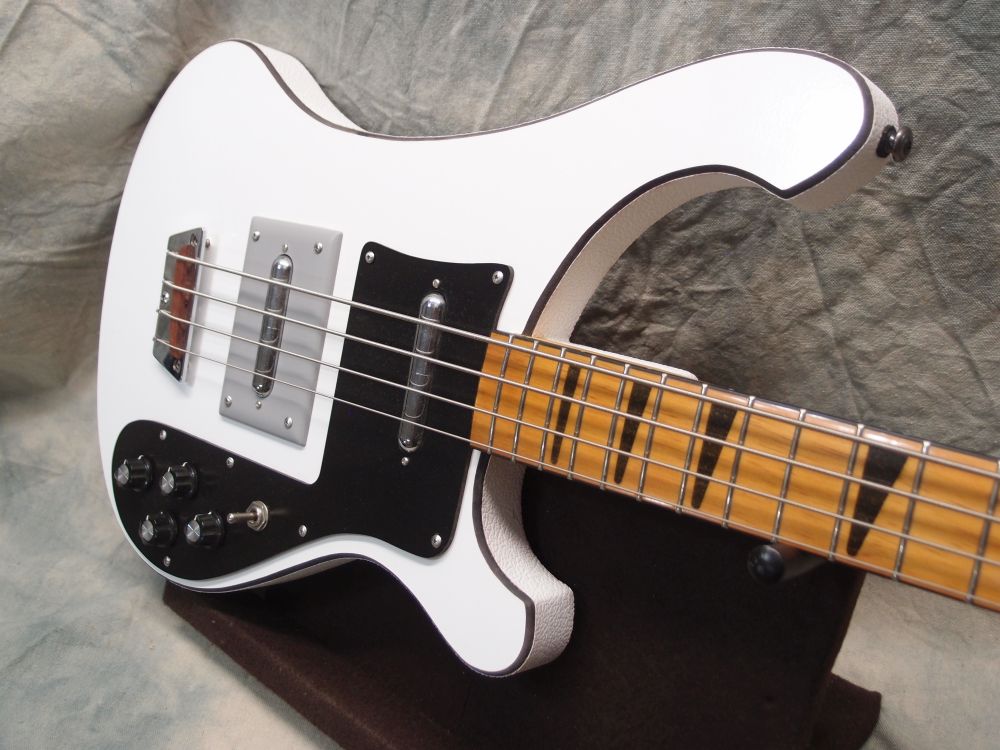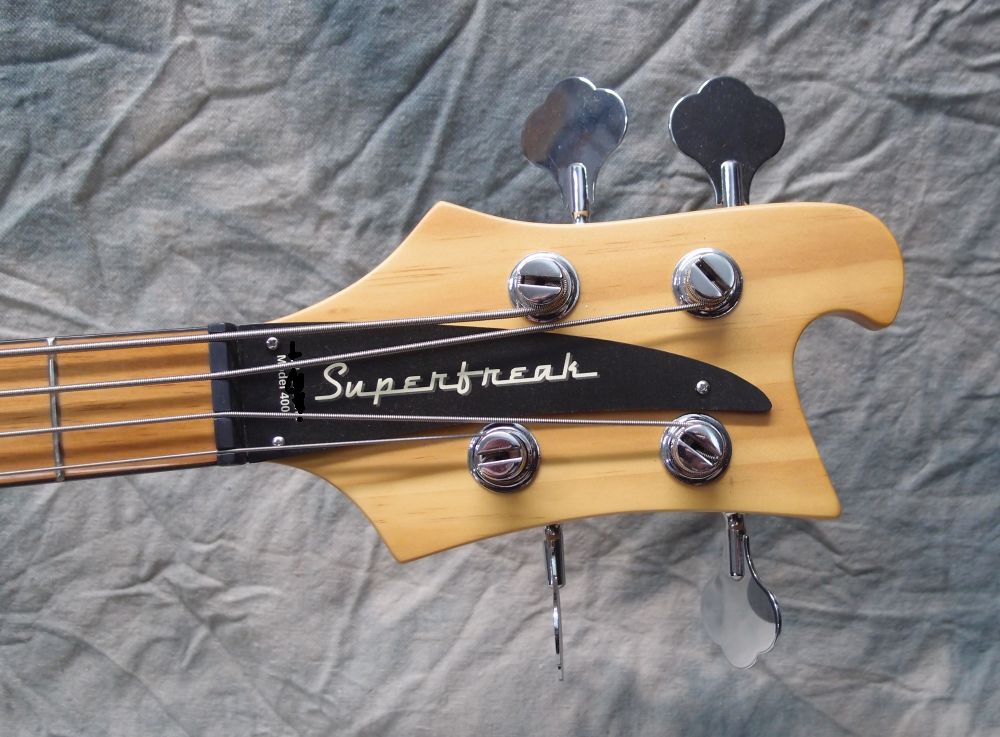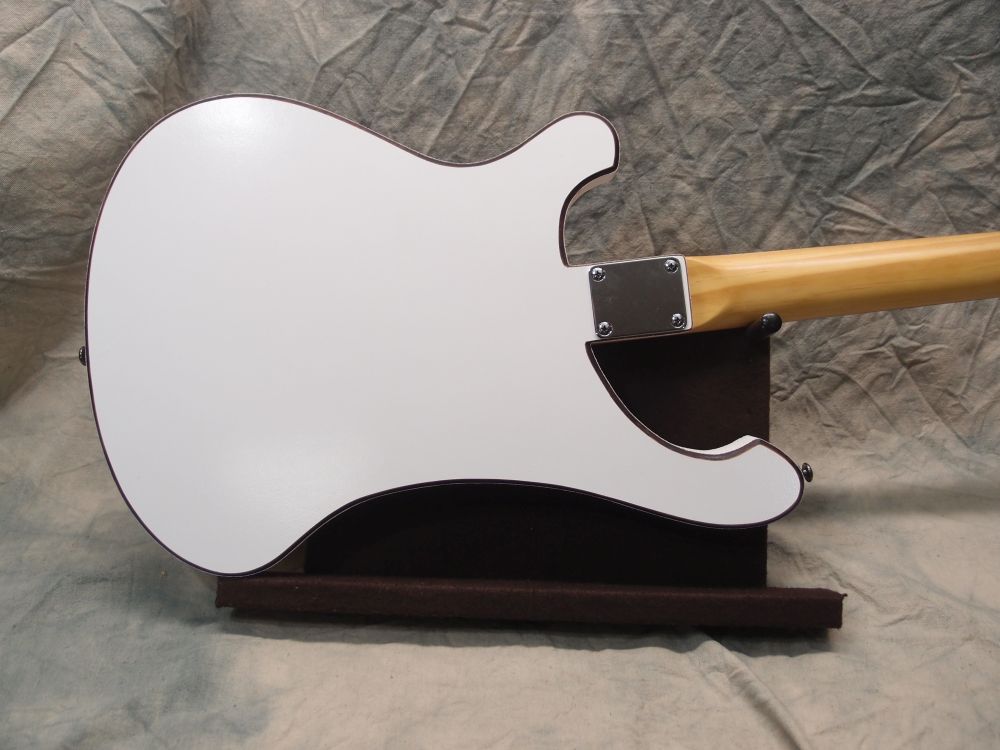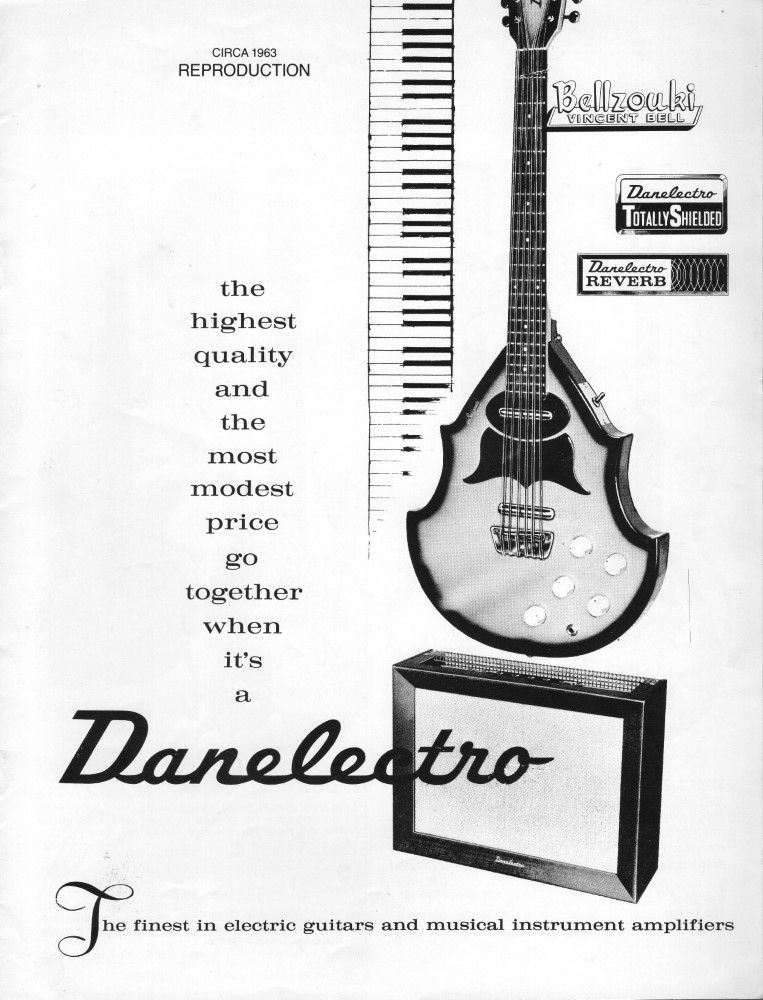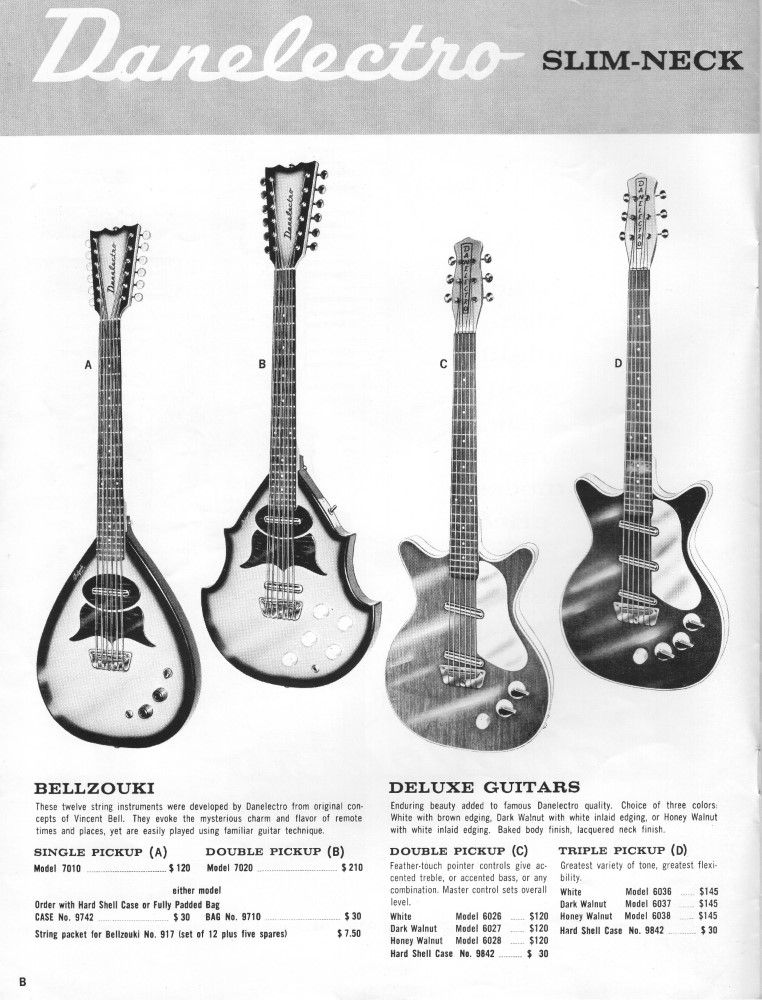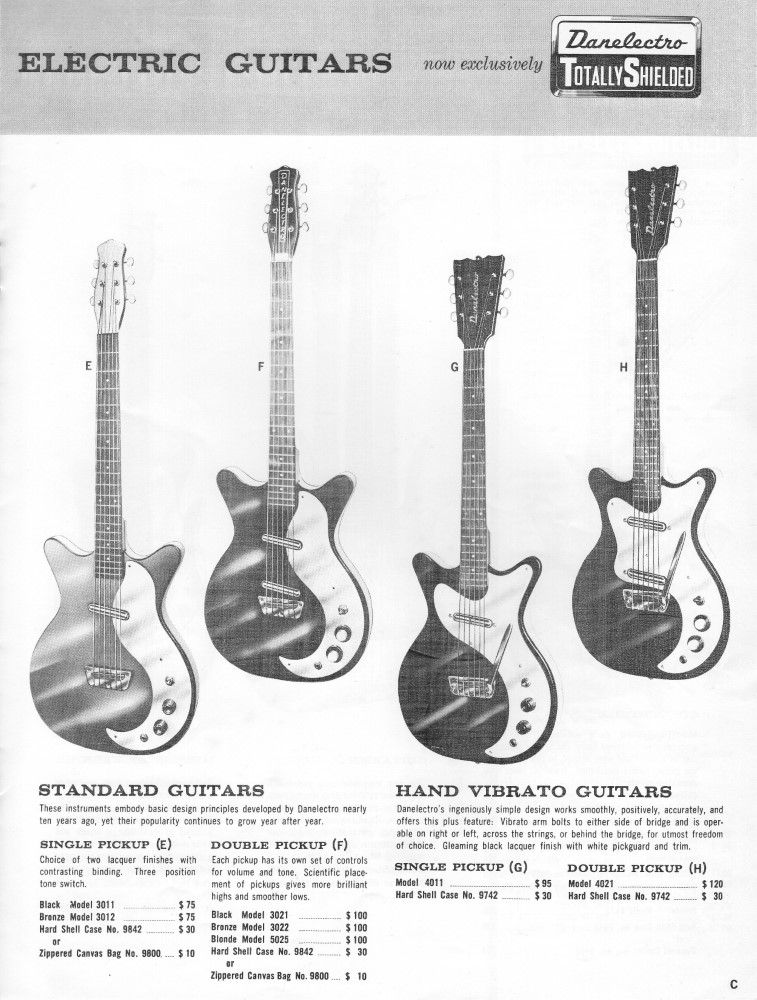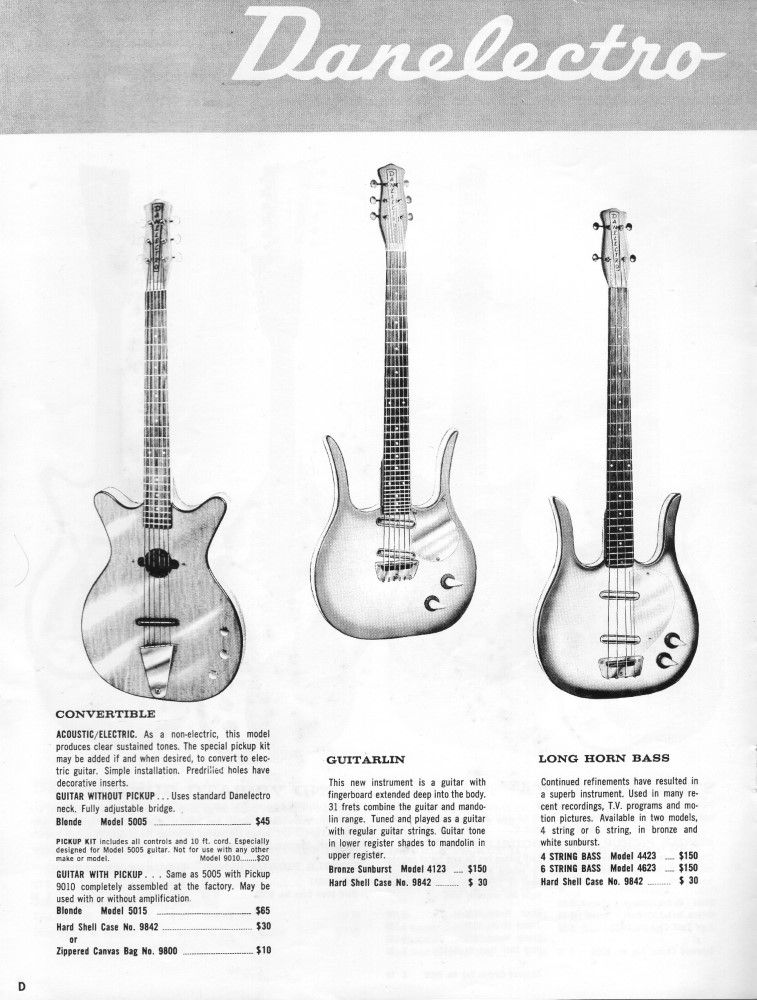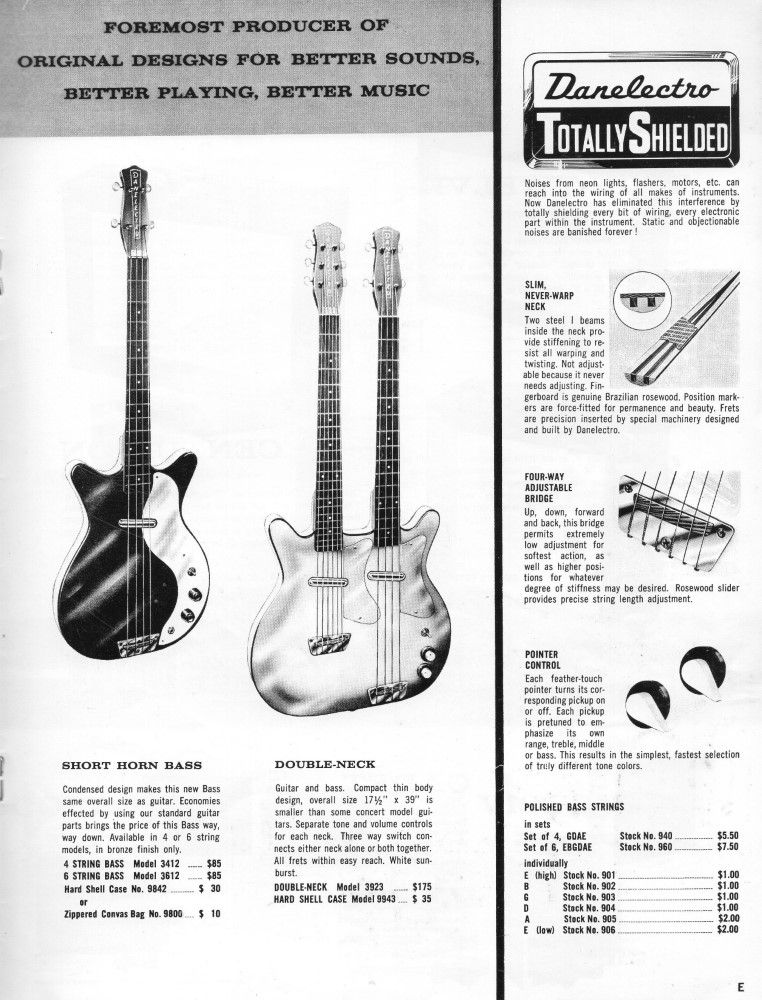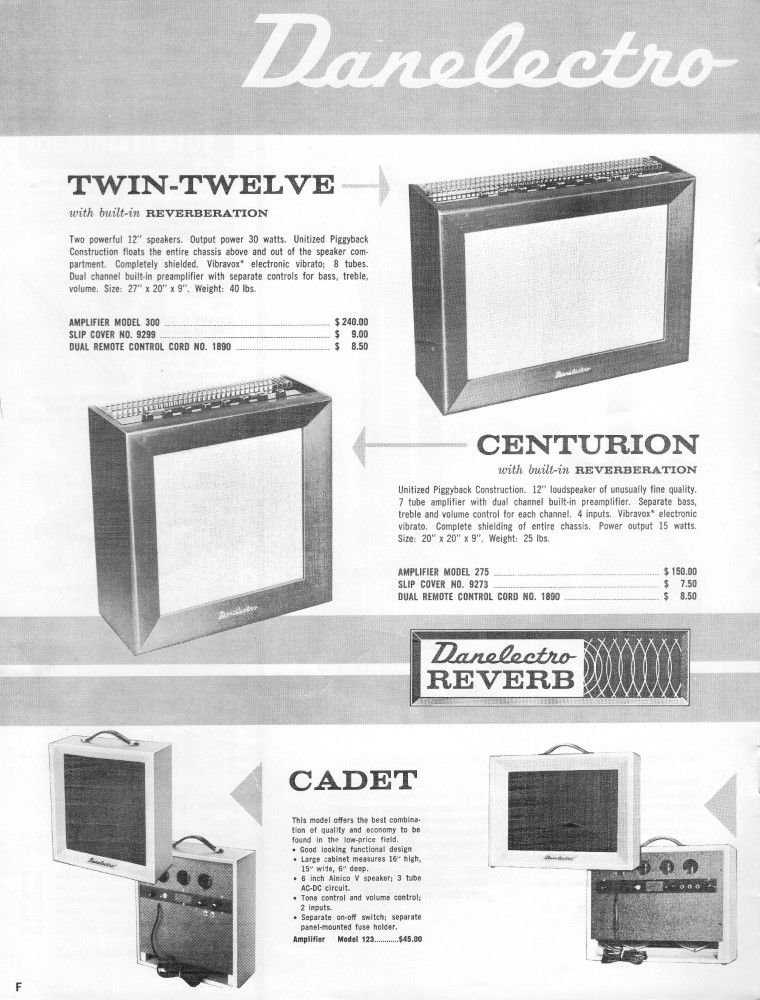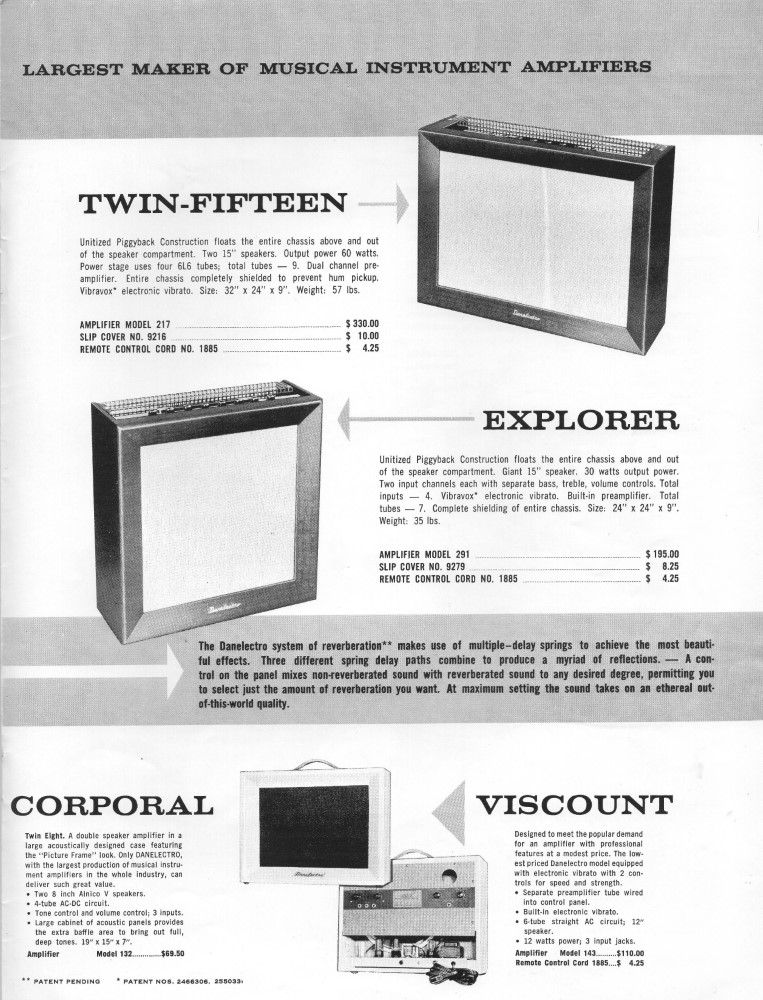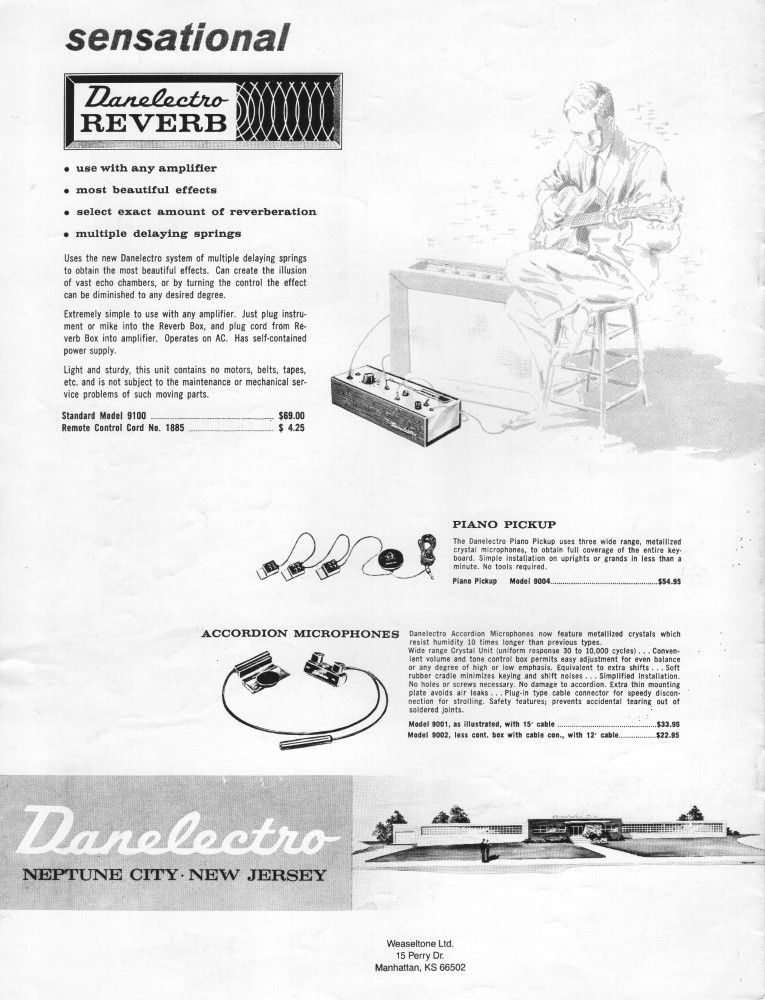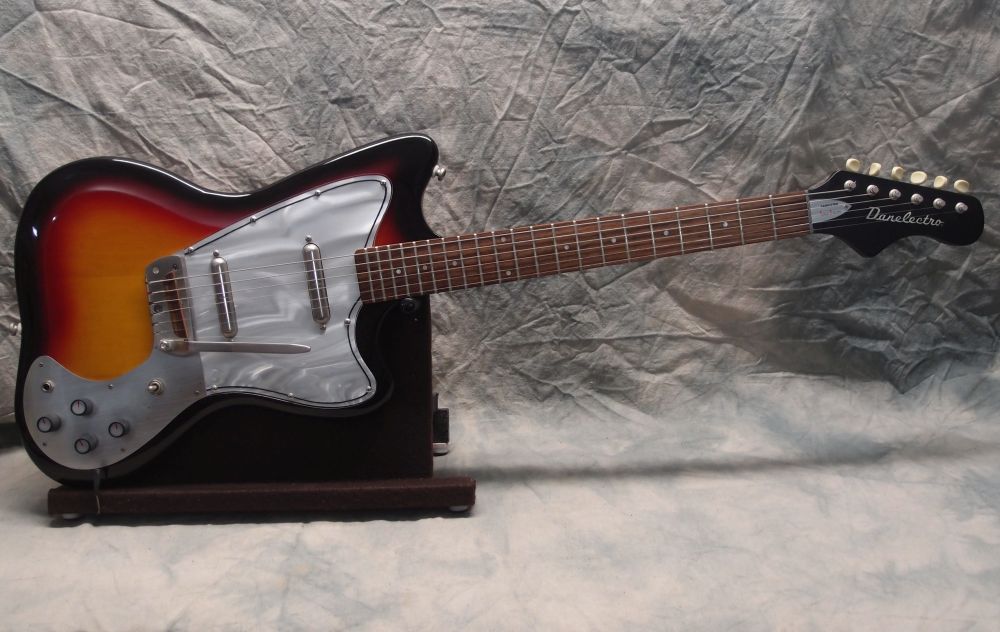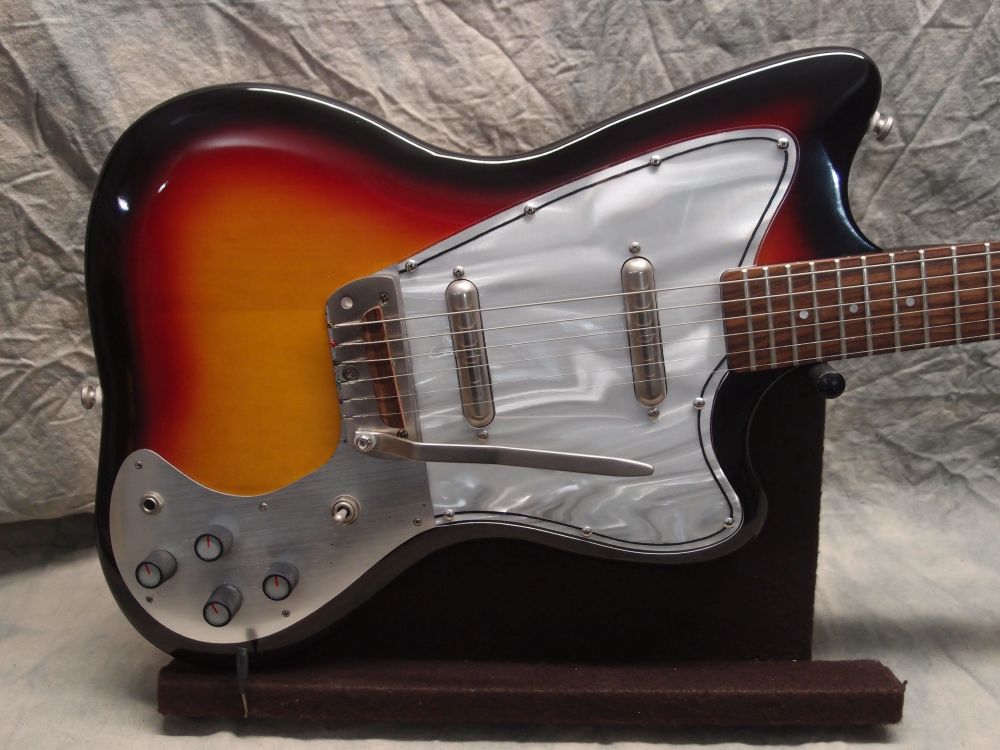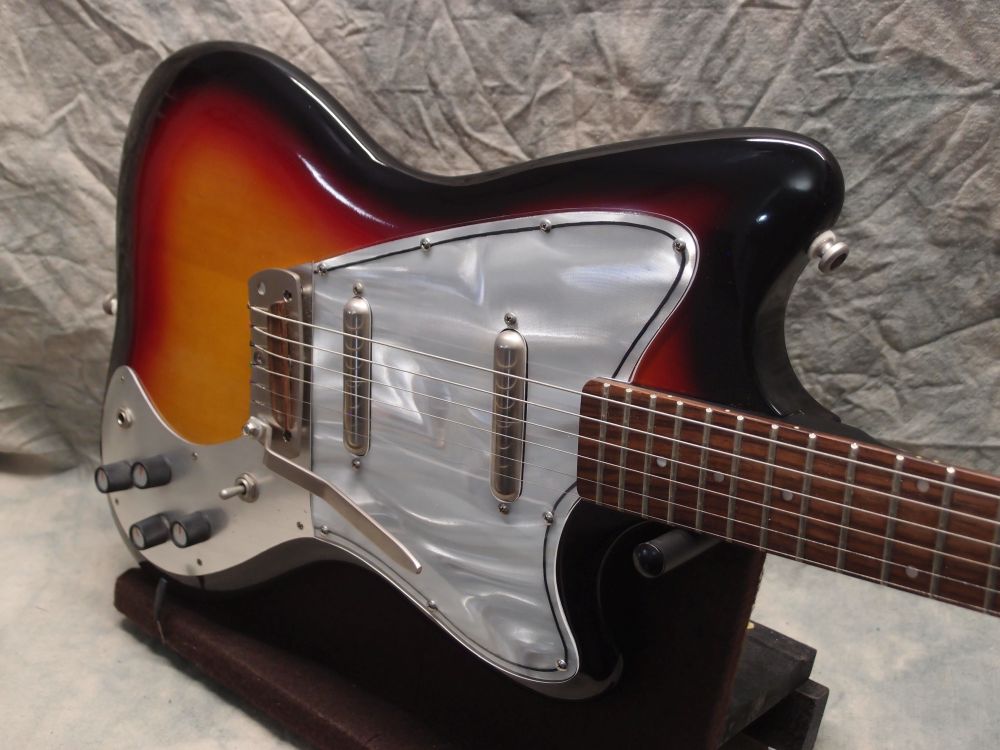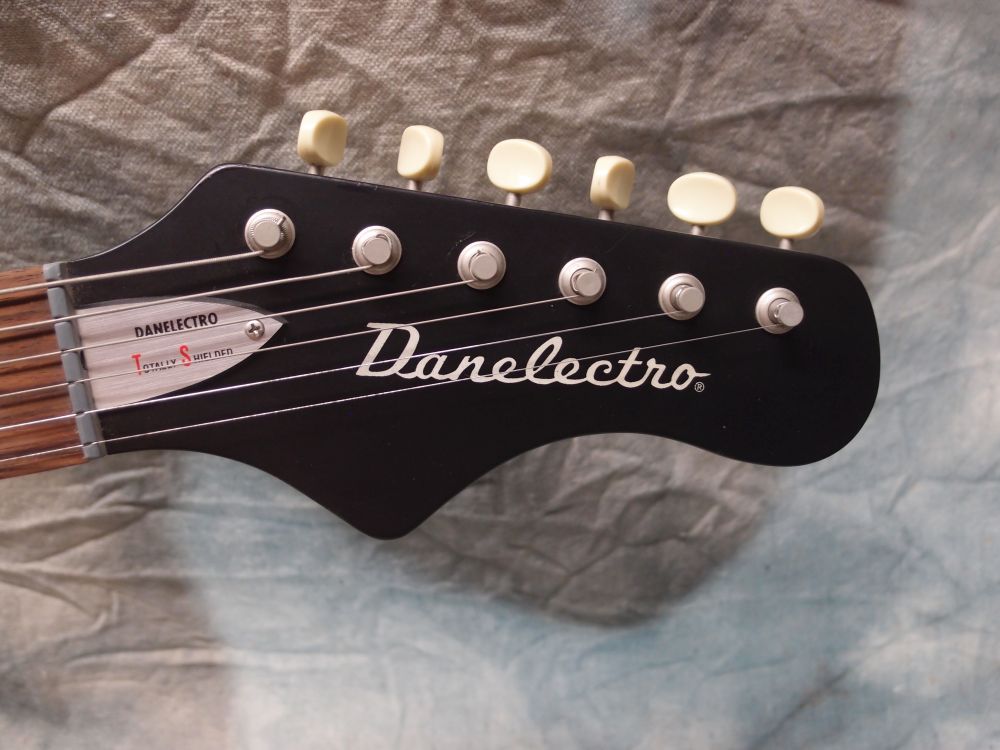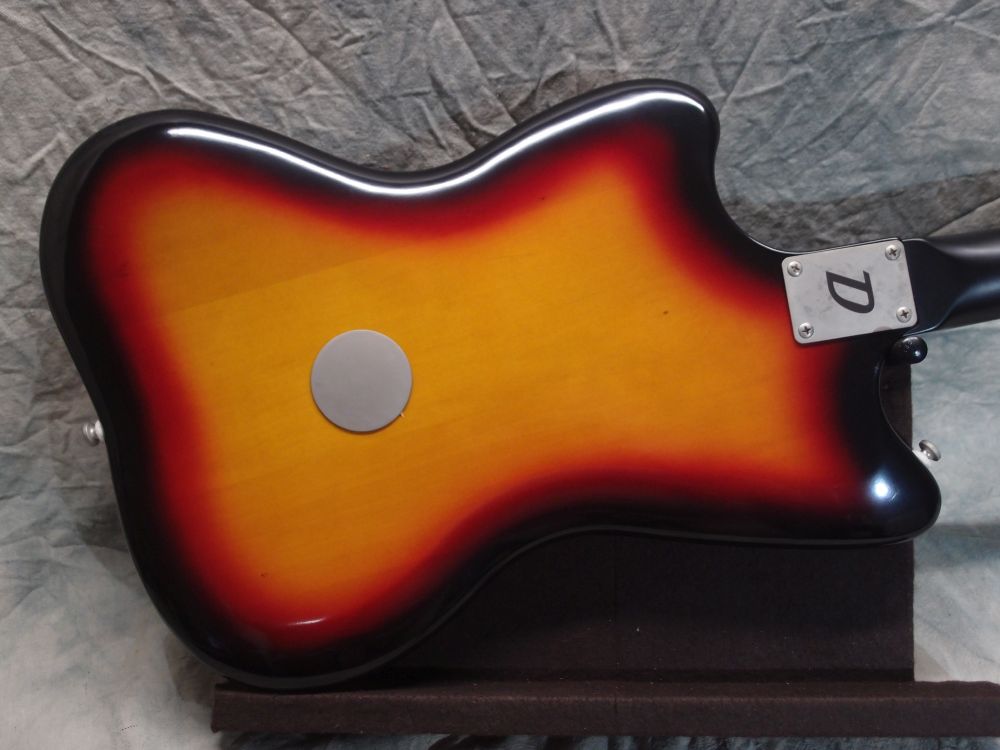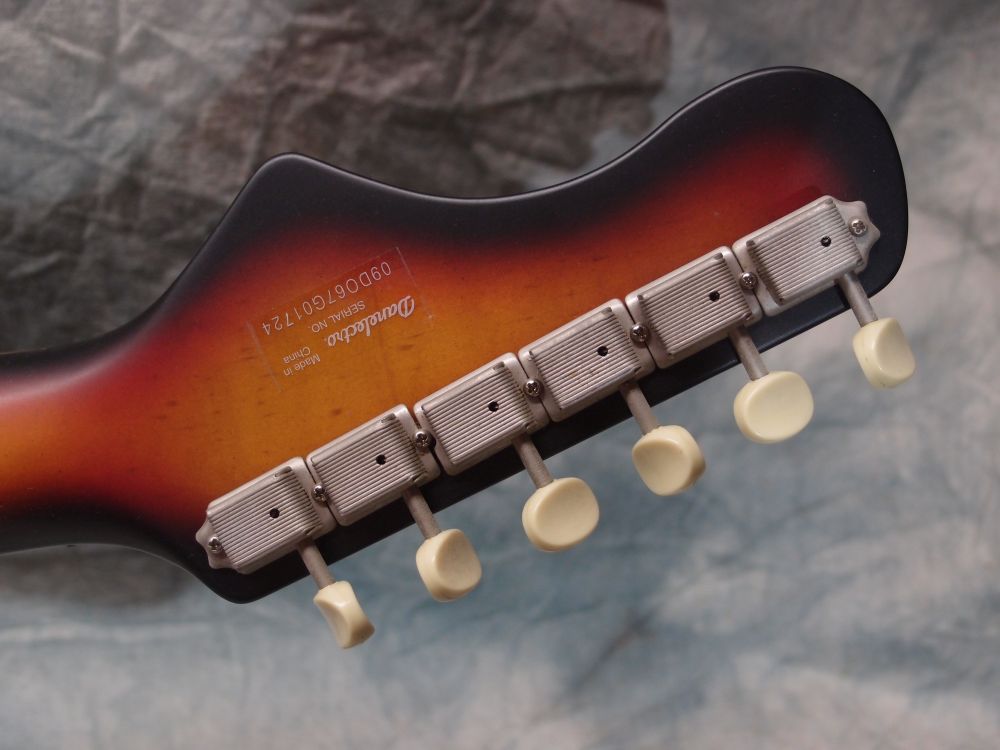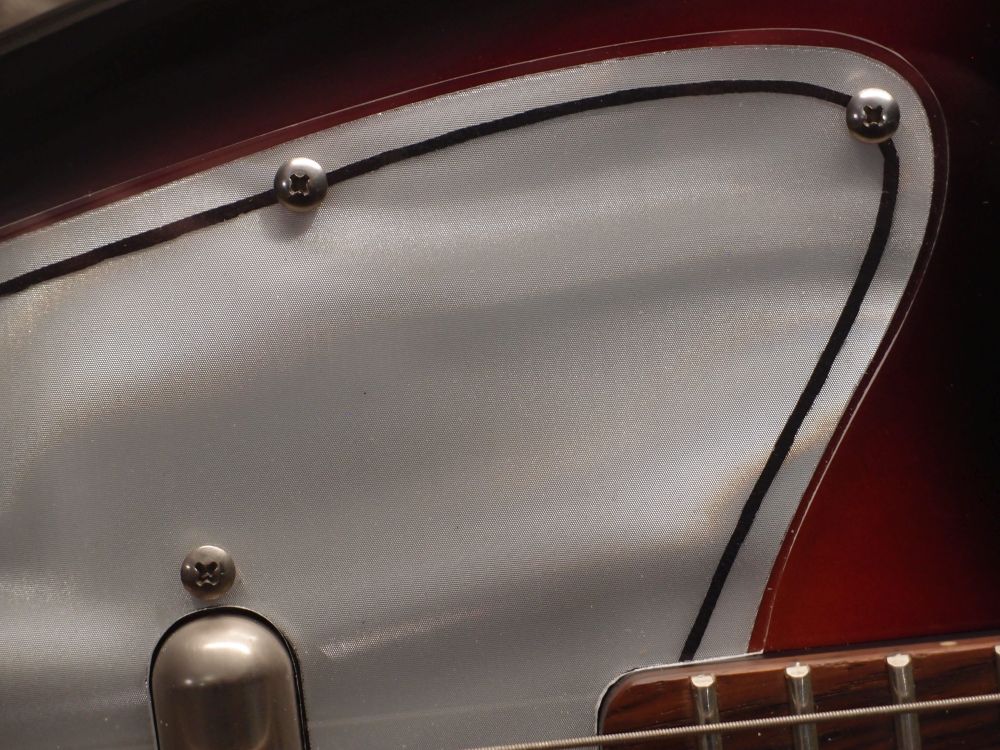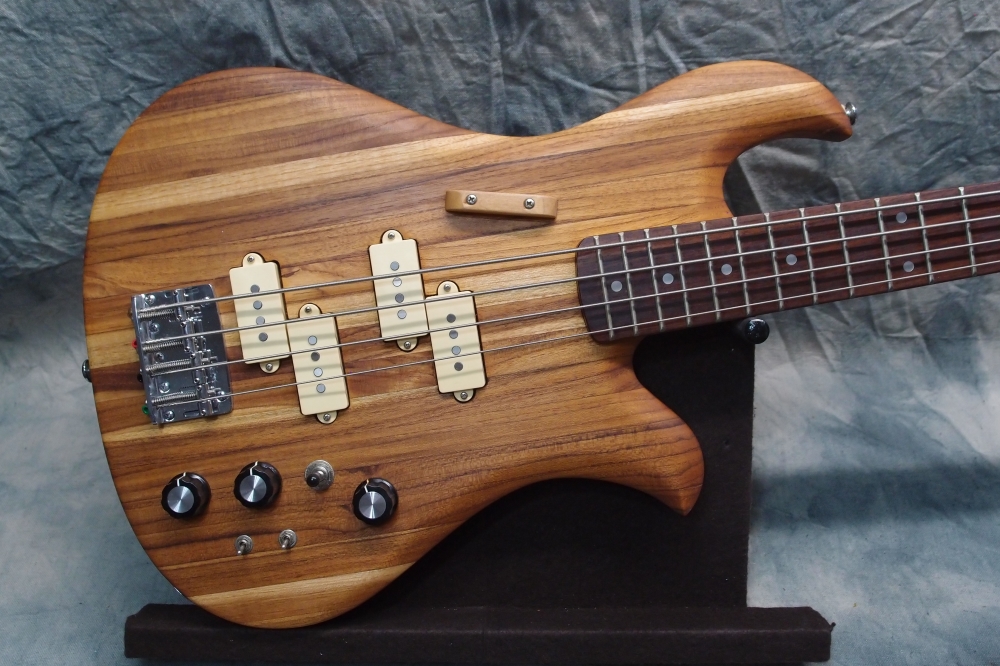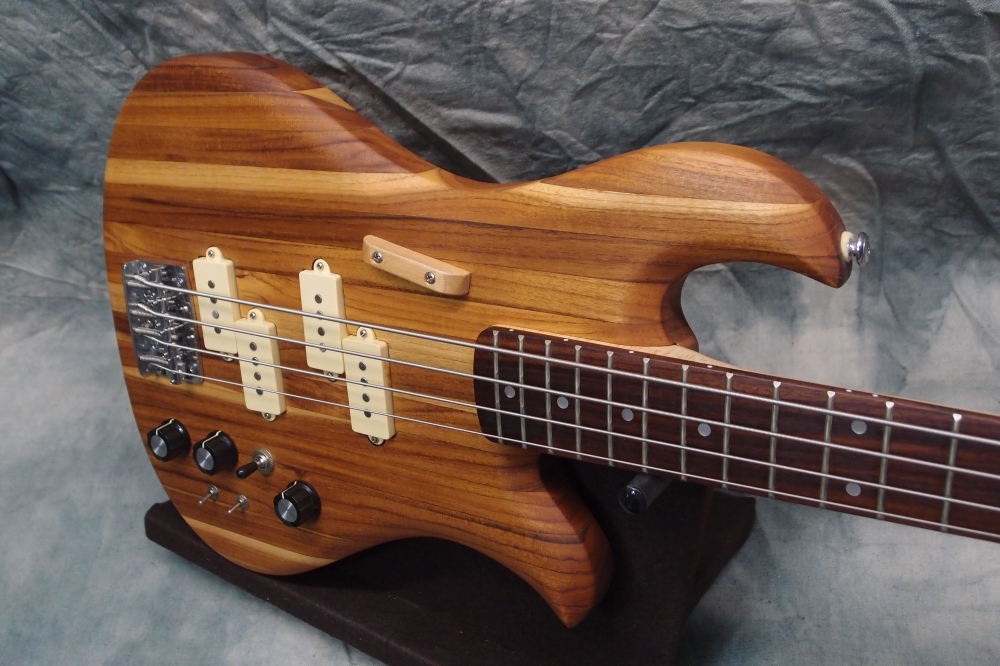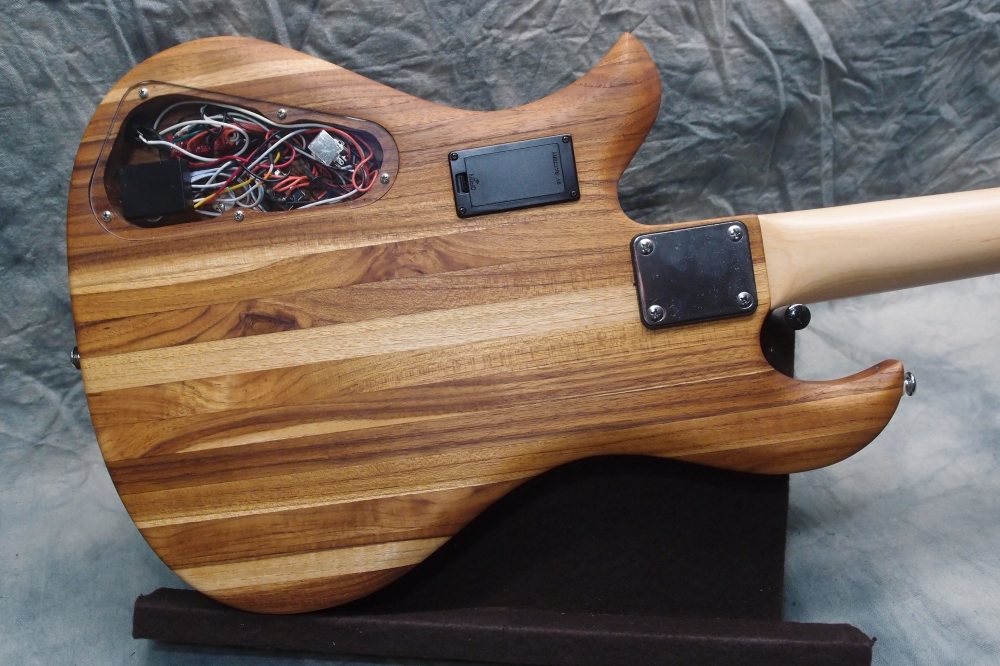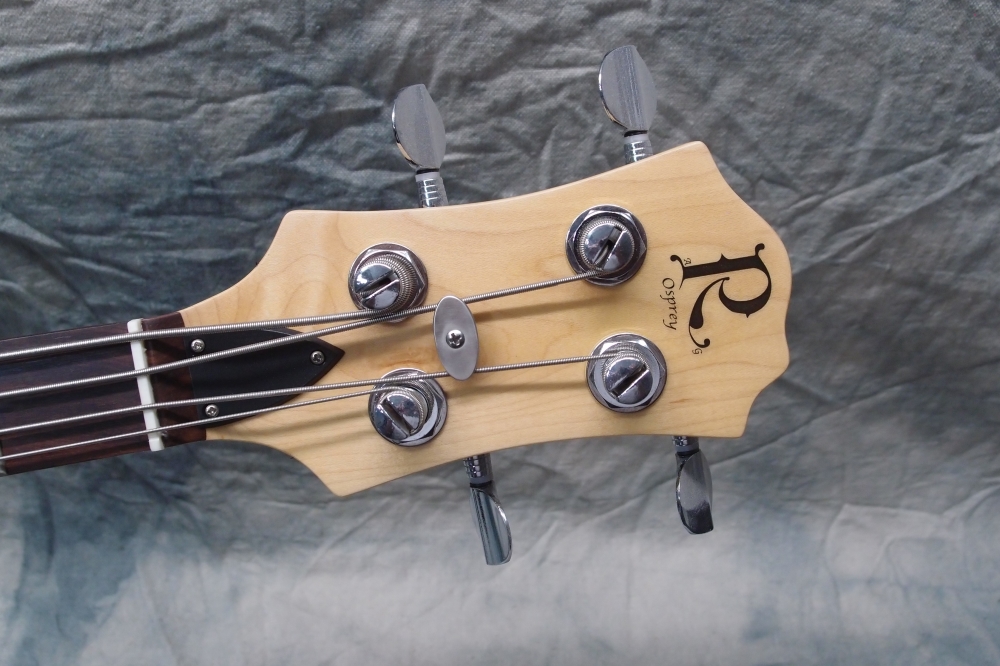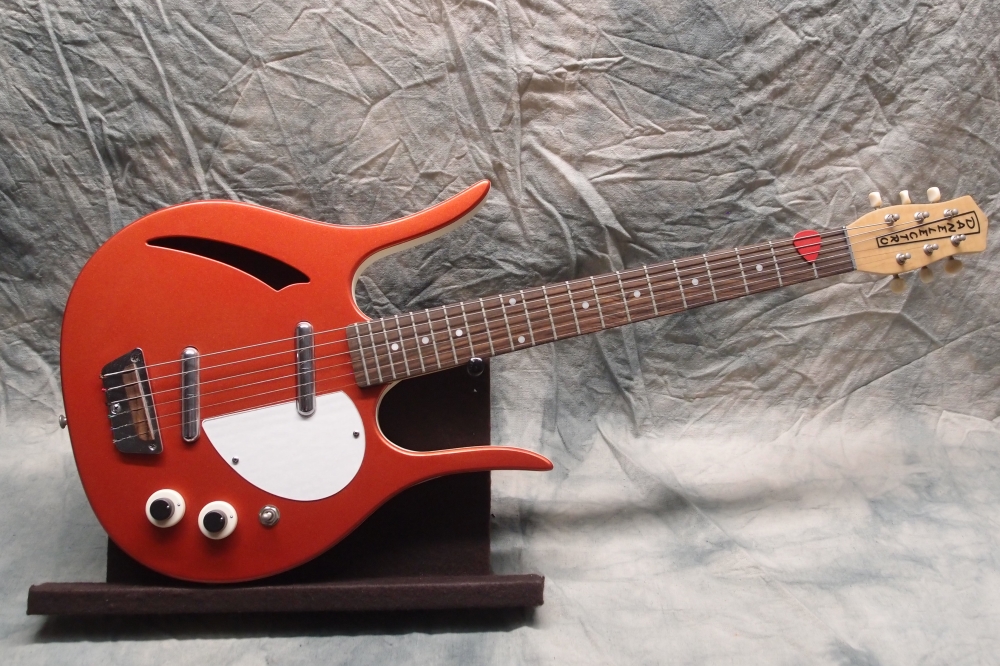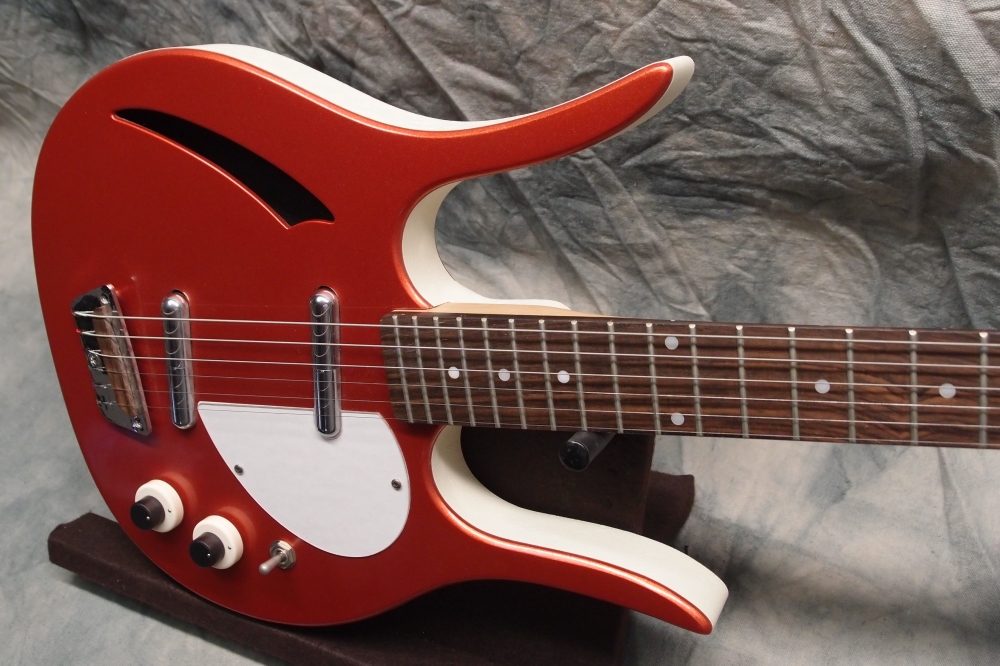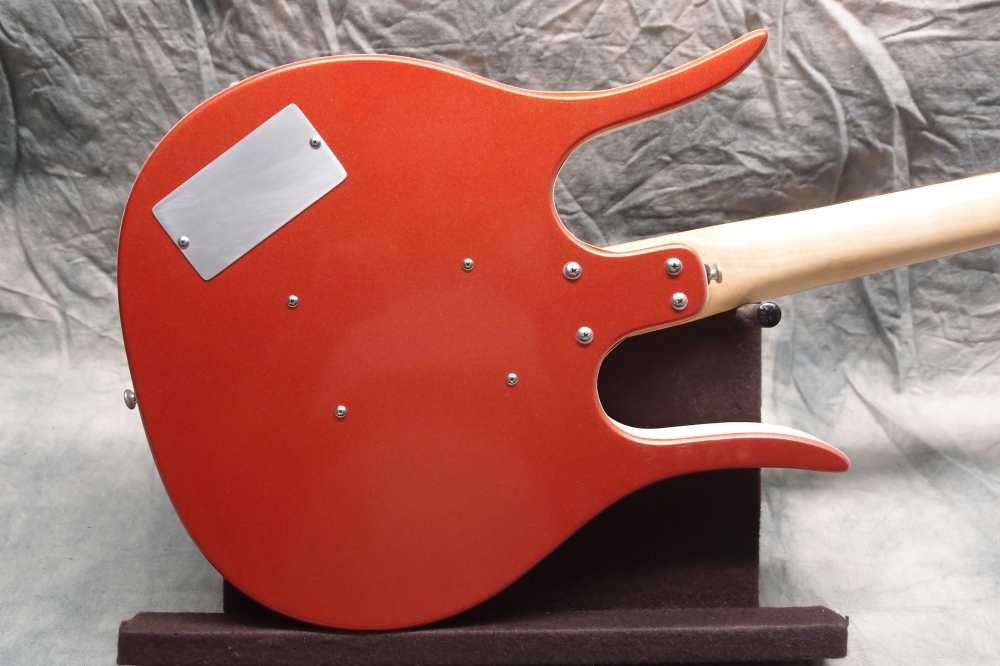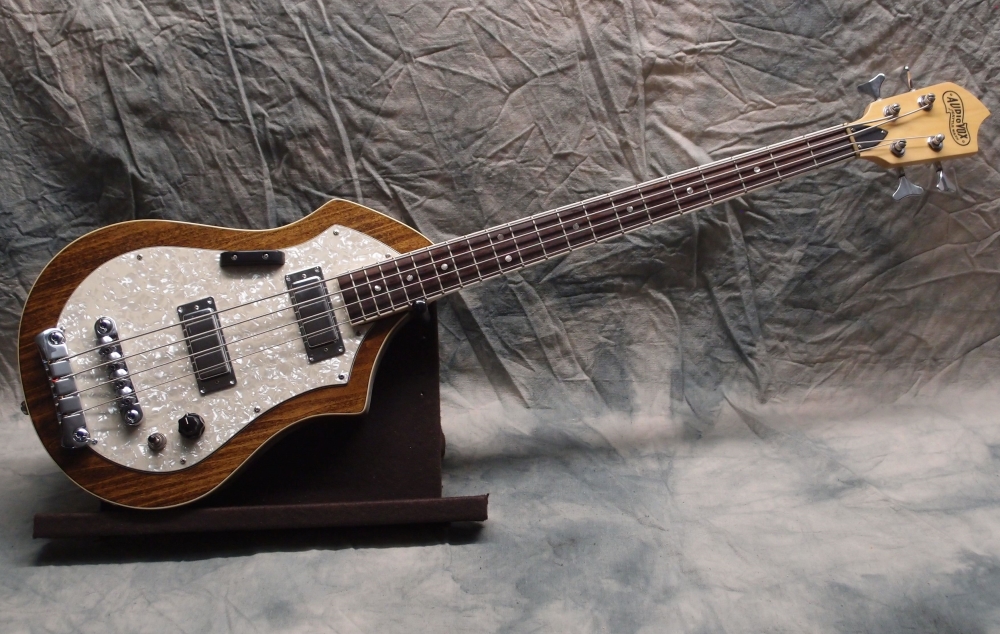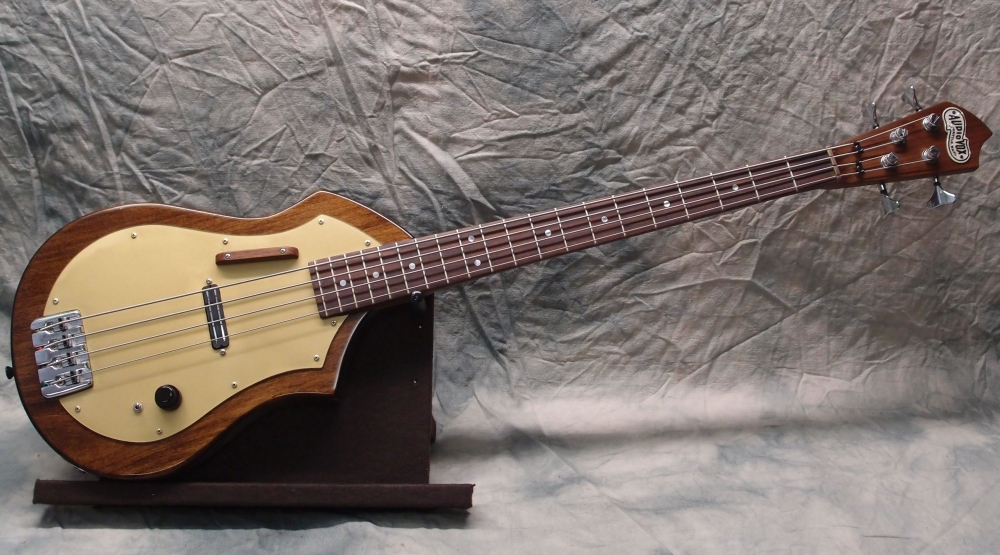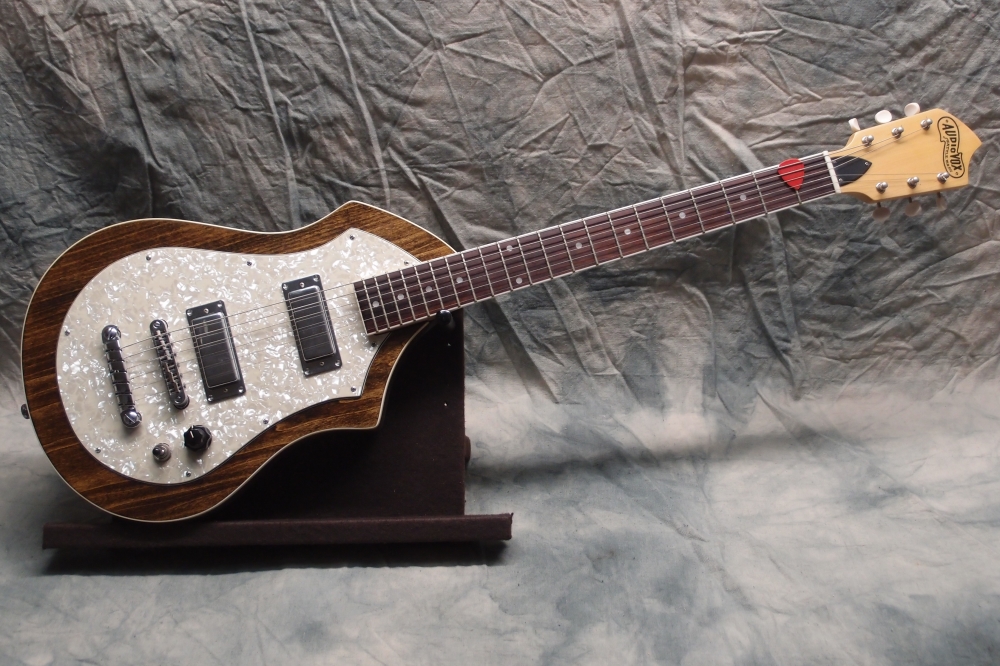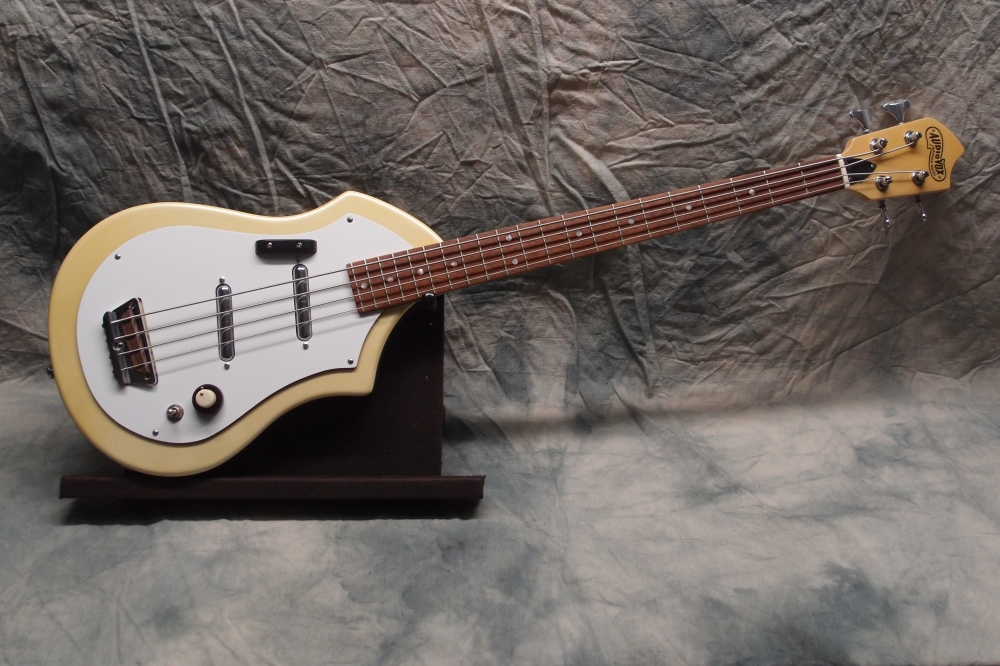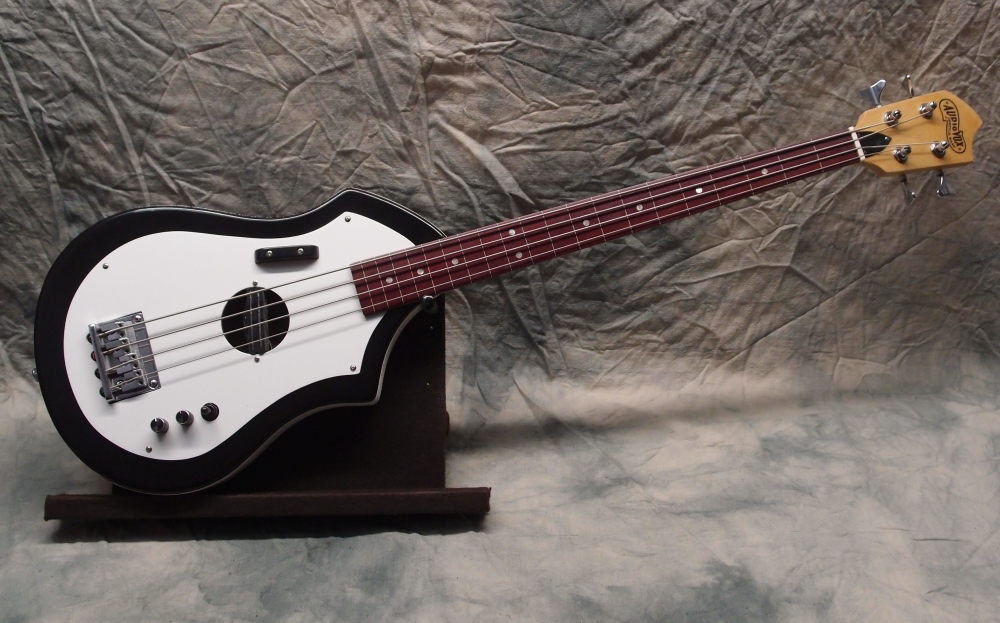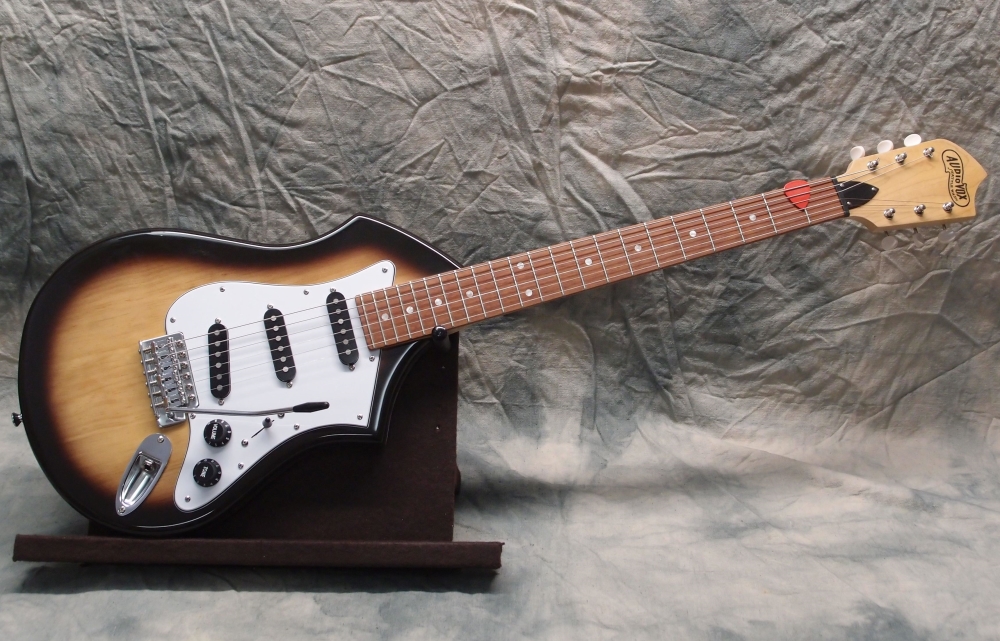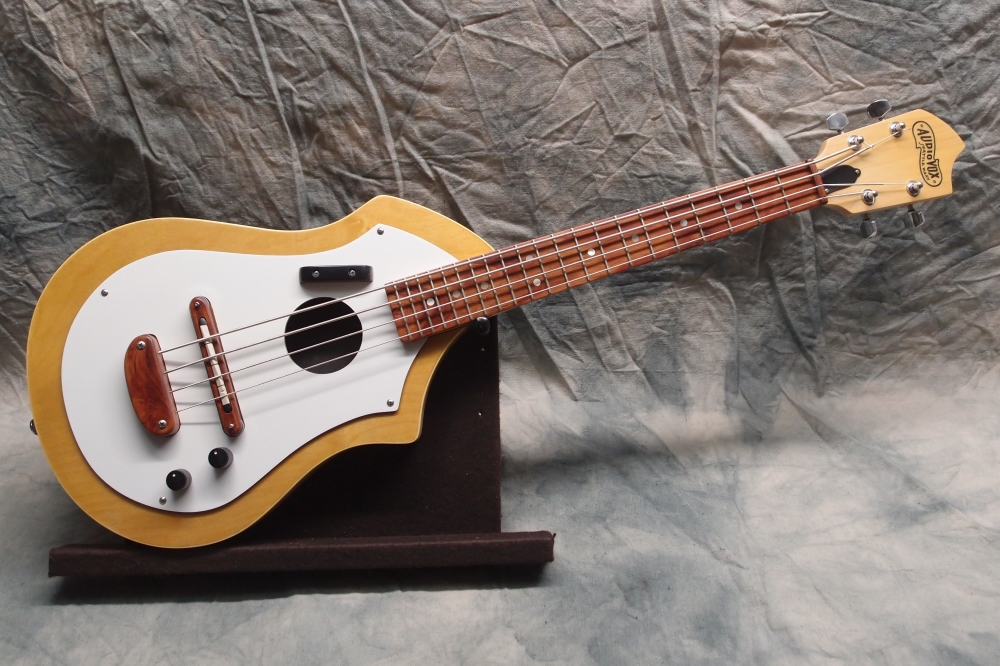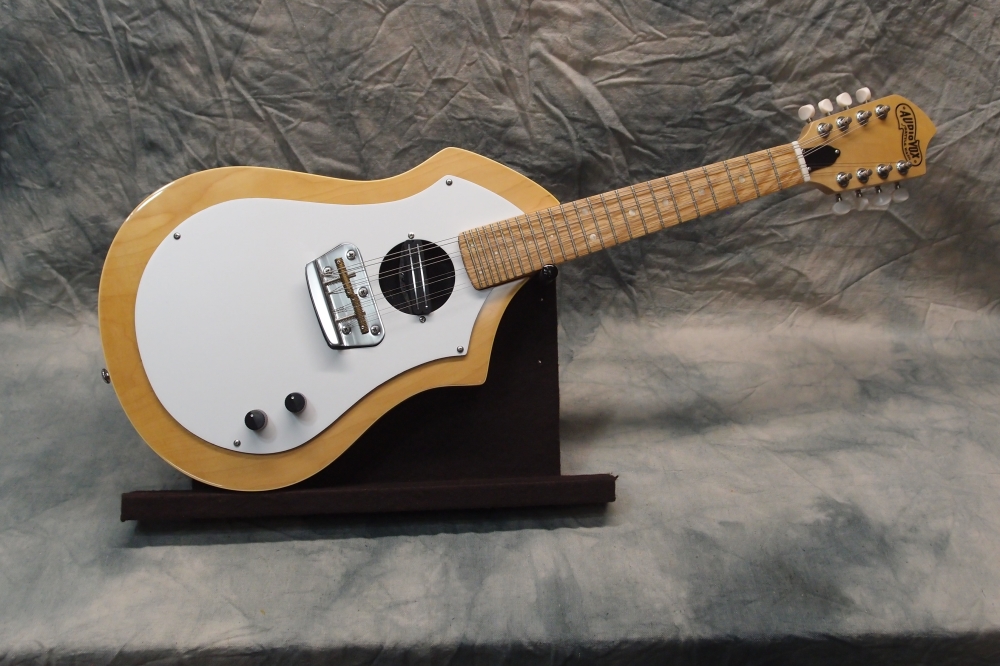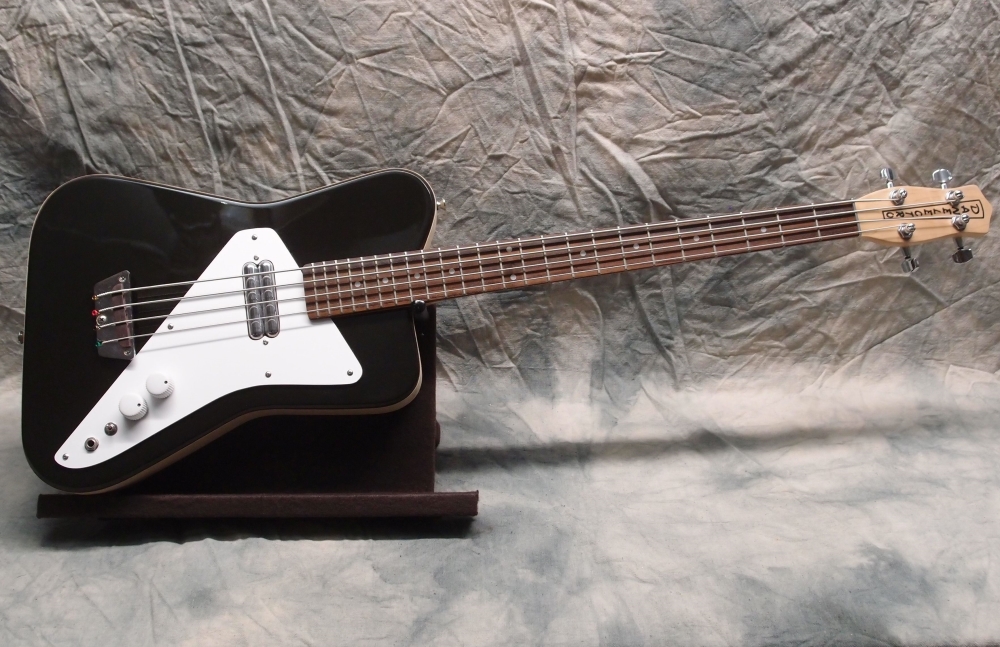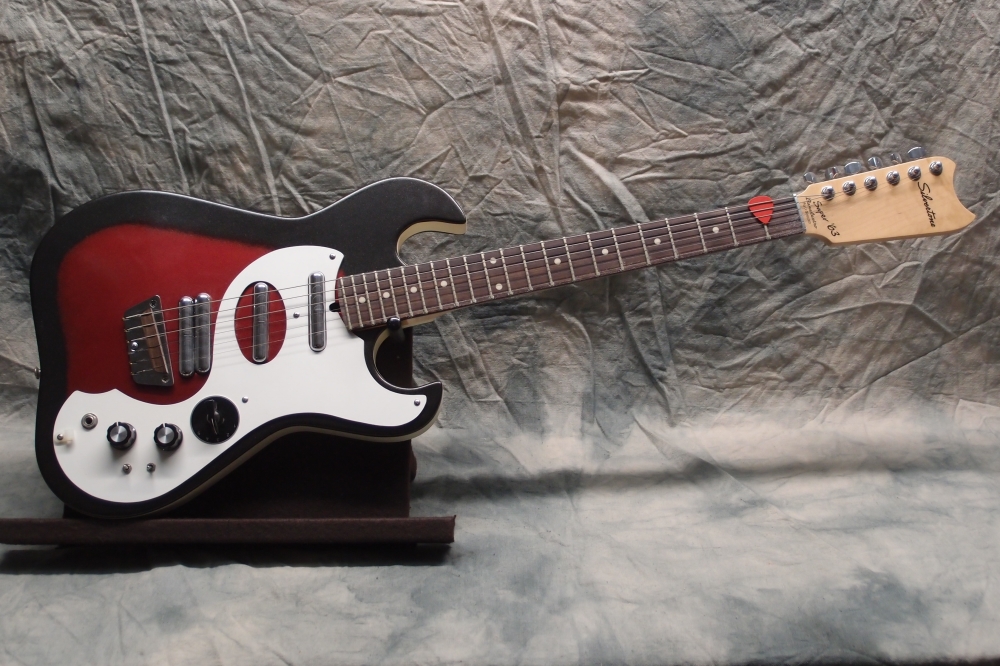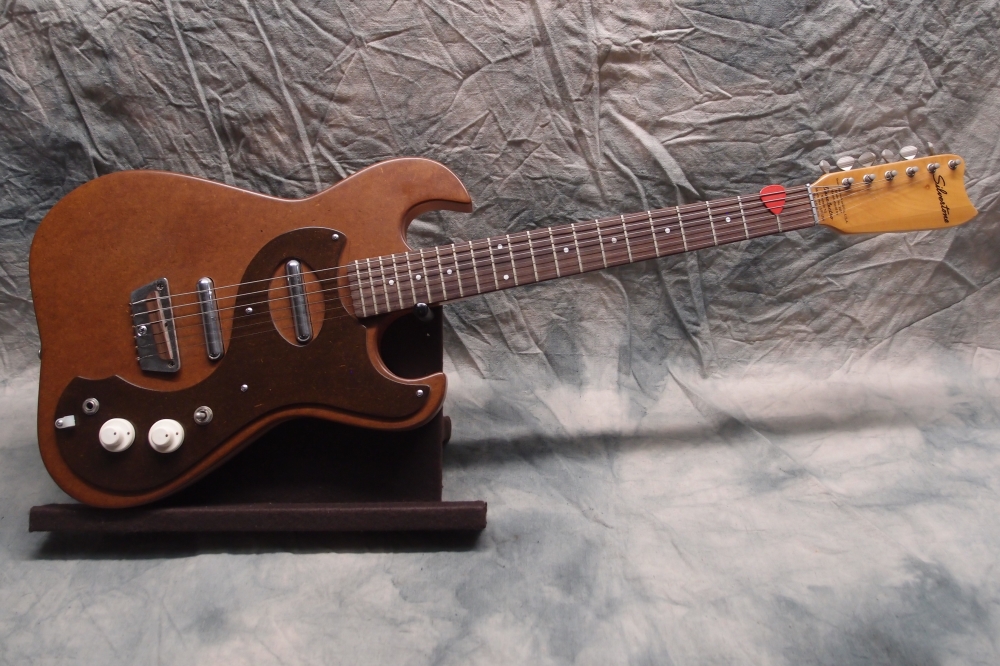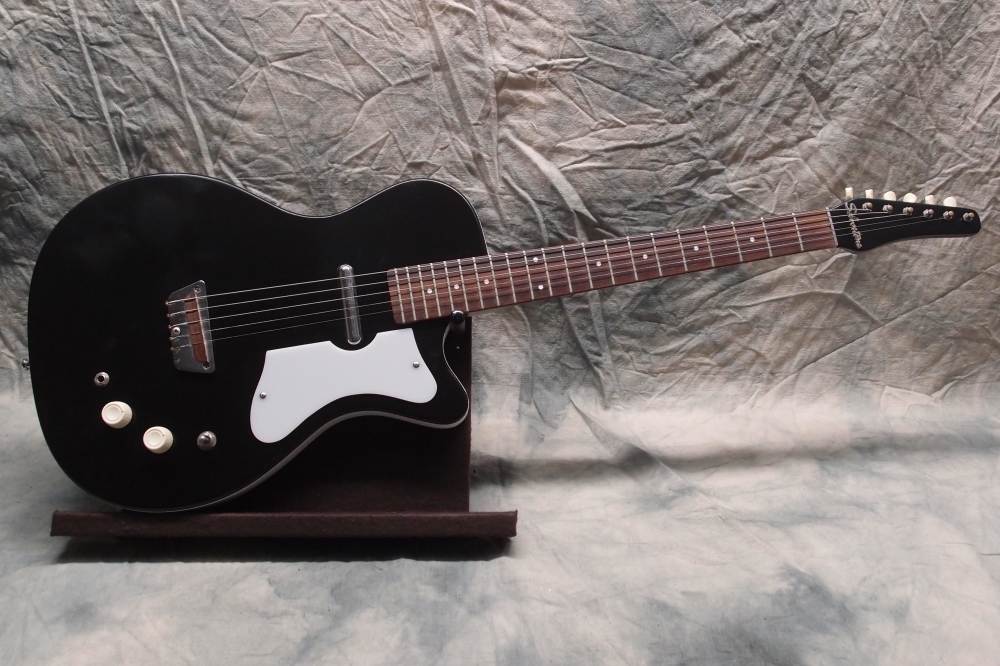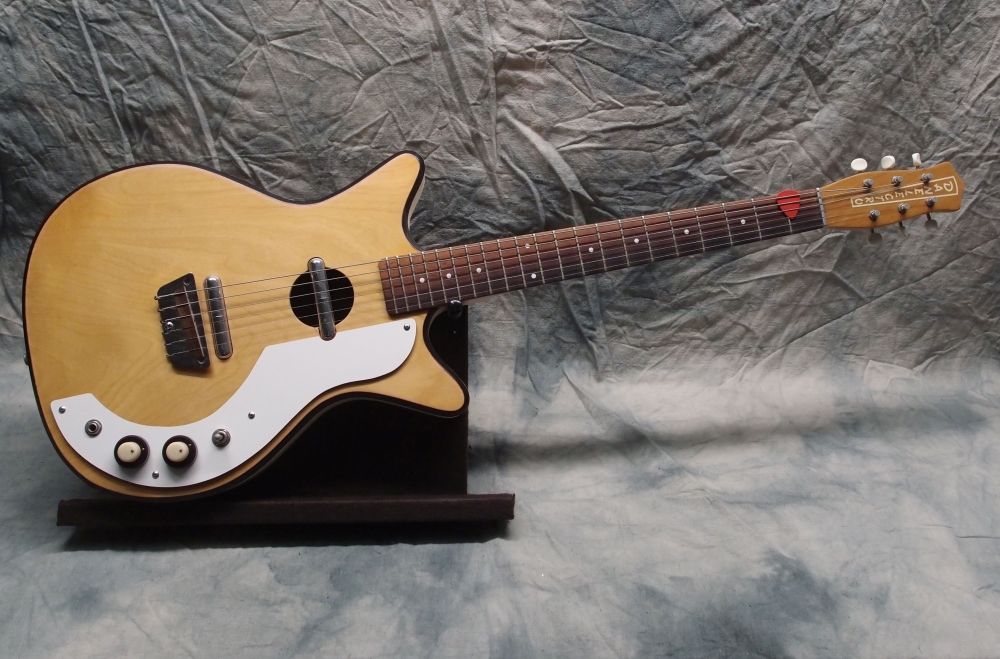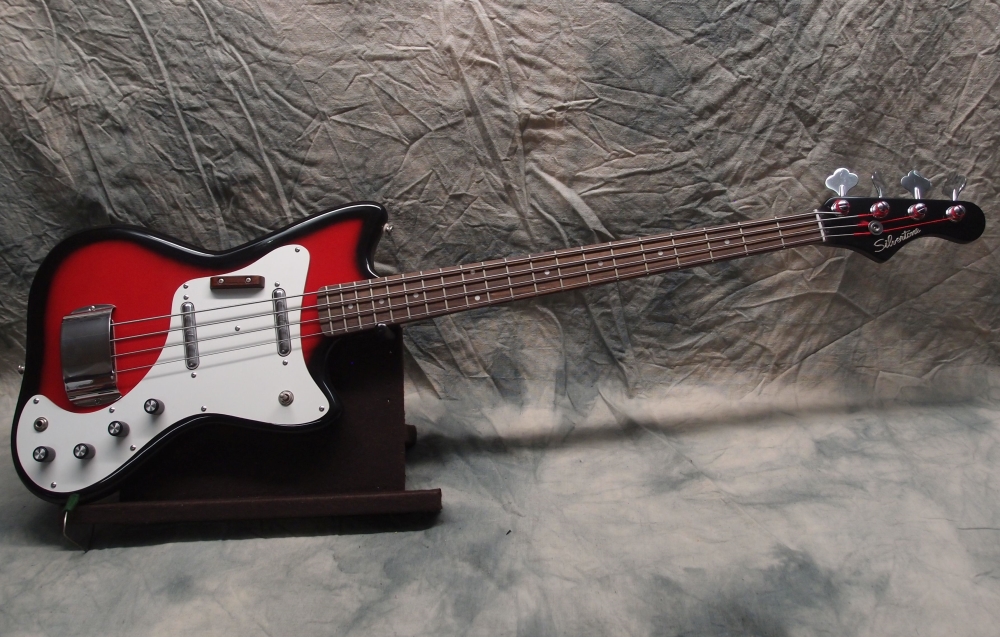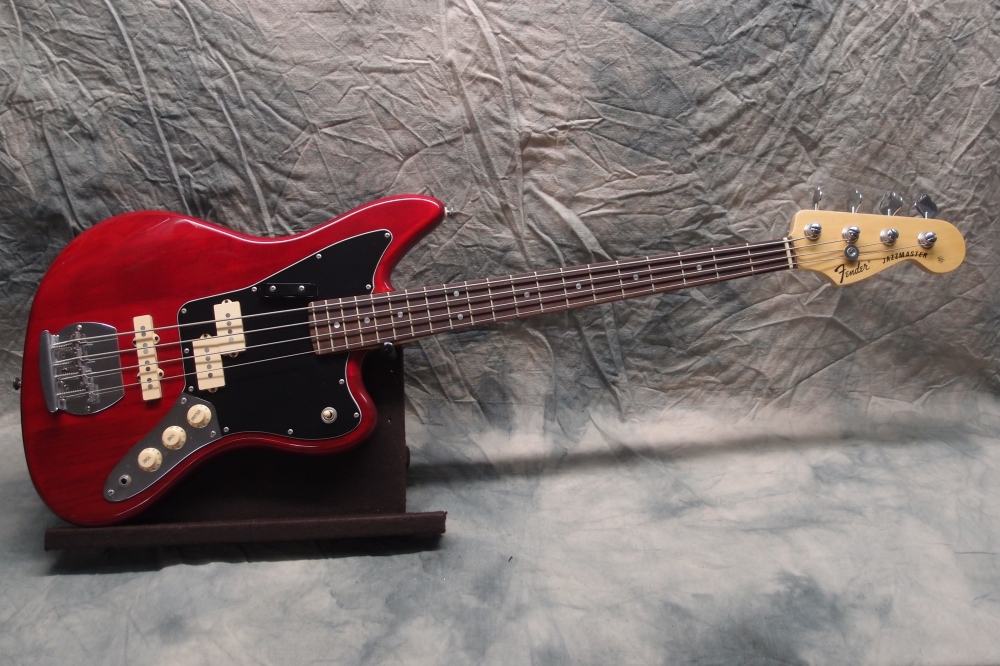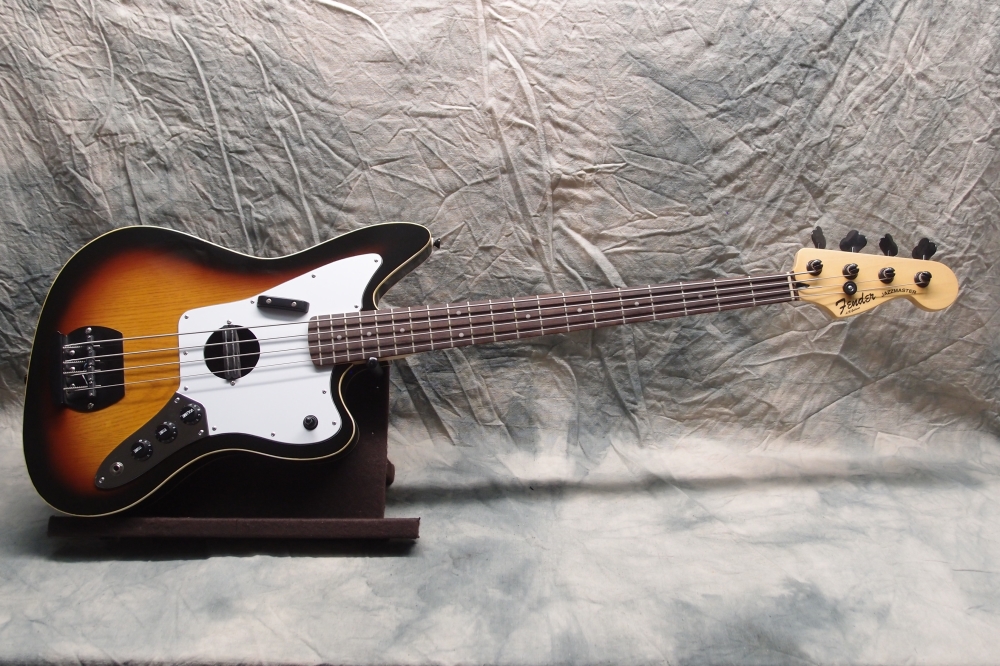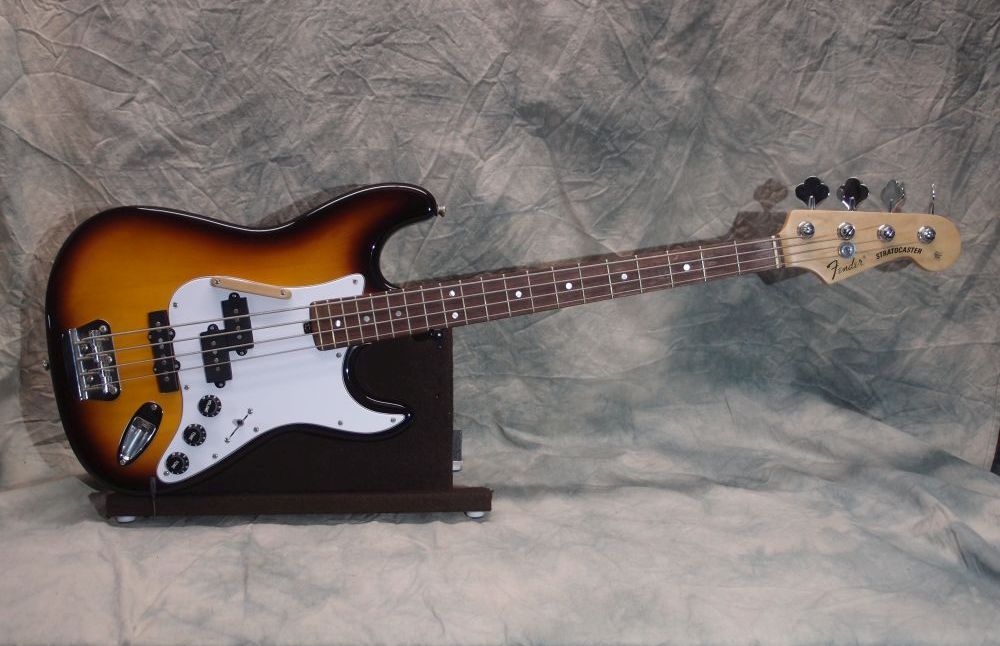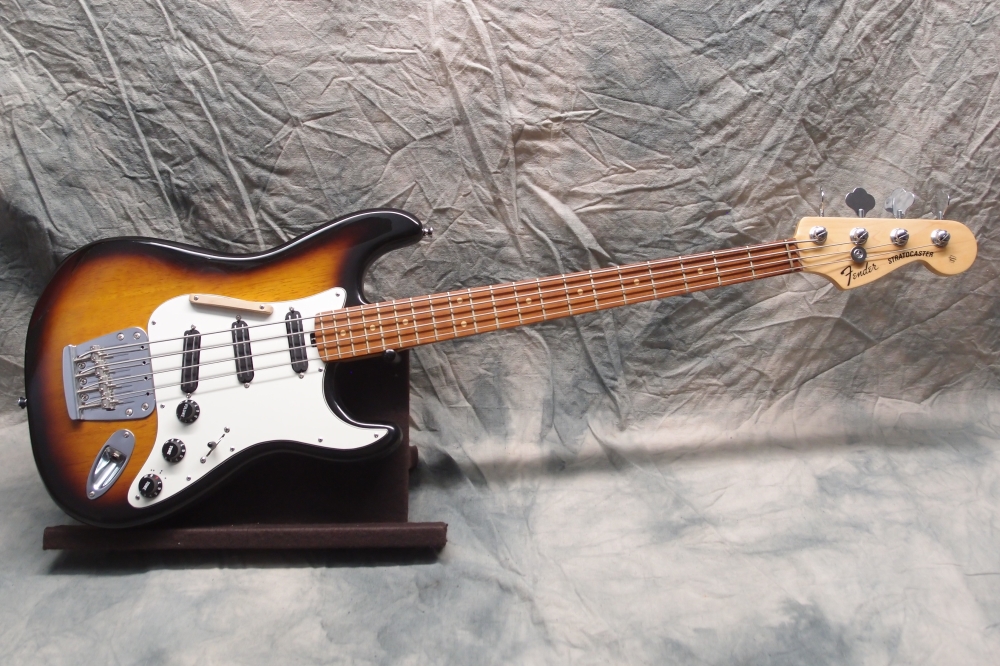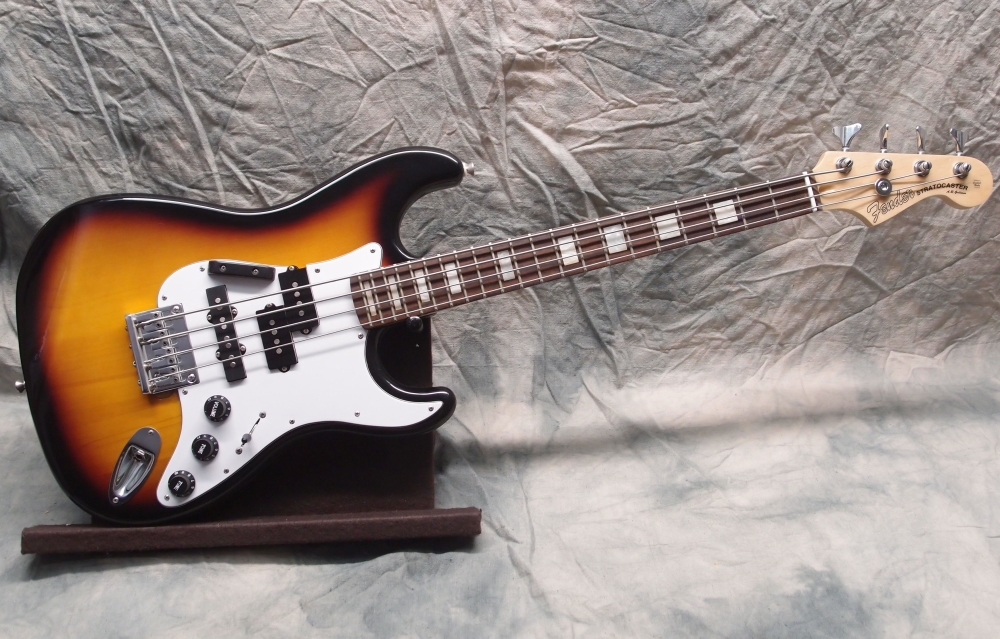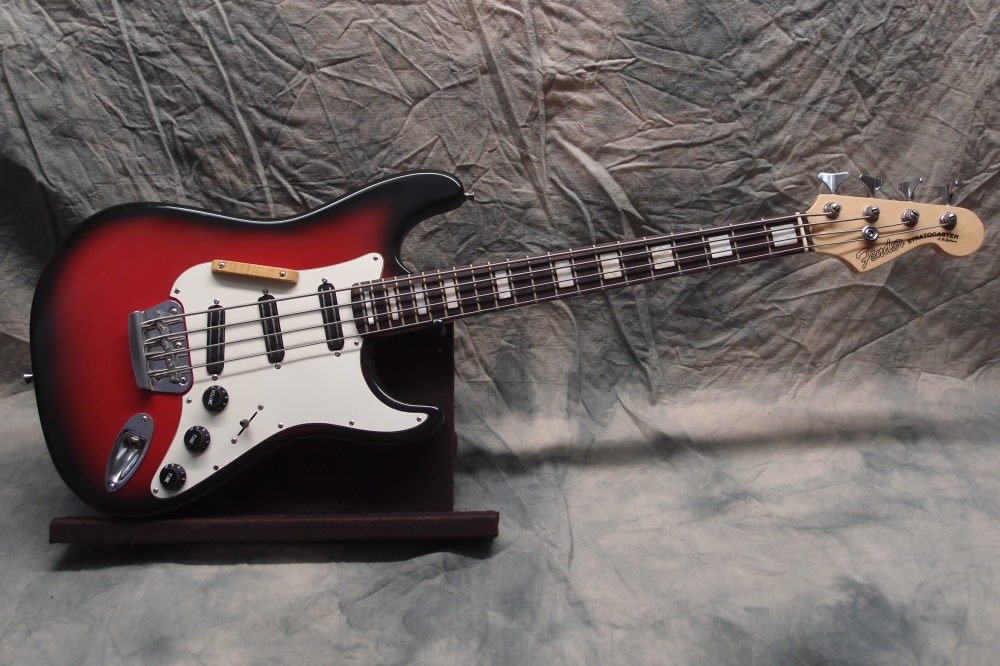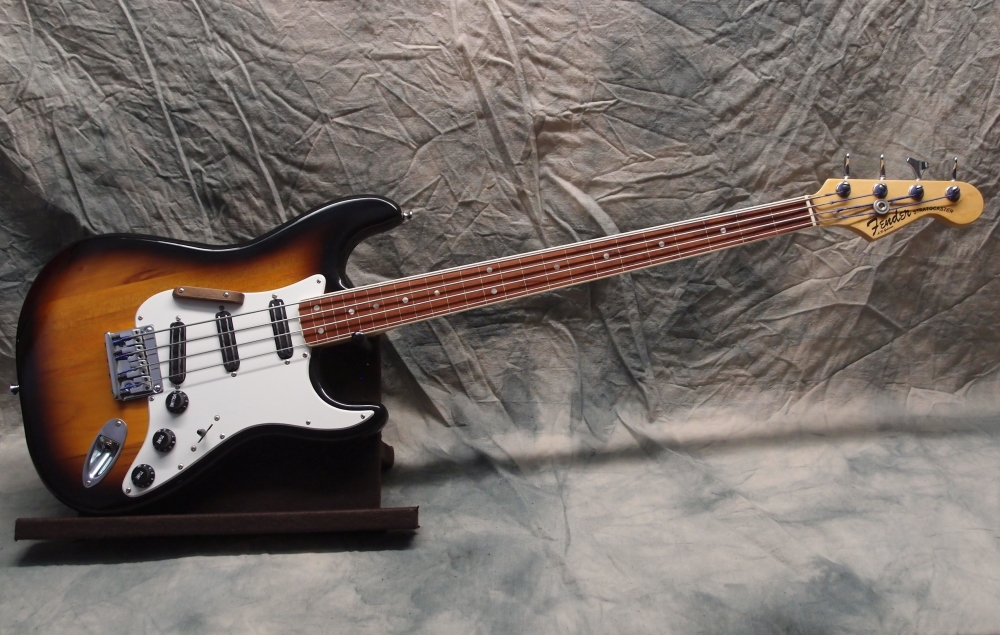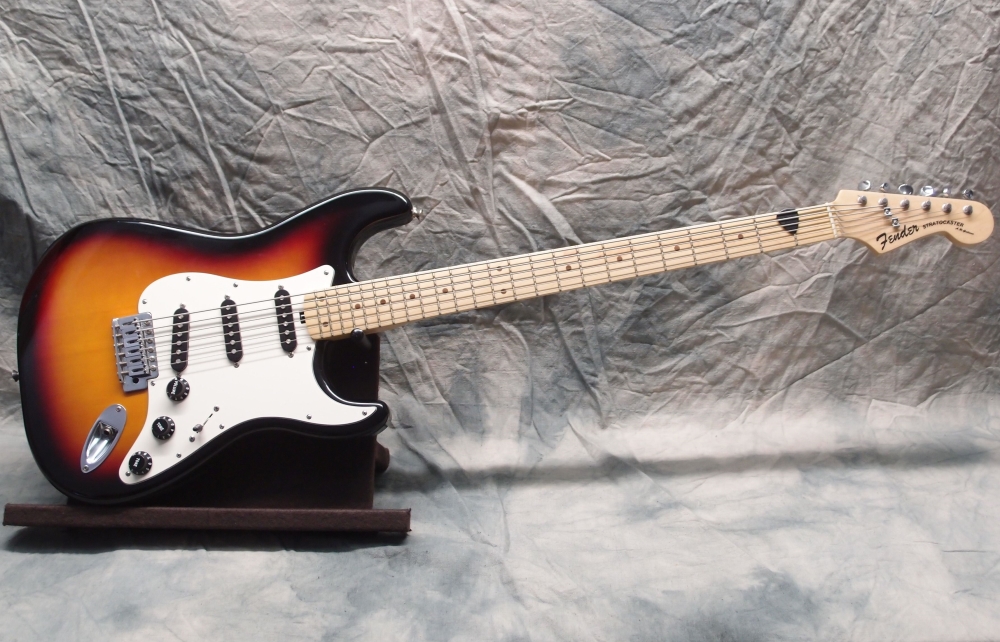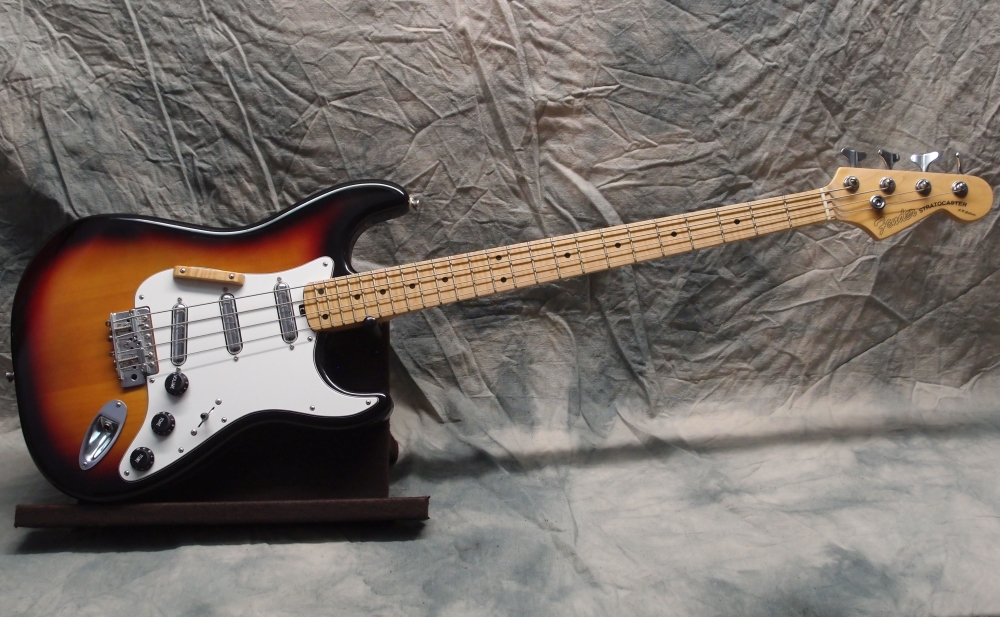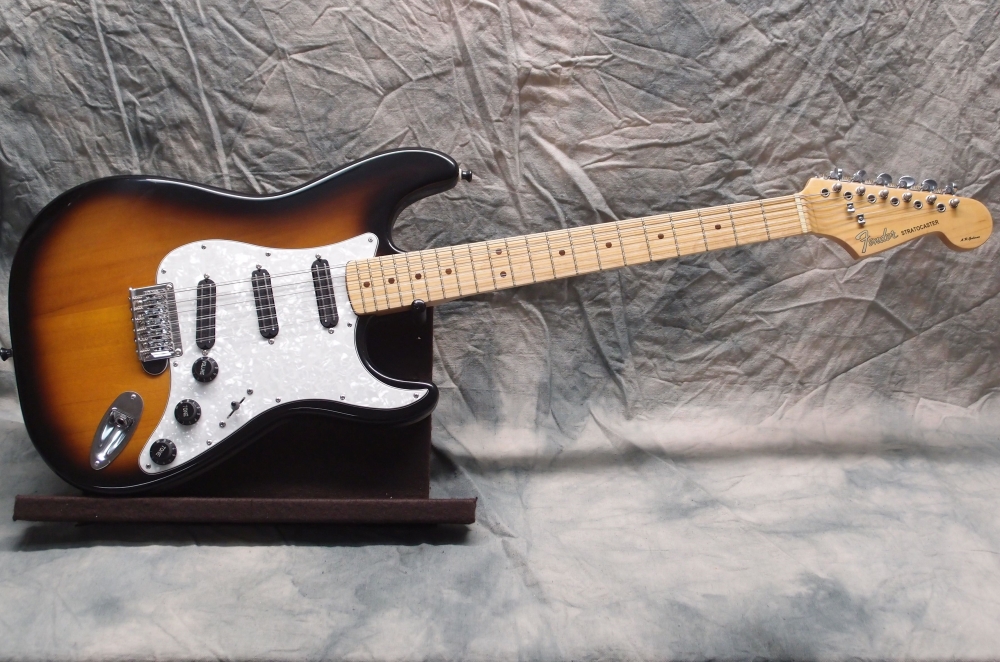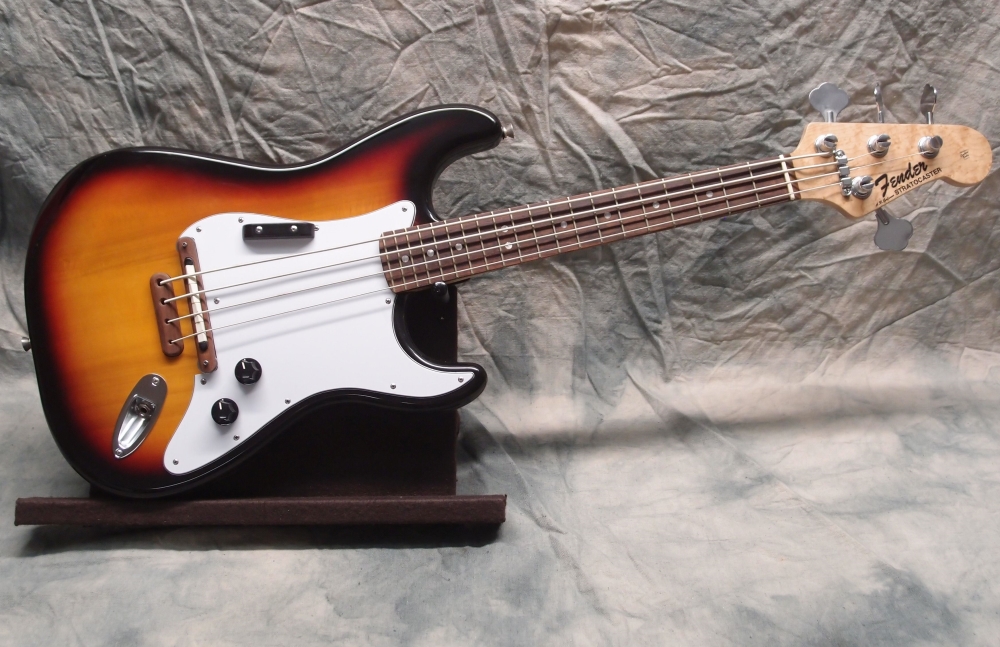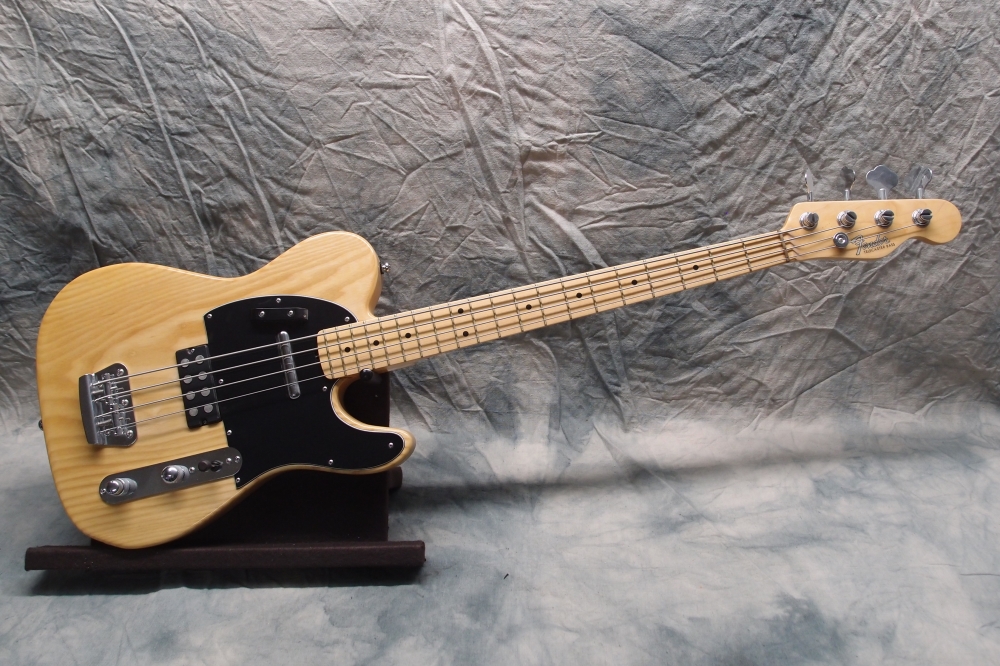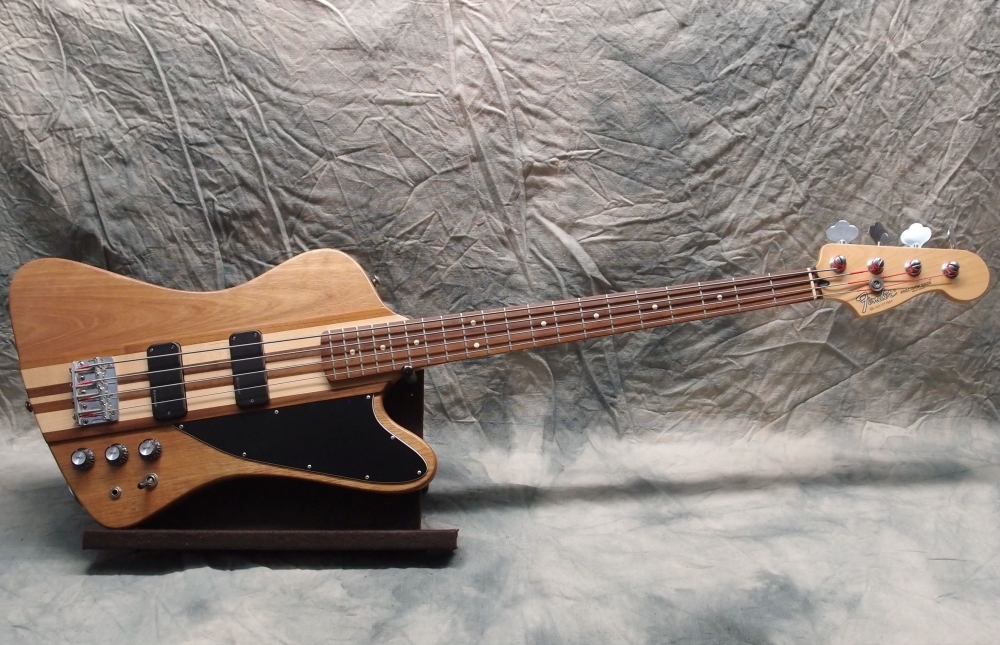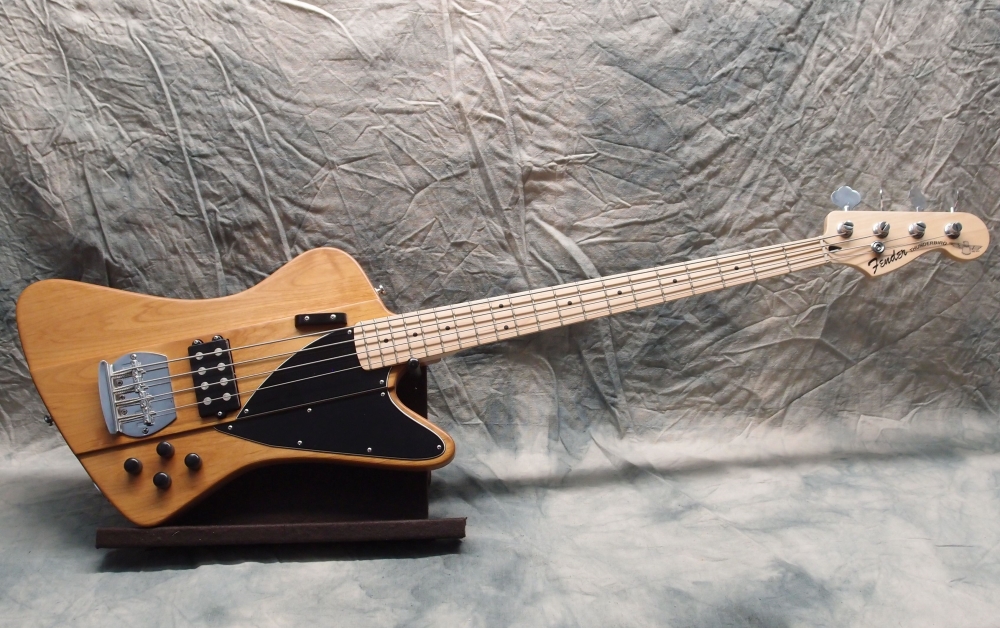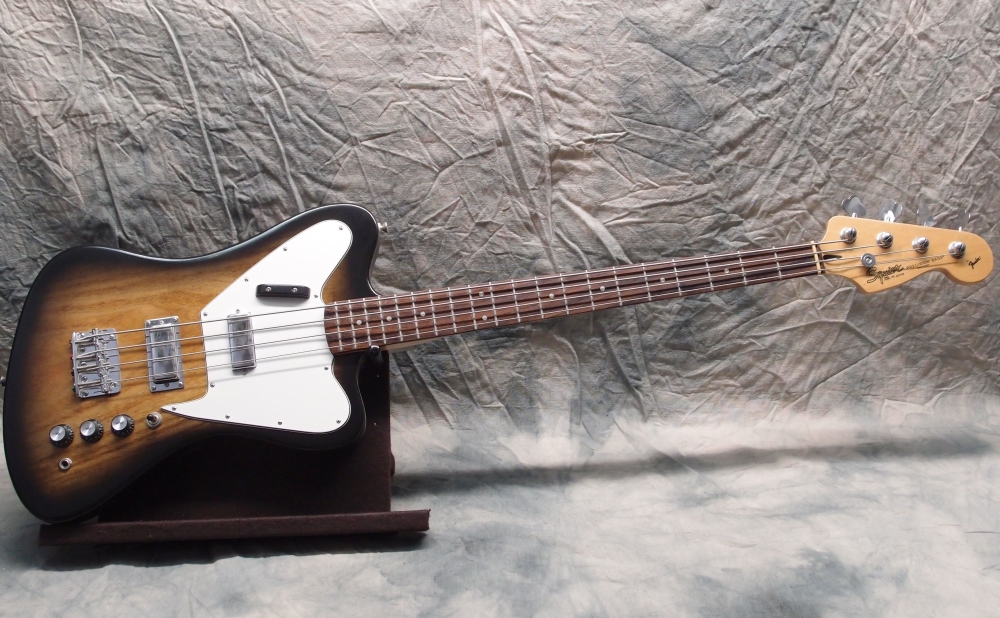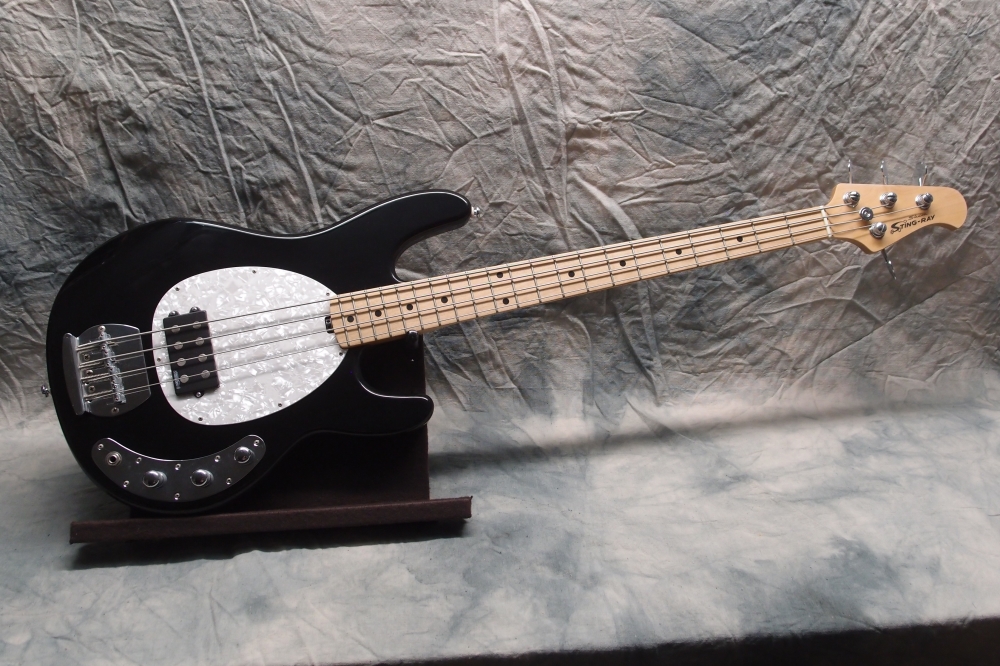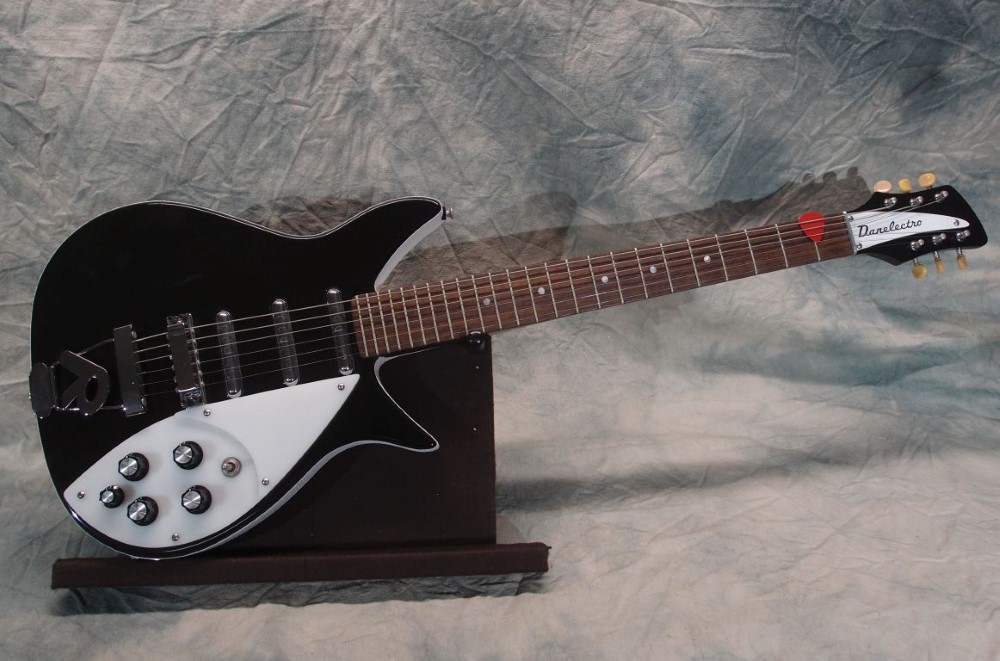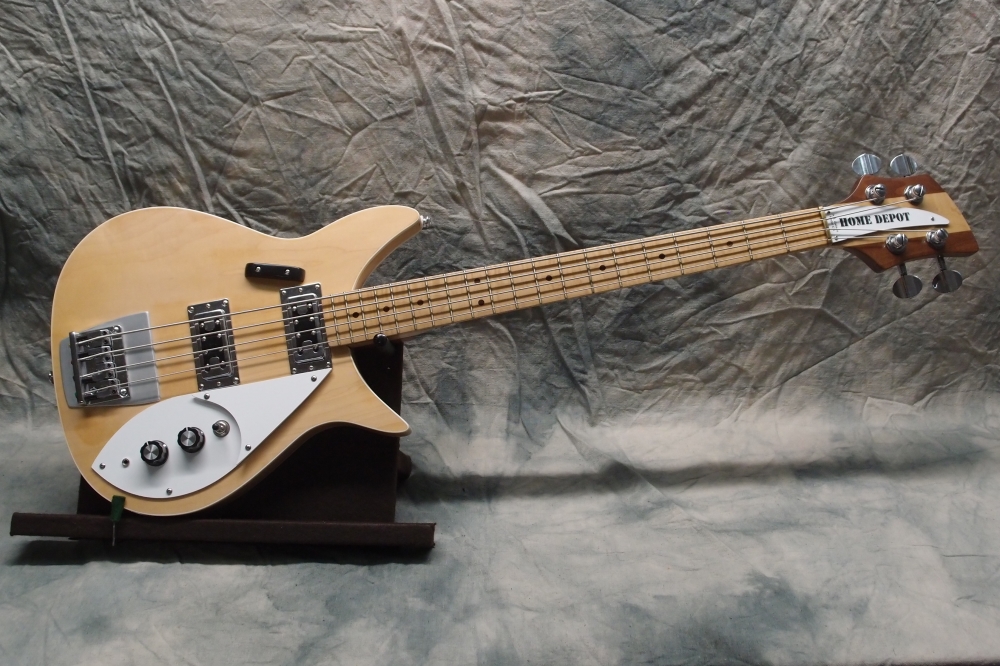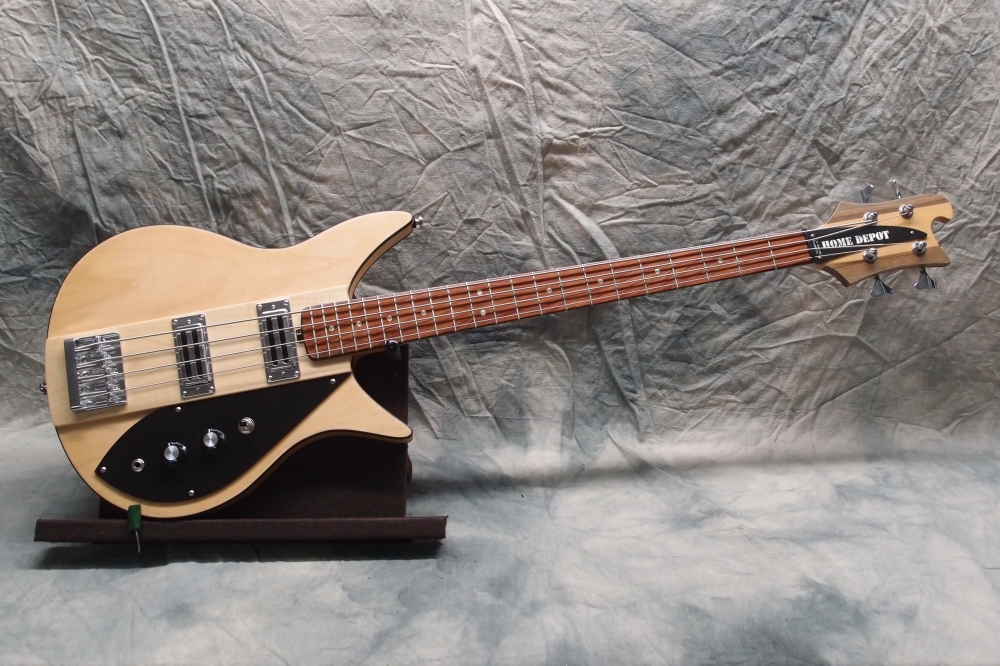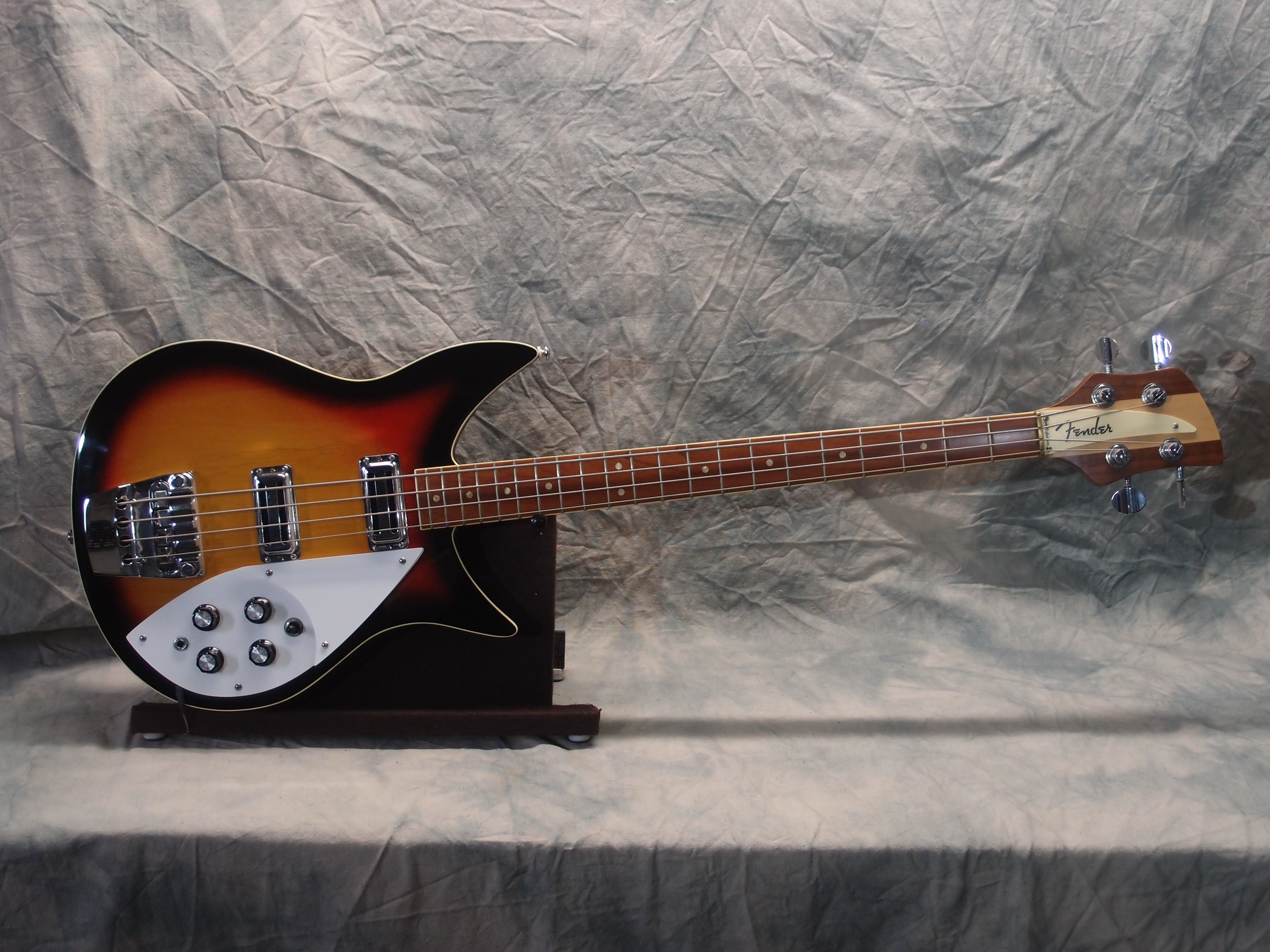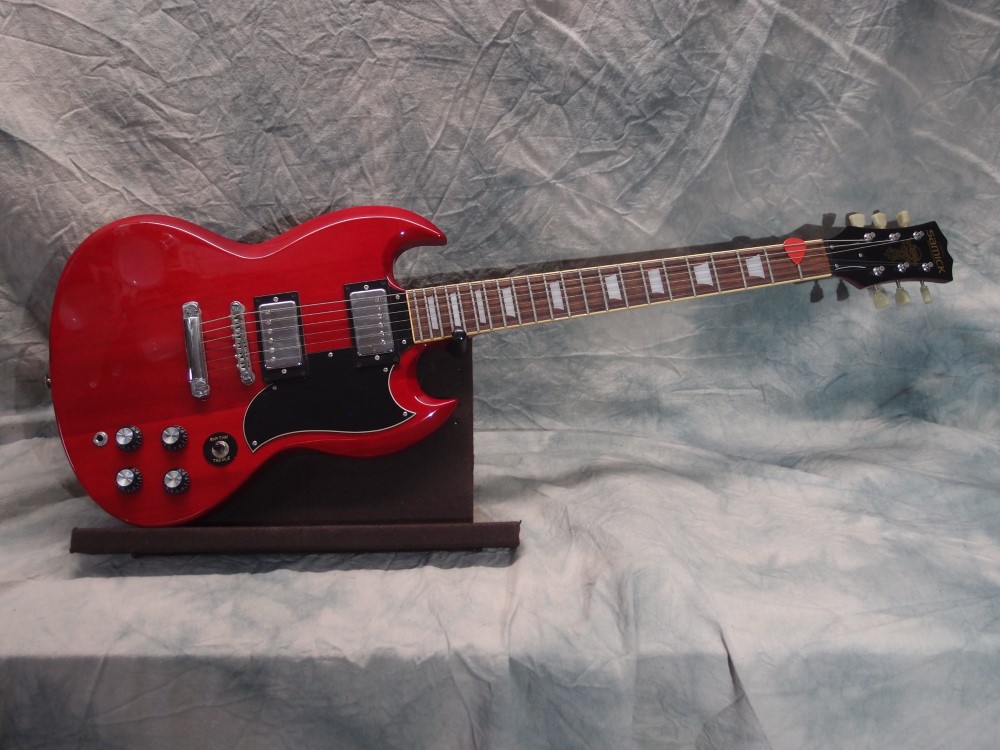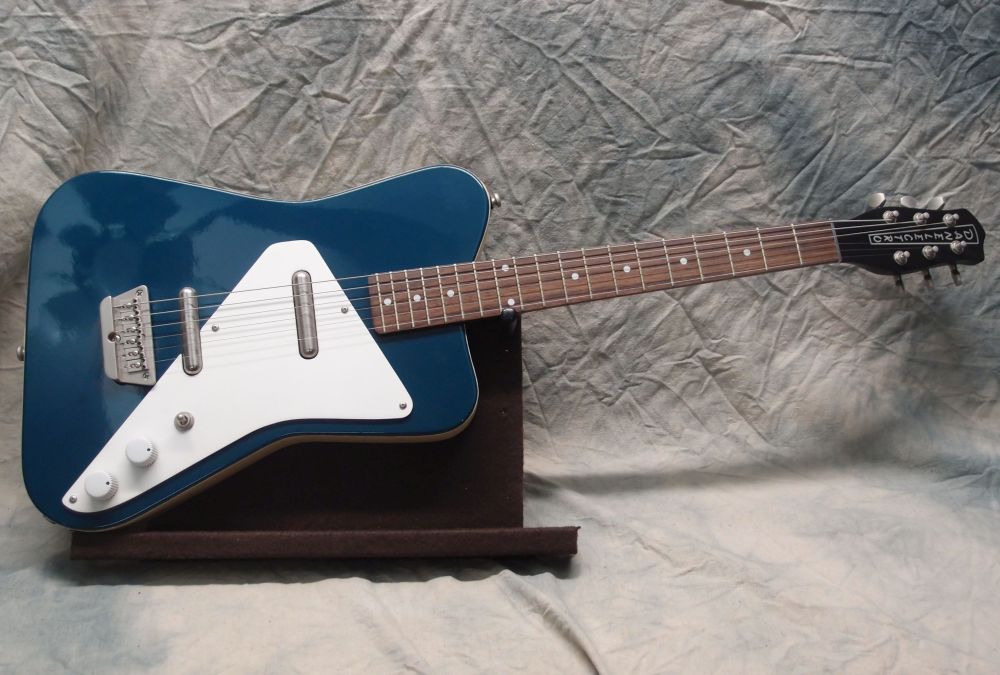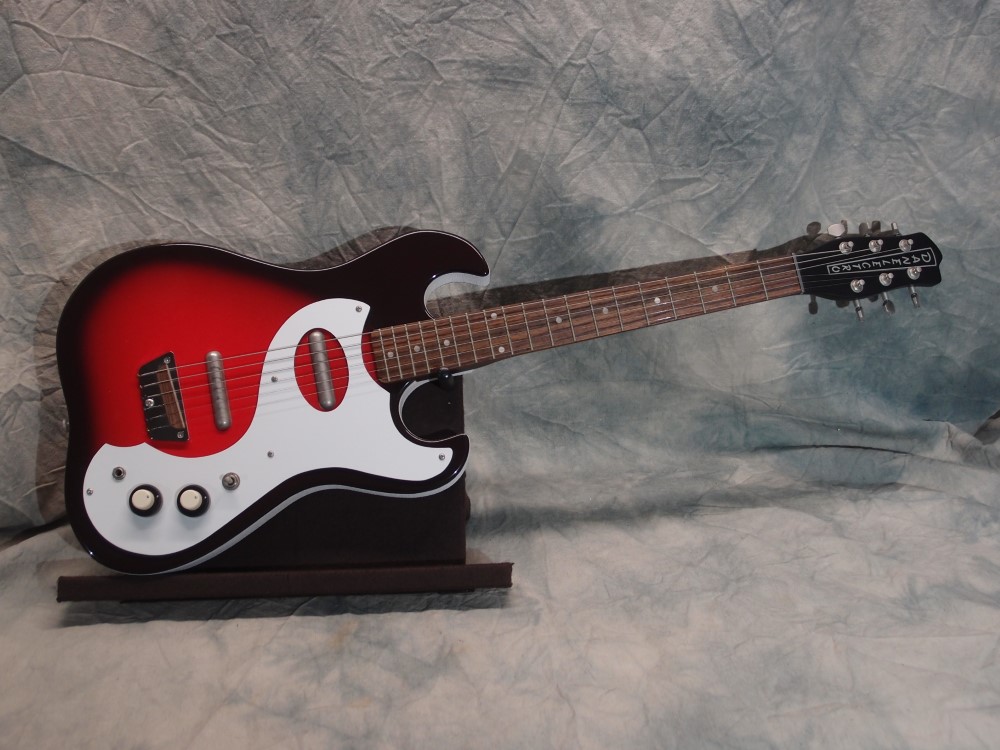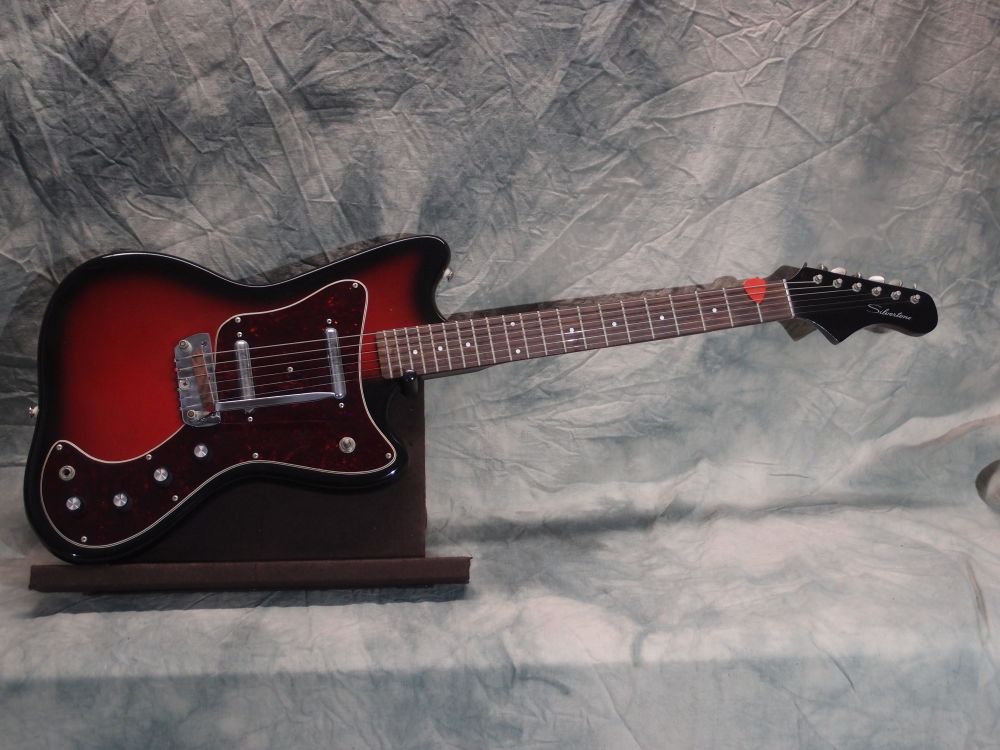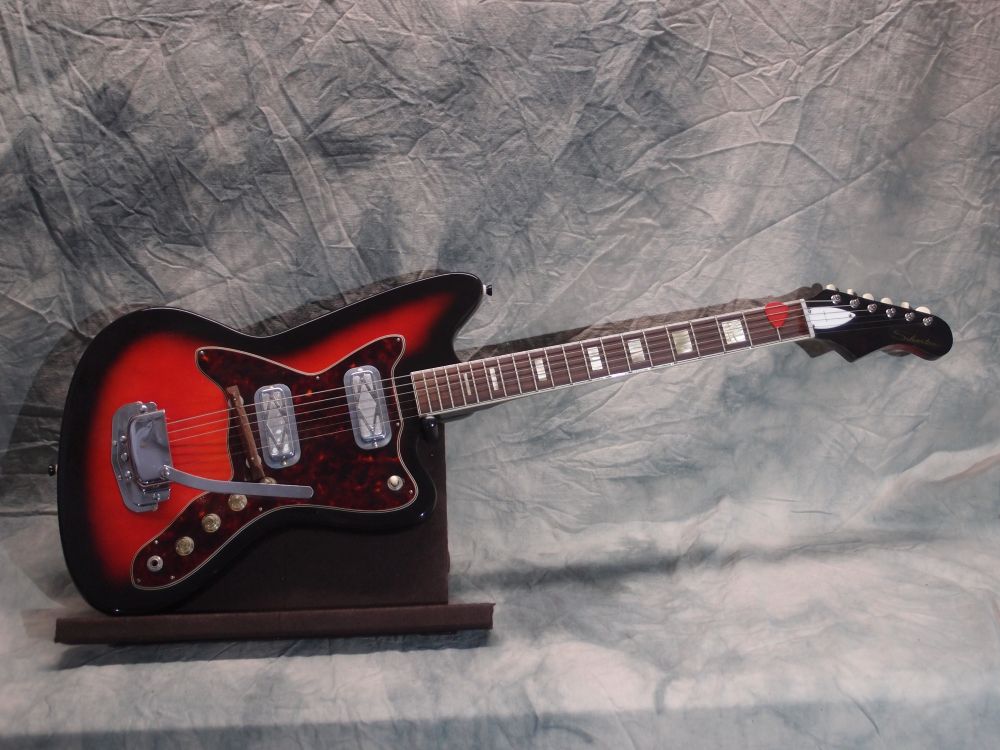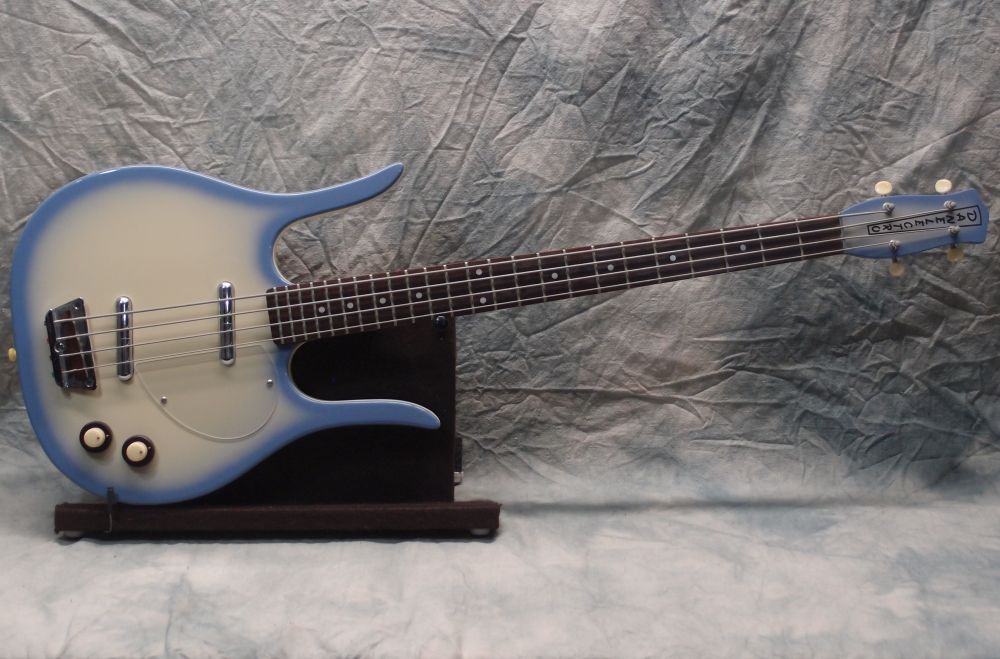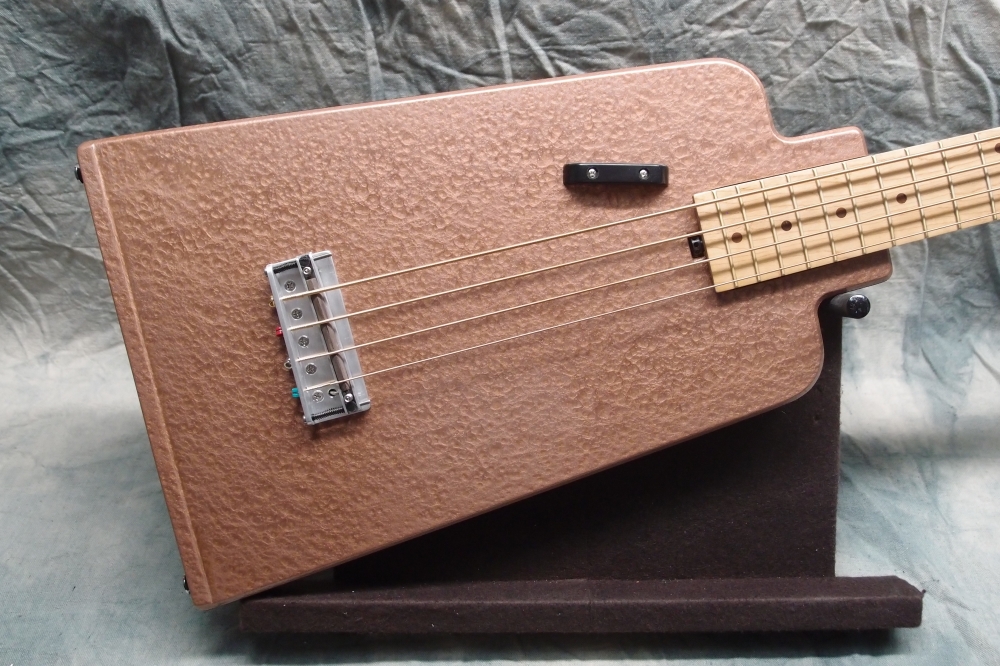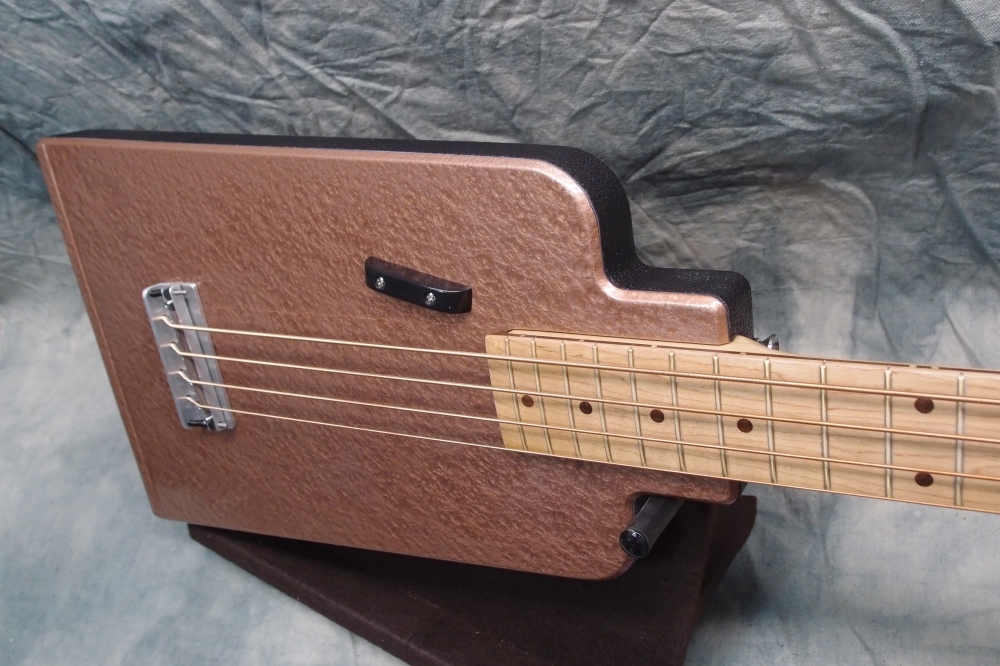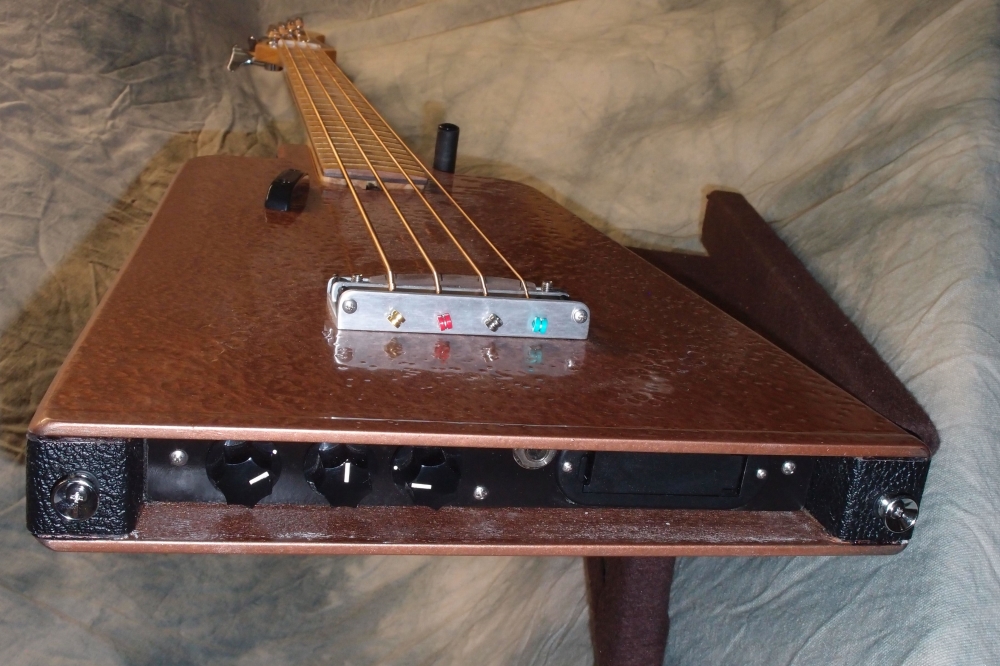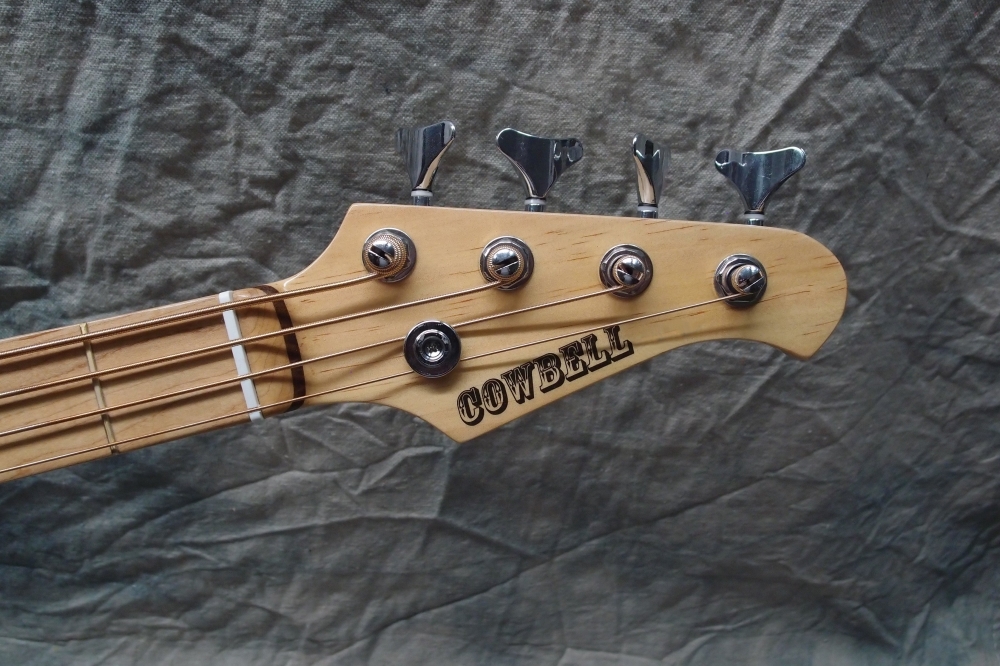Recent Edits





This is the big brother to the Silvertone 1448, vintage 1964-67. Construction is basically the same, but with a full-scale neck, two pickups, and a much better amp. For a lot of details, see the 1448 page. This guitar is in excellent condition for being almost sixty years old, and apart from cleaning and re-stringing, it needed nothing.
More: Silvertone 1457 Guitar & Amp ...
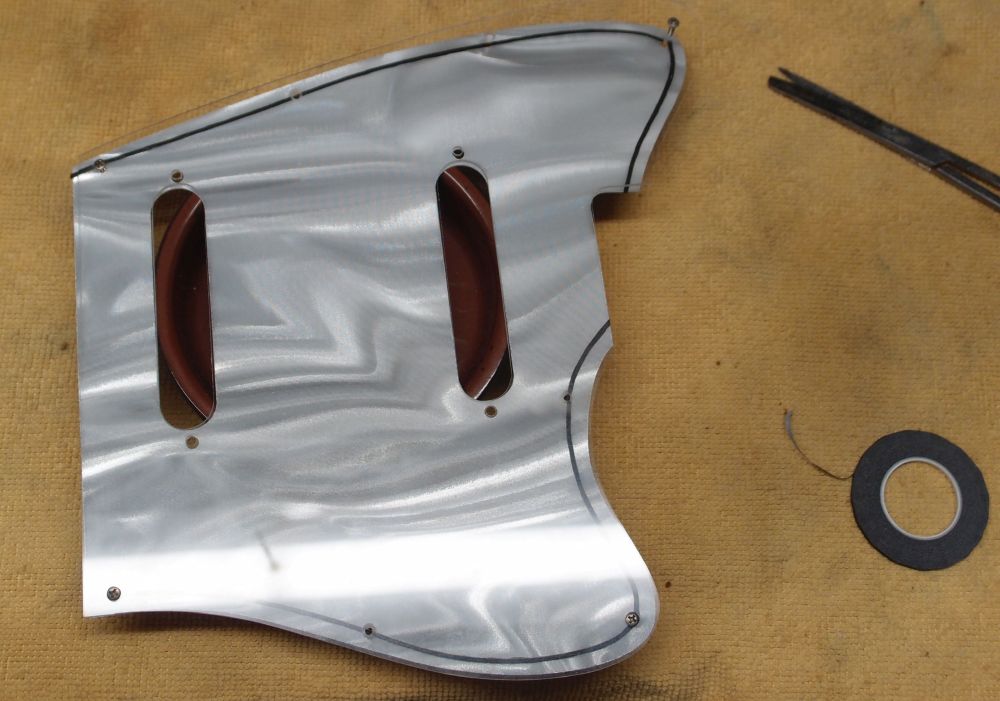
This wound up on the back burner for a while, but I finally got back around to it. The black stripe is 1/16" tape from the roll there, applied to the shiny under-layer. It wasn't that hard to apply, using the screw holes as guides. It's not awfully sticky, but should hold up well sandwiched between the clear pickguard and the body. You can get that tape at Hobby Lobby. I finished the pickup 'routs' with hand files.
More: At Least I Learned Something ...




This is the biggest of the Audiovoxes, weighing in at a full 12 pounds, with a 36" scale. The neck is a Brazilian Cherry (Jatoba) floorboard over maple, with a straight cutout headstock. There are over 100 marker dots. The body is veneered masonite over solid plywood, with Danelectro-style Tolex binding. There are also strap buttons, this instrument can be played vertically or horizontally.
More: Audiovox Electric Upright Bass ...
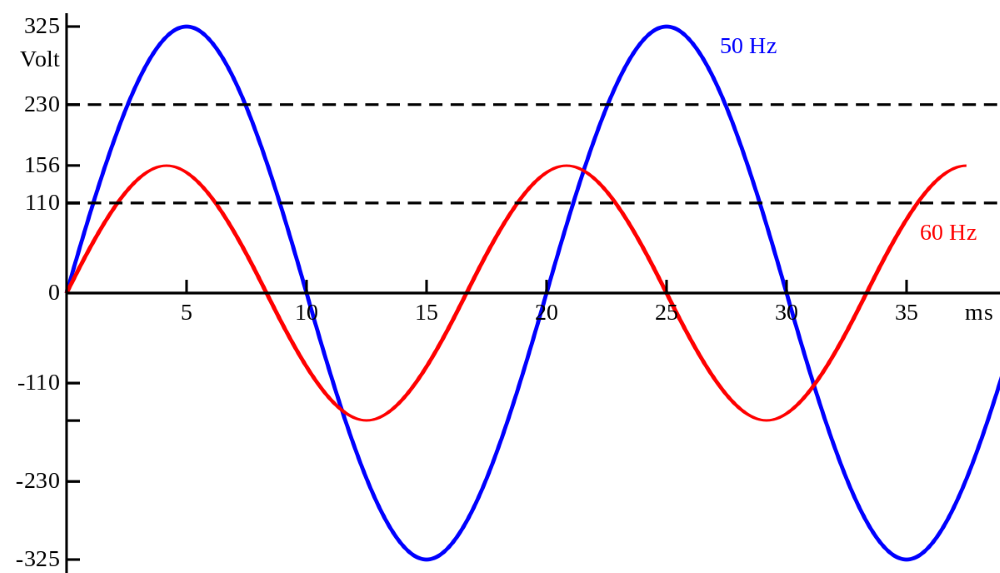
Multiple guitar pickups can be wired either in parallel or in series. Series gives a fatter sound, parallel gives a thinner sound. Almost all guitars have the pickups wired in parallel. That is why combinations on a single-coil instrument don't really build over the individual pickups. Pickup combinations on a Strat are known as 'quack' for their thin sound.
More: Pickups, Noise, & Shielding ...




This is another factory guitar, vintage 1960s, made by Danelectro and sold exclusively through Sears. The 1448 was one of the cheapest electric guitars in the Sears catalog, but it came with something special - it's own amplifier built into the hardshell case. There is almost no wear on this guitar, I don't think it was played much.
More: Silvertone 1448 Guitar & Amp ...
I've liked this band ( duo actually ) since the first time I saw this video on the UHF video channel because we didn't have cable. Corinne Drewery is not like today's squeaky singers, she can hit the high notes, and the low ones too - listen. This was their first and biggest hit.
More: Swing Out Sister ...




After successful and interesting experiments rebuilding 1448 and 1457 "Amp-in-Case" amplifiers, I thought I'd try something bigger. So I kept an eye on the eBays, and eventually came up with this - an early production Silvertone 1472, made by Danelectro and sold through the Sears catalog. It was fairly cheap because it wasn't working. However, the cabinet is solid, the aluminum faceplate and labeling are in good shape, all the knobs are there, and everything else can be replaced or rebuilt. The Tolex is in very good shape, and the corners of the cabinet are all pretty much intact. Much like buying an old car - a blown engine is easier to fix than a rusted-out body.
More: Silvertone 1472 Amplifier ...




This is my reference for guitar setups - a Japanese "E-series" Squier Stratocaster from the early '80s. This was an era when Fender-America was not doing their best work, while the Japanese models were superb.
More: Squier '62 Stratocaster ...




This is my attempt to recreate my very first bass, a "Montaya", as well as one of my first ventures into 'modding'. These SX's are great instruments. For 109 bucks you get an alder body with a beautiful 3-tone sunburst, a decent neck, functional bridge & tuners, and a flawless finish. What you don't get is any kind of useable pickups or strings. On this one, I installed a USA Fender pickup, my favorite d'Addario strings, and gave it a careful fret dressing and setup. I also added the tortoise pickguard, rosewood thumbrest, and ashtray for the looks only. At the time, I was going purely from memory, but I later found a picture of the original, and I got it dead right.
More: SX SPB-57 Precision Bass ...




This one is kind of a joke and an experiment in just how cheap you can build a guitar. The body is dry-erase board over plywood - no finish - with Tolex side binding. Dry-erase board is Masonite covered with Melamine. The neck is 100% Radiata pine, even the fretboard. The "inlays" are glitter and CA glue. The pickguard is the other side of the dry-erase board - 'chalkboard'. The pickup mount is a 57 cent switch plate.
More: Rickenbacker 4001 Bass 1 ...
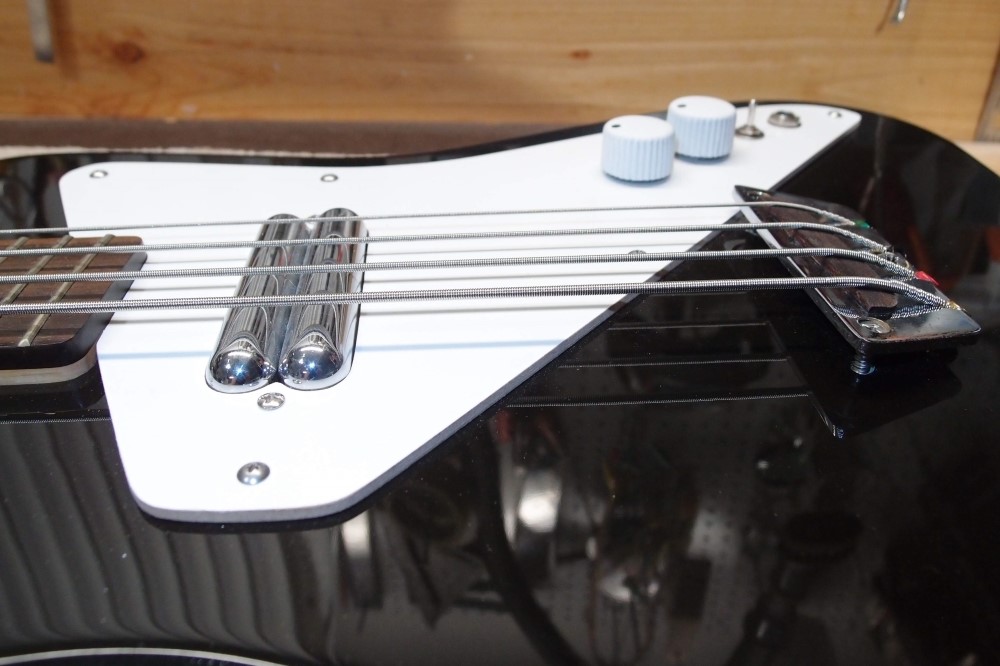
The classic Danelectro bridge is a study in simplicity. A chromed brass plate*, drilled and notched, with a rosewood sliver for a saddle.
More: Danelectro Bridges ...
I added some notes on this subject, see page linked below. I keep seeing truly horrific advice being dispensed online by luthiers, when the correct solution is easy and free.




Here are some catalogs from the two golden eras of Danelectro - the sixties and the nineties. Use the arrows to flip through the pages.
More: Danelectro Catalogs ...
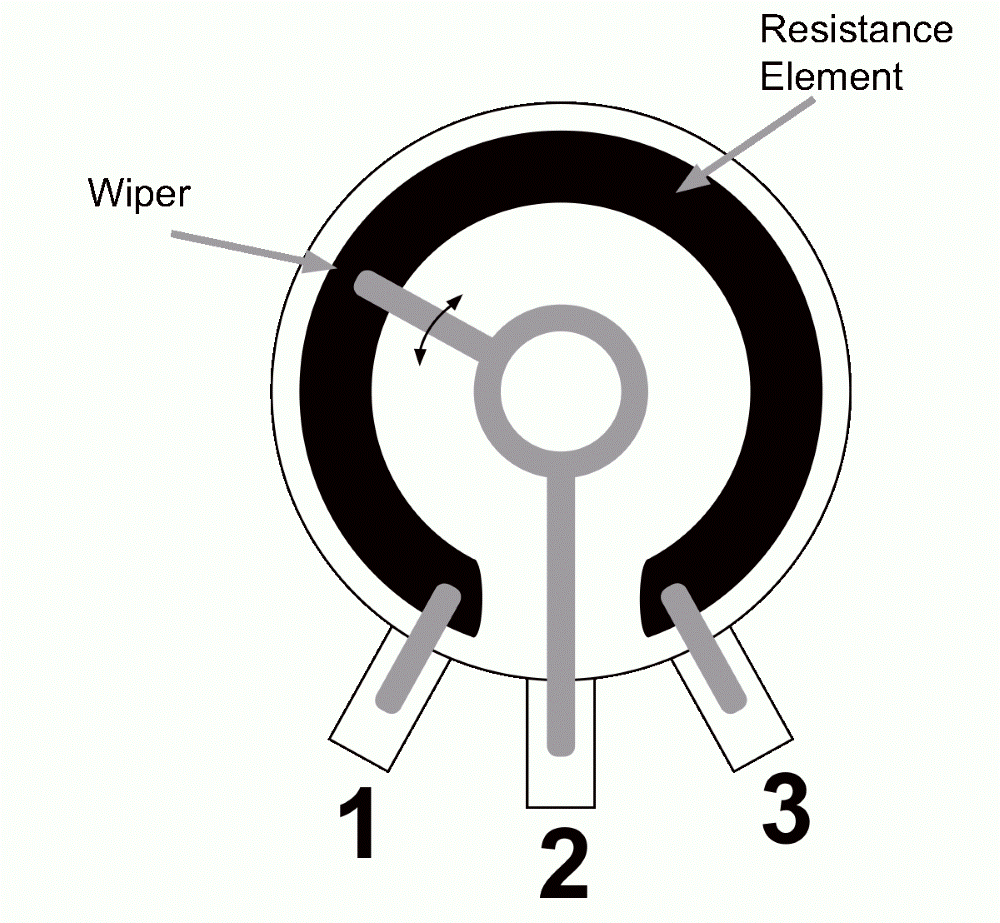
These are your standard passive volume and tone controls, and two more tone controls that are not so standard, but very useful. Passive controls can only take away, they cannot add. All diagrams are drawn with the pot upside-down - the way you would solder it.
More: Volume & Tone Controls ...




This beauty is Evets' reissue of a 1960s Danelectro Hornet. The solid-body Hornet has the same body outline as the Silvertone 1452, a sort-of cross between a 1457 and a Fender Jazzmaster. But unlike the slab-sided 1452, the body of the Hornet is a continuous curve, front and back, with a completely rounded edge. ( This is as sexy as a guitar gets, but makes it a little slippery on your knee. ) The reissue from Evets has the same contours as the original, and even the same 'lightshow' pickguard. The three-tone sunburst on this one was an exclusive to Guitar Center. I picked this one up as an 'open-box' from their subsidiary Music123 for a song, so to speak. The body was originally slathered in dullcote, which I polished off, resulting in a beautiful shine with just a bit of orange peel that I left.




This beautiful instrument was built from a teak cutting board that I got for free from Home Depot for review. 32" Eden neck, active electronics. Teak is hard enough for a simple oiled finish. This one was built with a minimum of tools, mostly by hand, to show that it can be done and how.
More: Osprey Bass (BC Rich Eagle) ...




Another early build for me - 2010, a reissue Danelectro neck on a built body. The finish is pearl automotive acrylic lacquer. The pickguard is actually clear with a piece of paper under it.
More: Danelectro Longhorn Guitar ...
